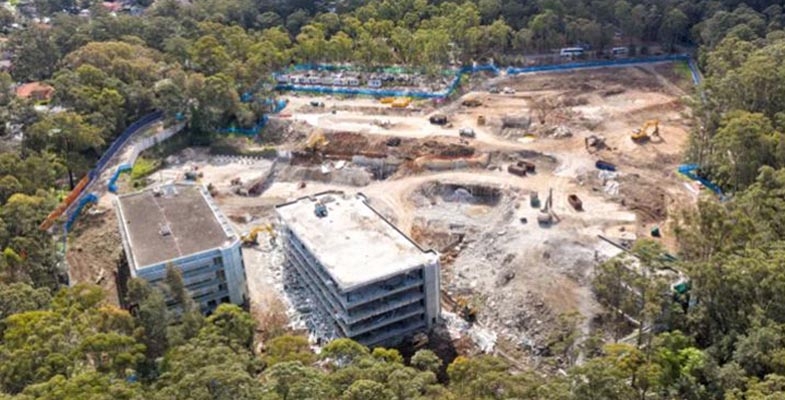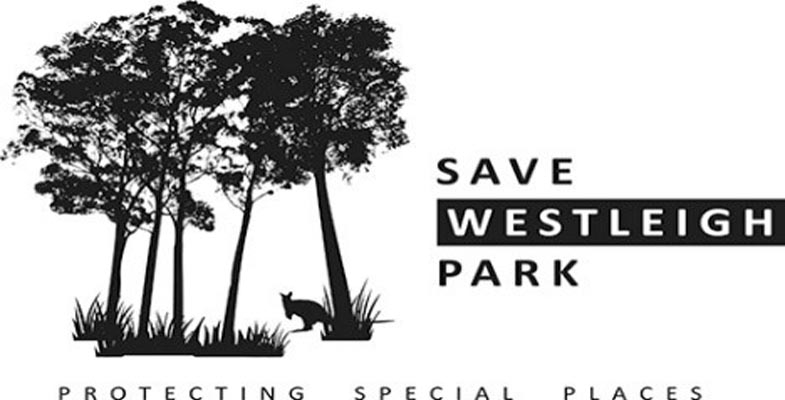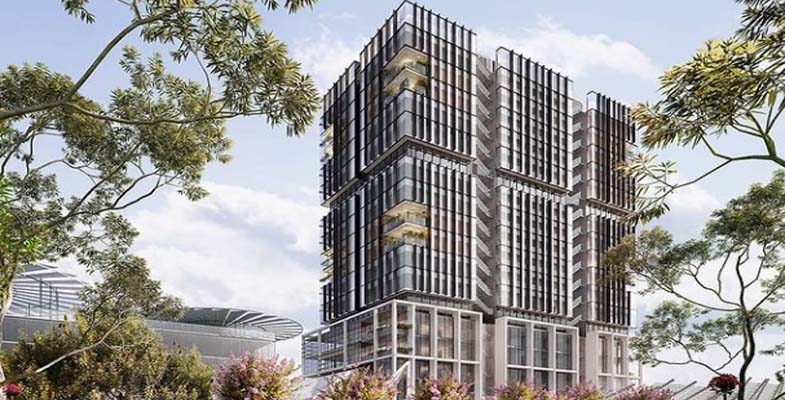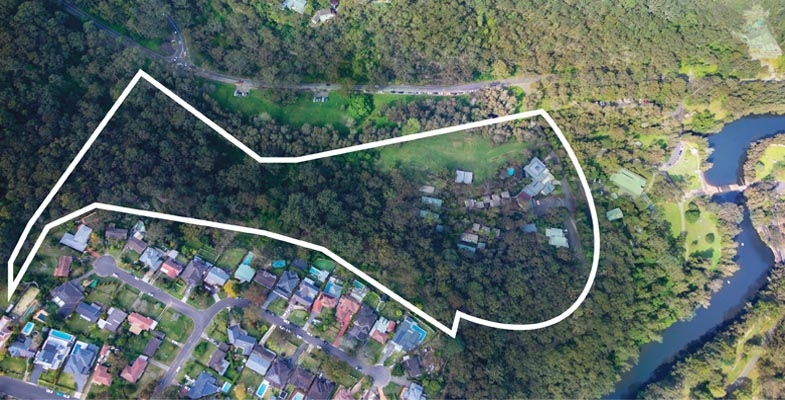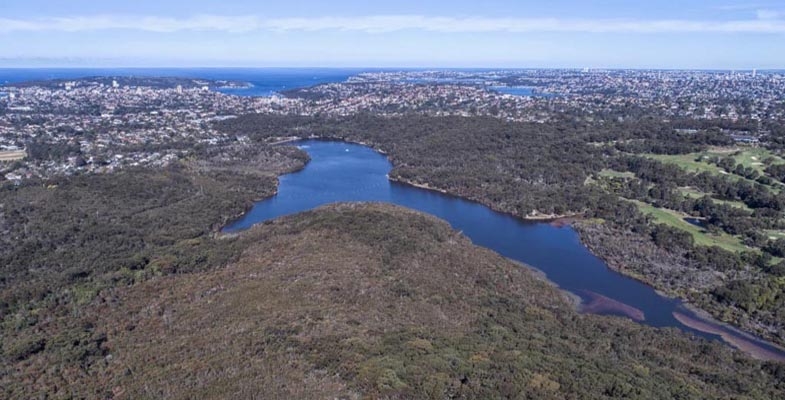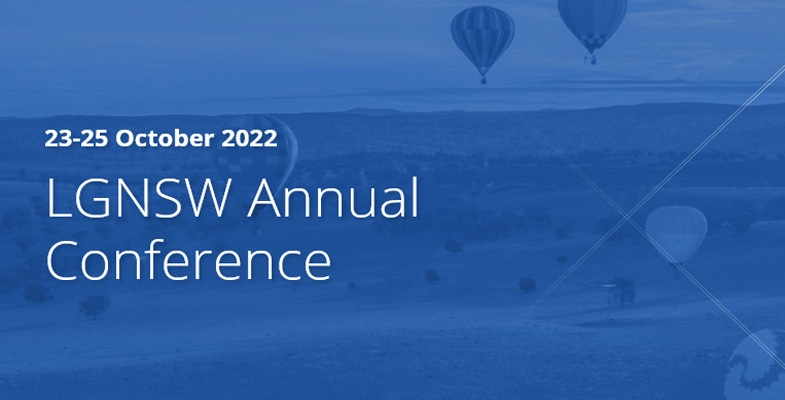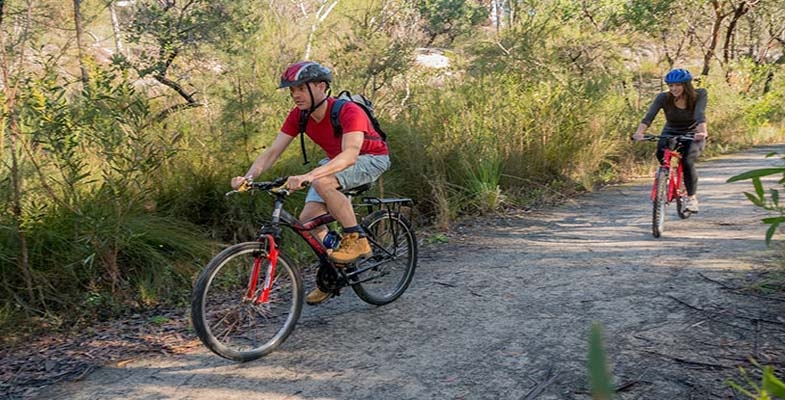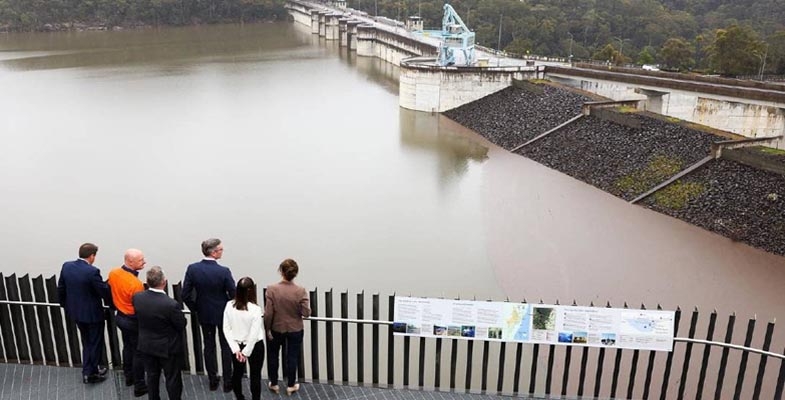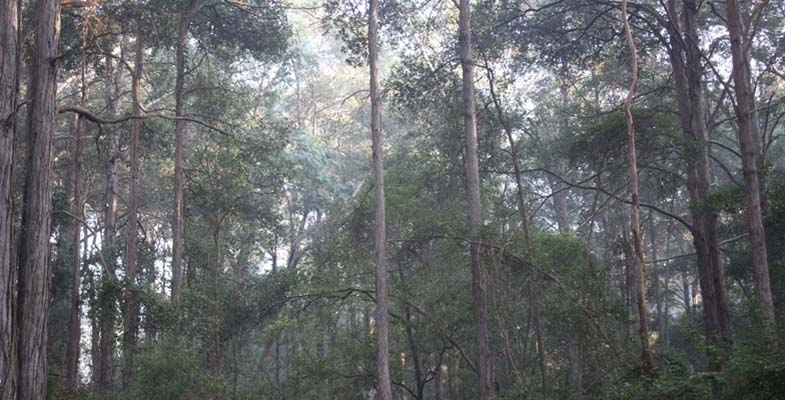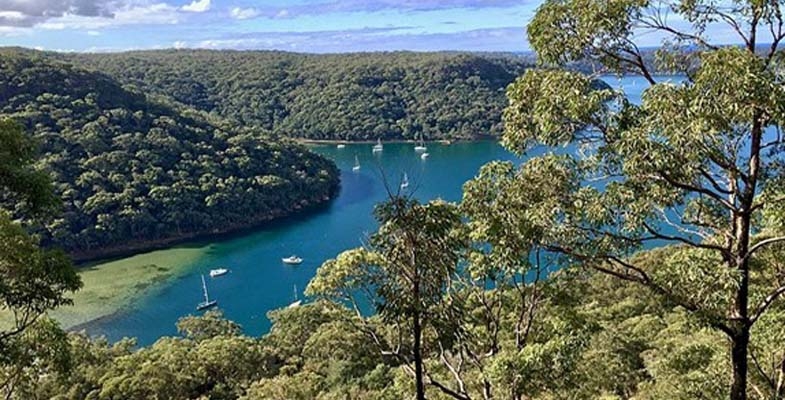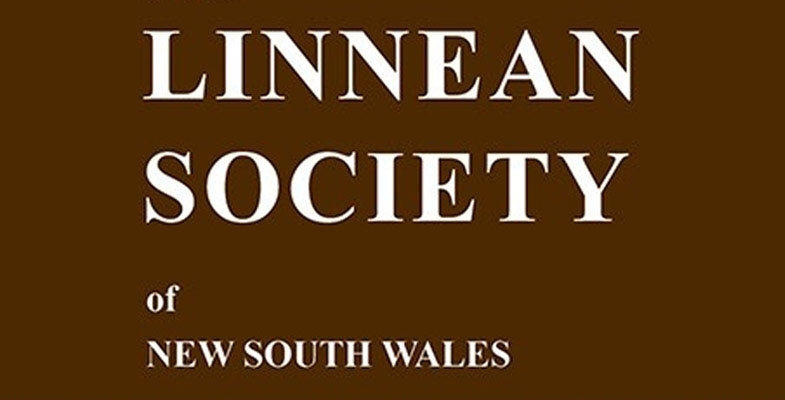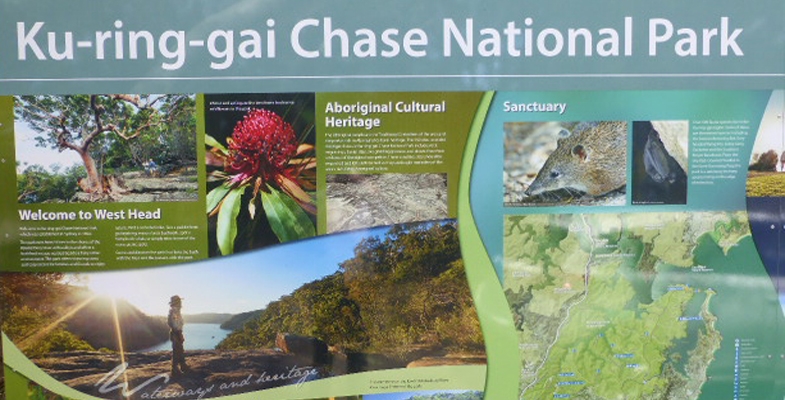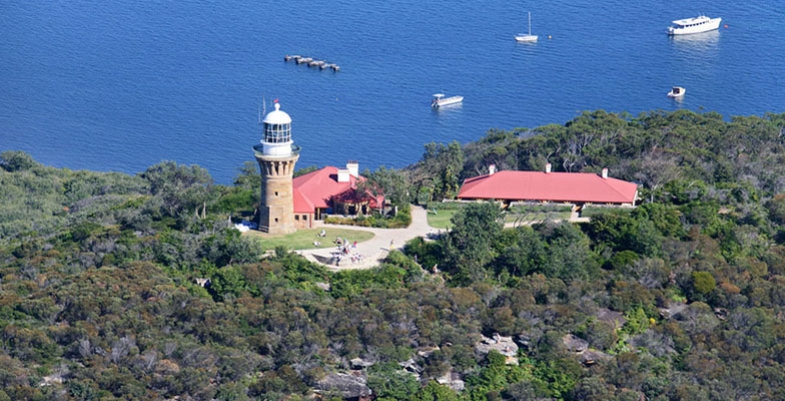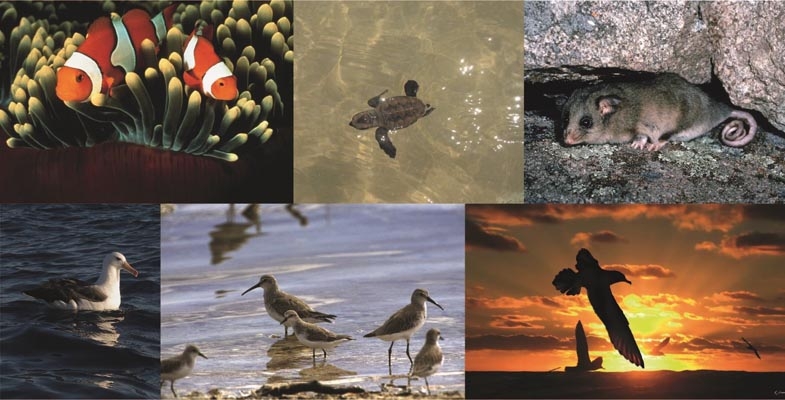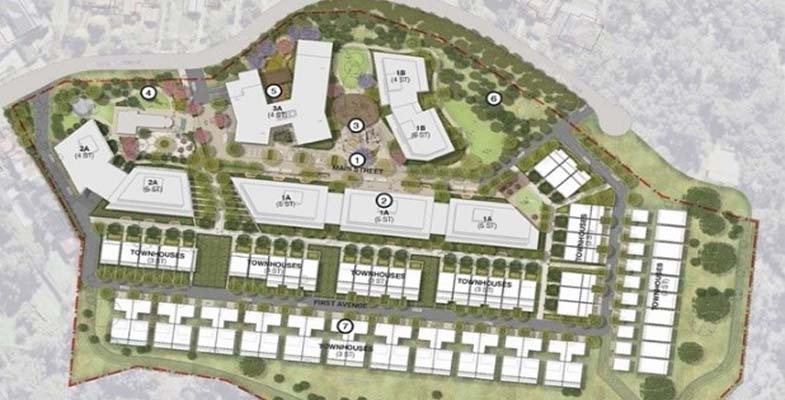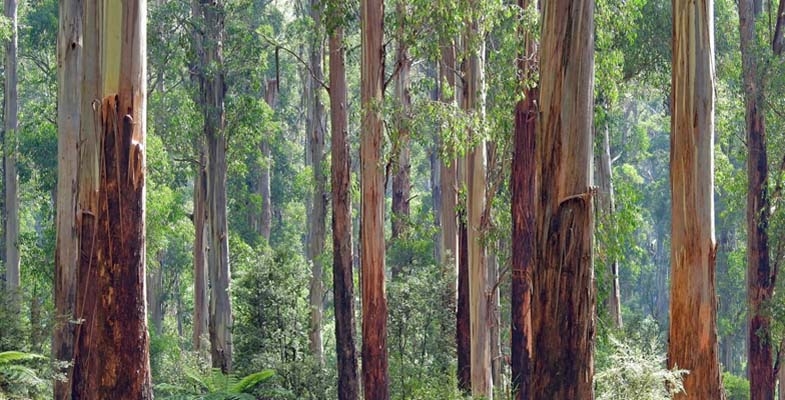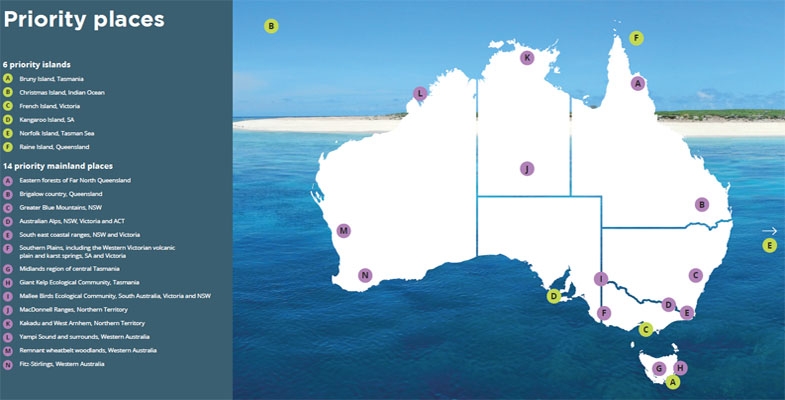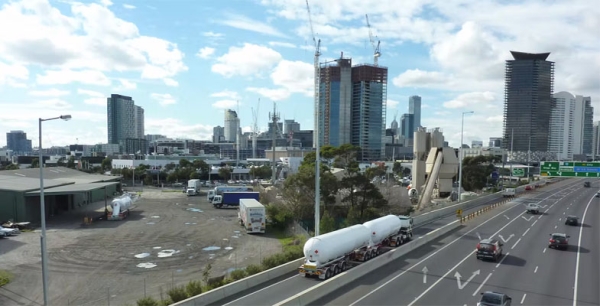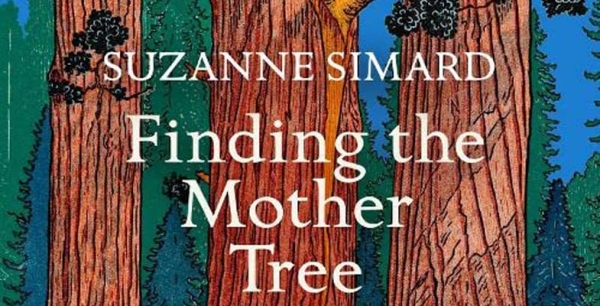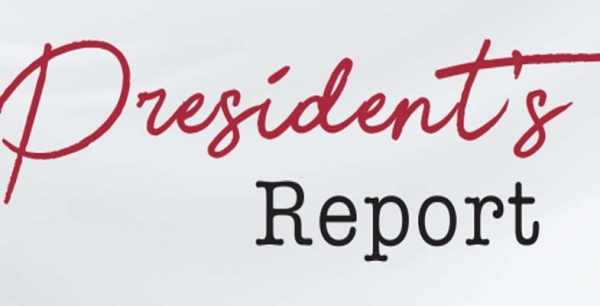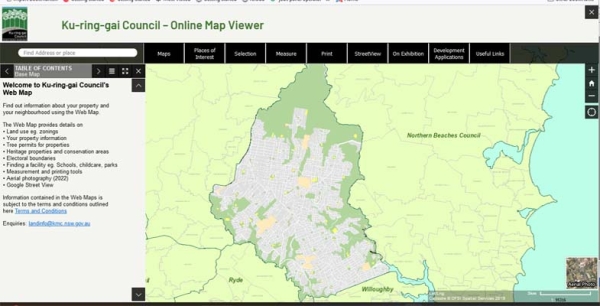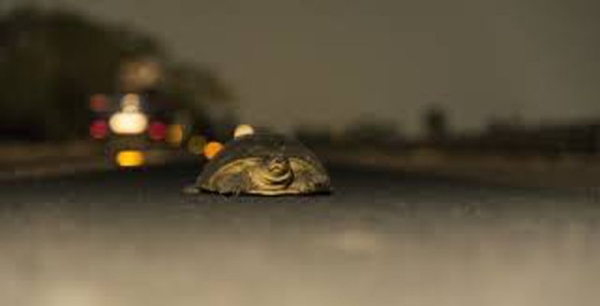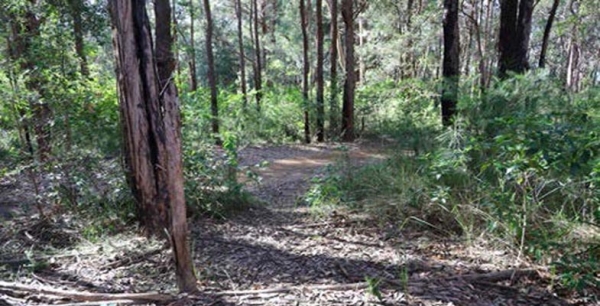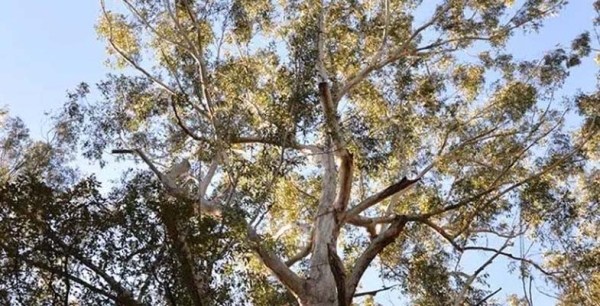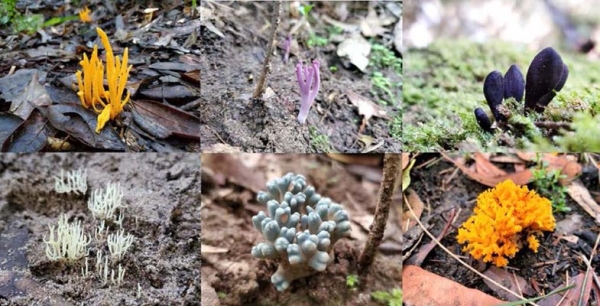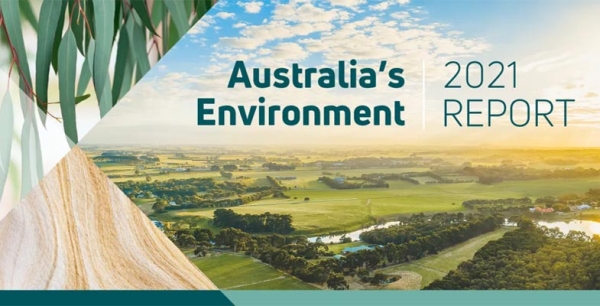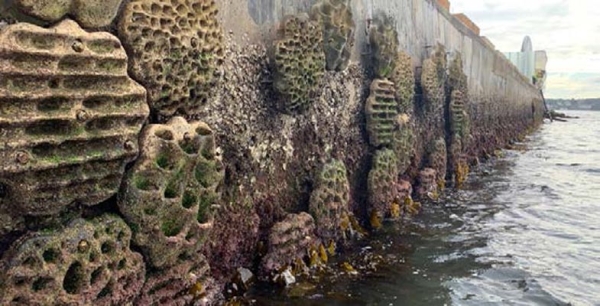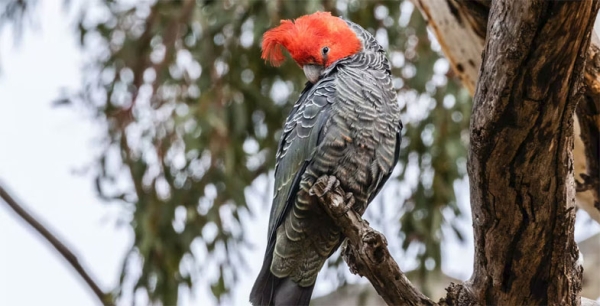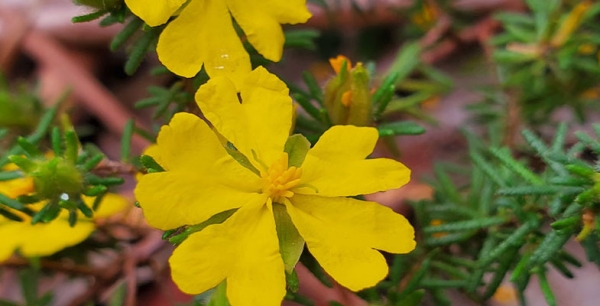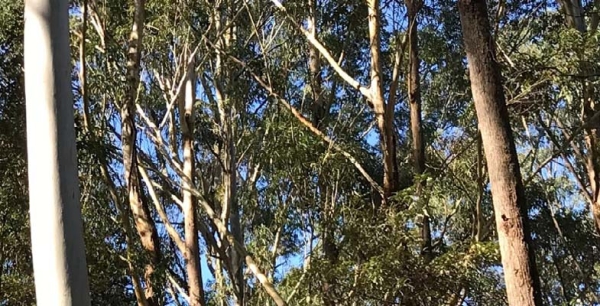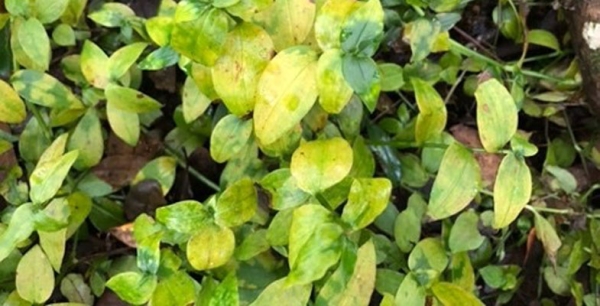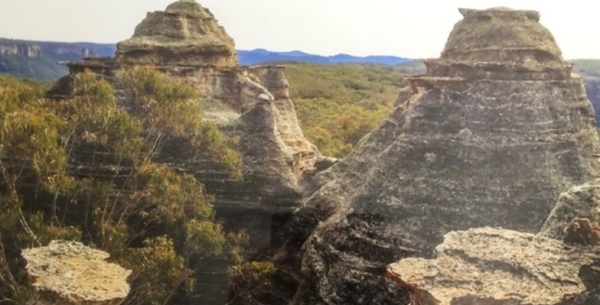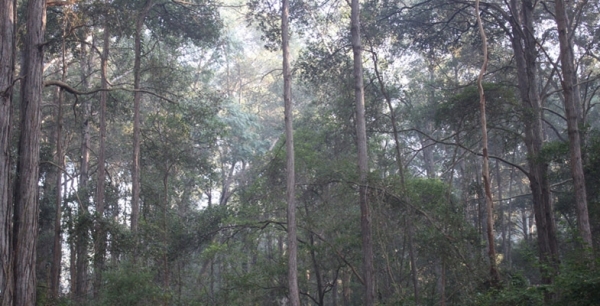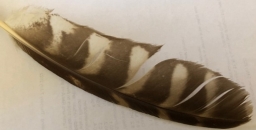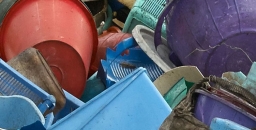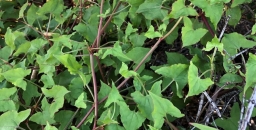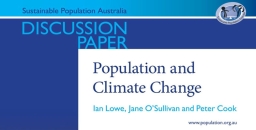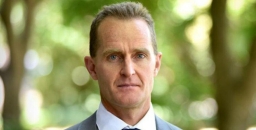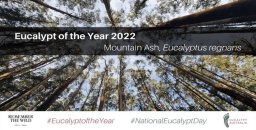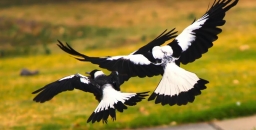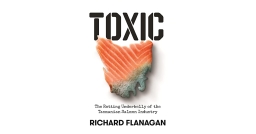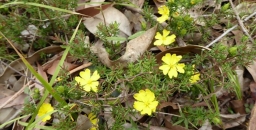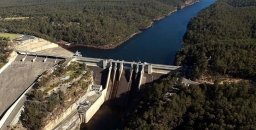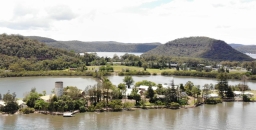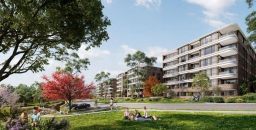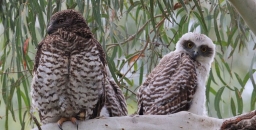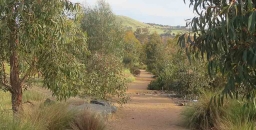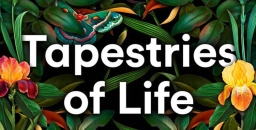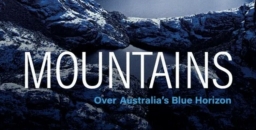Newsletter blog
Children categories
Mirvac development – who ‘owns’ the forest?
The Mirvac development of the former IBM business park at West Pennant Hills is proceeding. In September 2021 the application to demolish the existing buildings and remove 1,253 trees was approved. This has now been completed despite a lot of community concern about the disturbance to wildlife during the spring breeding season.
In October 2022 Mirvac’s Concept Development Applications for the next stage of the project came before the Sydney City Central Planning Panel. This involved the technicalities of subdividing the land into sections relating to the various types of building – 252 apartments and 165 medium density houses. Plus the removal of another 1,877 trees. There were many objections to the application for a height variation but the Hills Council had no objection to the apartment buildings being eight storeys instead of the LEP standard of six storeys.
So the concept DA has been approved. The only amendments to the conditions of consent related to protection of the Powerful Owls that have a nest site close to development footprint, use of wildlife friendly fencing and fauna sensitive lighting.
Forest in Danger found a big surprise in the documents submitted with the DAs. The future of the 10.3 ha of high quality forest containing critically endangered Blue Gum High Forest and Sydney Turpentine Ironbark Forest has been the subject of much controversy. The community believed they had a victory when Mirvac agreed to a Voluntary Planning Agreement dedicating the land to Forestry Corporation NSW so it could be managed as part of the Cumberland State Forest next door. This dedication of the land, defined as the Forest Dedication Land, was believed to be a condition of consent to be approved by the Panel.
Low and behold when the documents were submitted with the DA it was found that the Voluntary Planning Agreement dedicated ownership of the land to the minister for planning and would be only ‘managed’ by Forestry Corporation NSW. Not only that, Mirvac could request that the minister approve a change to the boundaries, and that the minister could approve or refuse the request at their absolute discretion and also request a change. So this land is no longer conserved in perpetuity. It appears that Mirvac can sell off some of the Forest Dedication Land. Forest in Danger has sent an objection.
Save Westleigh Park – a new community alliance
I have to admit I didn’t know anything about the location of Westleigh until the Westleigh Park Master Plan development was announced by Hornsby Council. Westleigh is a small suburb on a ridge surrounded by Berowra Valley National Park and bushland along Waitara Creek and the biobanking site of Dog Pound Creek. The only road into Westleigh is Quarter Sessions Road with access via busy Duffy Avenue.
For the past two years Hornsby Council has been developing a plan for the development of the land known as Westleigh Park. This area of 36 ha was bought by council from Sydney Water in 2016. The water reservoir next to the park is still managed by Sydney Water. Currently council land has:
- a 26 ha area of bushland that is riddled with unauthorised mountain bike tracks – see STEP Matters Issue 217 for a story about what should be happening here
- a cleared area of 10 ha that was a land fill site and is predominately tufted grasses and unmaintained Kikuyu and weeds
- a Rural Fire Service building on the northern side so that land has been used for training
There has been community consultation and now it is expected that a final draft of the master plan will go before council soon.
The plan is for the creation of an extensive sporting field complex on the cleared land including three sporting fields, small areas for passive recreation and road access and parking areas. One of the fields may be synthetic which is inappropriate for an area so close to bushland. Preparation of the land for this development will be a major expensive exercise owing to contamination, its topography and need to control run-off into the nearby bushland.
Major traffic issue
One essential prerequisite for the creation of the park is improved road access. Council is expecting to get approval from Sydney Water to extend Sefton Road from Chilvers Road around the reservoir to Quarter Sessions Road. This will increase traffic significantly along Sefton Road through the industrial area of Thornleigh and the quiet suburban areas of Westleigh. A traffic study has forecast an extra 1,500 car movements a day at the Sefton and Chilvers Road intersection.
One possible solution for the problems the development will cause is to reduce the number of sporting fields and make the road only open for emergency access.
New alliance of community groups
A group of ten local community groups (including Westleigh Progress Association, Friends of Berowra Valley, Protecting Your Suburban Environment and STEP) have formed a new alliance called Save Westleigh Park to keep both residents and businesses updated on council's current ill-planned schemes, as well as the significant impacts the development will have.
Council's community engagement with Westleigh residents has been poor. A recent council-run public meeting about the traffic impacts was only attended by 11 residents with seven apologies, as the meeting was by council invitation only. Yet obviously the traffic impacts are much wider than just those residents. Click here for the latest traffic study.
Action
Make your concerns about this proposed enormous regional sporting complex and its significant lasting impacts known through the traffic petition and the save Westleigh Park petition.
Eden Gardens office tower refused
Early in 2021 the owner of the Eden Gardens nursery complex on Lane Cove Road in Macquarie Park submitted a DA for an 18 storey office tower right on the edge of Lane Cove National Park. Ryde Council knocked back the application mainly for reasons of visual impact, traffic and height relative to surrounding areas.
The next stage would be a hearing before the North Sydney Planning Panel. In the meantime discussions were held with council and the panel trying to persuade the proponent to modify the plan to no avail.
The hearing was suddenly announced to be in December 2022. After all that time the applicant has not been able to obtain concurrence from the Rural Fire Service, Transport NSW and an Aboriginal Heritage Impacts Permit.
It was inevitable that the panel would refuse the application. Their determination summarised the situation that:
An acceptable redevelopment proposal of the site is more likely to be developed with close cooperation between the applicant and council. Such a dynamic has been lacking to date, as evidenced by the disagreements documented in the assessment report.
The next step will be a Land and Environment Court hearing in March. We hope the plans are considerably modified before that takes place.
A new owner for Naamaroo
In November 2022 the Friends of Lane Cove National Park alerted us to the news that Naamaroo was on the market. This area of land, 6.2 ha, is next to Lane Cove National Park with an entrance in Lady Game Drive. It has been owned by the Uniting Church and has been used as a convention centre and children’s recreation camp.
Letters to the NPWS and the Uniting Church calling for the bushland (at least) to be added to the national park were dismissed. Given the interesting history of the site, it was very appropriate to add the site to the national park.
Tony Butteriss, President of Friends of Lane Cove National Park, undertook detailed research into the history of the site as documented in the December issue of their magazine Regenavitis.
In summary, the Naamaroo land was part of the Moore Estate that gifted 238 acres from the estate in 1938 to establish Lane Cove National Park. The trustees of the estate retained control over the land. Later part of this Moore Estate was gifted to the Congregational Church (now the Uniting Church). There is a record of sub-division and transfer made in 1961. This land became the Naamaroo property.
The property has been bought by The King’s School for $14 million.
The land is zoned as RE2 or private recreation, one of the objectives of which is to protect and enhance the natural environment for recreational purposes. While this zoning places an emphasis on caring for the environment there is scope for development. However we have been advised by Kings that the existing uses will continue and the property will be available for general community use as currently applies.
The letter from The King’s School states:
As a new member of the Lindfield community, we look forward to getting to know all interested locals and hearing what makes Naamaroo special to you. As a school acquiring the property from a church, there may be some differences in the way the site is operated, and we want to partner with the community to ensure any change minimises impacts to nearby residents and local road users.
There is little doubt that this area was once part of the national park and we hope that the bushland will be cared for in the same manner as a national park.
Manly Warringah War Memorial Park receives heritage listing but what will be the impact of the Beaches Link tunnel?
Manly Warringah War Memorial Park Is an area of 375 ha that covers the Manly Dam, its catchment area and the immediate bushland area below the dam. The Save Manly Dam Catchment Committee has worked for many years on looking after the bush in the catchment and restoring the Mermaid Pool below the dam that was a rubbish dump site.
Manly Dam was given heritage status because of the area's long history going back to the 1890s when the dam was built to be the major water source for Manly. The preservation of the dam's catchment is one of the reasons that we are so lucky to still have this amazing area of quality bushland that supports high biodiversity including many threatened species so close to the centre of Sydney. Areas like this are rare so that the highest possible level of protection should be applied.
The local community through the Save Manly Dam Catchment Committee has demonstrated their strong support for the area with many hours put into removing rubbish at the Mermaid Pool and volunteer bushcare works. It is an excellent site for citizen science projects.
The park has a long history of use by the Gayamaygal people, with evidence of engraving sites, and the bushland vegetation provided bush tucker and material for a huge range of tools like rope, fishing nets, medicine, shields and canoes.
Manly Dam is an example of rare concrete-walled gravity dam that pioneered wall strengthening methods and technology and was a world first for its time. It no longer provides its original use as a water supply and now is a valuable recreation area.
At the declaration ceremony the Environment Minister and local member, James Griffin, claimed that heritage listing will help protect this treasured area and its stories for generations of Sydneysiders to continue enjoying into the future. But will it?
Beaches link tunnel proposal
The Beaches Link tunnels proposal is a massively expensive road project that is yet to receive funding commitments. It will greatly encourage the use of private cars and goes against the NSW Government’s commitments to reduce carbon emissions.
This video demonstrates the damage that the project will do to the catchment of the Manly Dam caused by the widening of Wakehurst Parkway. Bushland and flying fox habitat along Burnt Creek will be destroyed.
This article in STEP Matters Issue 209 provides more information on the environmental damage the project will cause.
There has not been any serious consideration of alternatives such as improved bus lanes or a metro to Chatswood from the Northern Beaches Hospital.
Prospects for better fauna protection on development sites
In October, at NSW’s Local Government Annual Conference, a motion calling for better protection of wildlife on development sites was passed unanimously. The government now has to agree to implement standards to ensure that native wildlife found on development sites are given a chance of survival. We have standards for occupational health and safety, contamination and waste management so why not caring for wildlife?
Currently an approved Fauna Management Plan is required before a development can proceed but the quality can vary. The plan explains how wildlife that is found should be handled. They are dependent on the experience of the ecologist writing the report along with the developer expectations.
Poor plans are becoming more prevalent as there is more development of greenfield sites and densification of suburbs with canopy cover and flora and fauna corridors. Some plans even provide for injured animals to be euthanised on site. Often wildlife carers have to perform rescues as animals try to escape or are injured.
It all started at the Mirvac site in West Pennant Hills and the fact that they were removing thousands of trees but the planning documents had very few provisions made for protecting the wildlife living in them. There were no requirements to check whether nests, hollows or burrows were occupied and then relocate the birds, possums, echidnas or wombats. It’s the same across all development sites and yet wildlife carers have to follow very stringent codes of practice for any of their interactions with wildlife. Plus all native wildlife in NSW is protected by law – so the question asked by the local community was, where are these protections? And what is happening that they are not being applied?
The issue was raised by some local Hills Shire councillors but the proposal for a motion was defeated by the liberal-dominated council. So the group turned to Hornsby Council. After much discussion between many councillors, community members, journalists, vets, wildlife carers and a lot of persistence Hornsby Council councillors agreed to present this motion before the conference in August.
As Cr Salitra said in presenting her motion to Hornsby Council:
Legislating standards for wildlife on development sites will provide certainty for all stakeholders – the developer, ecologists, tradespeople, wildlife carers and our community. Certainty in procedure will provide clarity on who and what these standards apply to for all stakeholders in a currently grey area. And they will result in more efficiency on development sites, where these repeatable actions become the norm.
Why has it taken so long to implement these standards?
NPWS cycling strategy
In STEP Matters Issue 213 we commented in detail on the new draft NPWS cycling strategy. This is a highly controversial issue so many submissions were made.
The final documents have now been published and can be downloaded from the NPWS website. As the website states:
National parks managers will now have guidelines to improve sustainable cycling experiences and manage unauthorised tracks in consultation with stakeholders, while fulfilling legal requirements to protect our natural and cultural heritage.
Compared with the draft the final documents are much simplified. There is now greater emphasis on the need to protect the environment and prevent damage being done by unauthorised tracks. We hope there will be enough funding and staff resources to actively close down and rehabilitate these tracks that have proliferated in recent years. There is likely to be strong opposition from the mountain biking lobby so a determined level of enforcement will be required.
There are two documents:
- the actual strategy
- guidelines for implementation
Submissions were highly critical of a point scoring system in the draft guidelines that takes into account a multitude of criteria for deciding whether a proposed track route is suitable. This seems to be highly discretionary. The proof of its effectiveness will be revealed in time. However the important decision up front as to whether or not a new track should be built or unauthorised track approved is now more definitely defined and simplified.
Warragamba Dam wall raising
Nothing has been happening with the Warragamba Dam wall raising proposal for some time. The idea was first raised by Premier Michael Baird in June 2016. The cost is prohibitive and the EIS has been roundly criticised for lack of detailed analysis of the impact on indigenous sites and biodiversity. Also the EIS relies upon biodiversity and cultural surveys conducted before the unprecedented wildfires of 2019–20.
The federal environment minister still has to give the go-ahead to a project that will damage the World Heritage Blue Mountains. There is no funding contribution promise from the federal government or commitment from the NSW Government.
Yet the premier, Dominic Perrottet announced suddenly in October that the project is declared to be critical state significant infrastructure. This apparently will be an election winner for the Liberal Government in western Sydney even though flood modelling shows that it will not solve the problem of inundation of some suburbs as much of the water comes from rivers that enter the Hawkesbury Nepean system below the dam wall.
Critical state development means it can progress more quickly through approval processes and will be more difficult to oppose in the courts.
The NSW Department of Planning and Environment is now reviewing further community input on the proposal to raise Warragamba Dam wall, following the release of WaterNSW’s response to submissions and a preferred infrastructure report. The response dismissed most of the concerns raised in the 2,500 submissions. It even opens the possibility for changing the World Heritage area boundaries, in an attempt to avoid Australia’s international obligations.
The report reveals that health officials mirrored the concerns of Sydney Water, saying they had:
…concerns for drinking water quality during the construction and operation of the flood mitigation works proposed.
The extra water held behind the raised dam wall was: ‘likely to affect water quality’ in the dam during periods of flooding because of ‘increasing turbidity, colour and organic material’ from new parts of the catchment.
Wildlife trapping netting banned in Victoria; NSW next please?
Victoria has legislated to enable backyard fruit growers who use the wrong netting and those who sell or advertise it, to be fined. The fine for using fruit netting that doesn't meet the new specifications will be $3,303 and also a fine of $660 will apply to anyone advertising the illegal netting or offering it for sale.
During the 2021–22 summer Wildlife Victoria found nearly 300 cases of wildlife caught and injured in domestic fruit tree netting. That ranged from flying foxes, which were the majority of cases, magpies, rainbow lorikeets, sulphur-crested cockatoos and possums. They suspect the numbers could be a lot higher as, in a lot of cases, the animals are already deceased or they may be unreported.
Domestic fruit growers will be required to use netting with an aperture of 5 × 5 mm at full stretch. A finger can’t get into that size.
Please contact your local MP or the NSW Agriculture Minister, Dugald Saunders, to request that the same legislation be enacted in NSW.
Norman Griffiths synthetic turf
We are still waiting for the review of environment factors for Ku-ring-gai Council’s project to install synthetic turf at Norman Griffiths Oval in West Pymble. See STEP Matters Issue 217 for more background. It is over a year now since council decided to proceed with the project.
We understand that council is waiting for the Chief Scientist’s report on guidelines for the use of synthetic turf to be released. That, we understand, was completed in August and is still sitting on the planning minister’s desk, probably until after the election. What has he got to hide?
On the subject of synthetic turf, the Natural Turf Alliance has a new website with lots of information about synthetic turf and the alternative of natural grass.
The Natural Turf Alliance is a registered association consisting of community groups, including STEP, committed to preserving and developing natural grass open spaces including sporting fields.
Byles Creek land zoning change approved by council
As reported in STEP Matters Issue 216 Hornsby Council voted in favour of changing the zoning and other conditions in the LEP in relation to land in the Byles Creek Valley.
This decision has now been translated into a planning proposal that has been agreed by the mayor and councillors to go to the state government for their approval.
Once approved by the government, this proposal will allow changes to the R2-zoned land to more environmentally sensitive C4 zoning. This will prevent any further subdivision of the large lots in the subject area with associated wholesale clearing to provide asset protection zones. There will be greater protection of the riparian zone which is the land adjacent to the watercourse, in most places 30 m wide on each side of the creek.
Four years ago members of the Byles Creek Valley Union were told by their local member, Dominic Perrottet, that funds were in place to acquire some of the privately held bushland and he promised that he would take steps to start the process. Despite several follow ups this promise is still to be actioned.
Plan to establish a UNESCO georegion in northern Sydney
The Friends of Ku-ring-gai Environment (FOKE) has initiated a fascinating project aiming to gain aspiring georegion status for the Ku-ring-gai region.
UNESCO global geoparks are single, unified geographical areas where sites and landscapes of international geological significance are managed with a holistic concept of protection, education and sustainable development. The Ku-ring-gai region is well known for its significant natural and cultural heritage values. The georegion would cover the national parks as well as the coastal cliffs and lagoons. An integral part of a georegion is the development of geotourism projects such as educational trails focussing on the geology and landscape.
FOKE has support from local councils, the National Parks and Wildlife Service, community groups and politicians. They have had significant support from the Australian Geoscience Council and the Linnean Society of NSW.
Linnean Society Symposium
The northeastern Sydney Basin is bounded by Sydney Harbour to the south, the Hunter River to the north, the coastline to the east, and the boundary of Yengo National Park to the west. Much of this area lies within the distinctive lower Triassic Sydney Sandstone outcrop with its spectacular geomorphology and characteristic floral communities.
At the symposium, 16 papers were presented on current research into the geology and geodiversity, flora, fauna and Aboriginal occupation of the region. The afternoon session promoted the concept of a Ku-ring-gai GeoRegion (click here to buy a copy of these papers).
Stephen Gale spoke on the origin of the Hawkesbury River and its varying paths; Wendy Grimm explained her research into the endangered lesser-known terrestrial orchid Genoplesium baueri; Michael Gillings and Vanessa McPherson presented their findings on local fungi (a welcome reminder of their talk to STEP last year); Jonathan Sanders gave clues to the vegetation you might find around local volcanic dykes; Doug Benson’s subject was the last glacial maximum and its effects on our plants; and Chris Mays’ group looked at mass extinctions in an end-Permian event and the causative role of climate change.
The Ku-ring-gai GeoRegion project aims to unify the much-loved values of Sydney’s northern natural areas through geosites and geotrails. The project includes Ku-ring-gai Chase National Park, the Northern Beaches coastline, Muogamarra Nature Reserve and the eastern section of the Berowra Valley National Park.
John Martyn, eminent geologist and STEP committee member, spoke of the unique geological formations; Ian Percival spoke on the Hornsby Diatreme whose western face he has worked hard to preserve for the public; John Illingsworth and Peter Mitchell showed how drones can help produce 3D photogrammetric models and digital elevation models, that is to say, fantastic pictures of the Northern Beaches cliffs!
Jayden Walsh described the varied fauna; Bob Conroy related Aboriginal sites to landscape features; David Robson noted benefits to tourism; Angus Robinson concluded the day broadening our local project within an Australia-wide movement: in 2021 the Australian Geoscience Council launched its National Geotourism Strategy. Its aim is to enrich nature-based tourism, the main motivator for travel to Australia, embracing the ABC of tourism: abiotic landscapes and geology, biotic flora and fauna and cultural Aboriginal history.
The symposium was ideal for participants with an interest in the area but not necessarily scientific training. The Linnean Society of NSW has done an excellent job with the symposium and the field day visiting our scenic wonders.
Since 2010 the Linnean Society NSW has been organising field symposia highlighting aspects of natural history. In November 2022 they hosted a symposium entitled Natural History of the Northeastern Sydney Basin. Thanks to Margery Street for this summary.
Ku-ring-gai Chase National Park draft plan of management
KCNP’s current plan of management is over 20 years old and its review is moving at a glacial pace. In August 2019 a series of discussion papers were released for public comment and ideas. It took until January 2022 for a summary of these submissions to be published. Then, finally, a new draft plan of management was open for submissions up until November 2022.
The plan needs to be updated to allow for the large increase in usage of the park and waterways and demand for facilities such as car parks, tracks and trails. Then there is climate change.
Nor does the plan mention the work being undertaken advocating for KCNP to be declared a UNESCO georegion. Success with this project will enhance international recognition and tourism potential of the high quality landscapes of the parks. A detailed plan of management is prerequisite for a successful nomination.
The main issue with the plan of management is that there is no plan; there are suggestions for adaptive reuse, precinct plans to come, proposed strategies, tourism initiatives and memoranda of understandings but few concrete proposals and timeframes on which to comment. It is mostly business as usual.
Barrenjoey lighthouse precinct
The future of Barrenjoey lighthouse has long been a bone of contention. The submission summary reported that adaptive re-use of heritage buildings at Barrenjoey Head is supported by some but not for short-term accommodation or other commercial purposes.
Nevertheless the government has just announced a proposal for Airbnb or short- term accommodation at the cottages on the headland. Turning these cottages into holiday rentals would not occur before 2025 following heritage and planning approvals, upgrade works and community consultation. This has sparked strong local community opposition. Time will tell what the outcome will be.
Successful habitat also includes darkness
In 2018 the Powerful Owl Coalition highlighted the importance of reducing artificial lights near bushland in the publication Protecting Powerful Owls in Urban Areas. They recommended avoiding public lighting that illuminated the full height of trees as this would impact both Powerful Owls and their prey and keeping lighting, particularly bright artificial sports lighting, away from riparian areas, other core habitat and nesting sites.
Since then, the Powerful Owl Coalition, STEP, Byles Creek Valley Union, PYSE Inc and the Powerful Owl Project of Birdlife Australia have been writing to Hornsby Council and other authorities about the importance of darkness for fauna, both nocturnal and diurnal as the ratio of light to darkness helps regulate many aspects of wellbeing for fauna.
Indeed, the effects of artificial light at night can be so profound that it can change reproduction, feeding, sleep, and protection from predators to the degree that apparent habitat cannot be used by some fauna species.
Since 2018 most of our submissions addressed artificial light proposals for Hornsby Park (the Quarry) and Westleigh Park as the proposals for increased use of these sites would include night lighting. Both these sites include known populations of Powerful Owls which have a conservation status in NSW of vulnerable to extinction.
In December 2022 the Powerful Owl Coalition wrote to Hornsby Council about the Beecroft to Cheltenham Bike Track, a track that passes through an area famed for its Powerful Owl population. As a result, council contacted the Powerful Owl Project and discussed these matters further with their co-ordinator.
As a result of the submission and these discussions, the Powerful Owl Coalition received a prompt reply from council. They were overjoyed. Huge steps have been made for the protection of wildlife, not just Powerful Owls, by the proposed lighting for the bike track and in the revised Australian Standard AS4282.
The specifications for lighting the Beecroft to Cheltenham Bike Track align well with the National Light Pollution Guidelines for Wildlife Including Marine Turtles, Seabirds and Migratory Shorebirds (Australian Government, 2020).
Further comments from council’s reply are given below:
The Coalition may be interested to know that our lighting consultant actually sits on the AS4282 committee as a co-opted expert and that the new revision of the standard (which should be coming out next year) includes spill lighting limits for Environmentally Sensitive Areas which includes ‘naturally dark areas including bushland, waterways, marine and coastal areas’.
The new standard will consider the impacts of spill lighting on plants, wildlife and ecosystems by applying limits when previously there were none. To the best of our consultant’s knowledge this is the first normative obtrusive lighting standard in the world to consider the impact upon biota.
Hopefully this should give the Coalition some comfort that the numerous stakeholders on the committee (formed by government, industry and lighting experts) are taking the matter of protecting our unique night time habitats seriously.
Suffice to say I am advised that council’s consultant has taken every effort to minimise light spill beyond the target area and into the canopy and that they ‘strongly believe in protecting the night time environment and [their] approach is to use best practice design to minimise light pollution/spill whilst still achieving the objectives of the project.
The Powerful Owl Coalition thank Hornsby Council for engaging such a knowledgeable and forward thinking consultant, for caring about the fauna of the ‘bushland shire’ and for using these standards before publication.
We look forward to these standards being applied in Hornsby and Ku-ring-gai, particularly in developments in and adjacent to bushland such as Hornsby and Westleigh Parks and Norman Griffiths Oval.
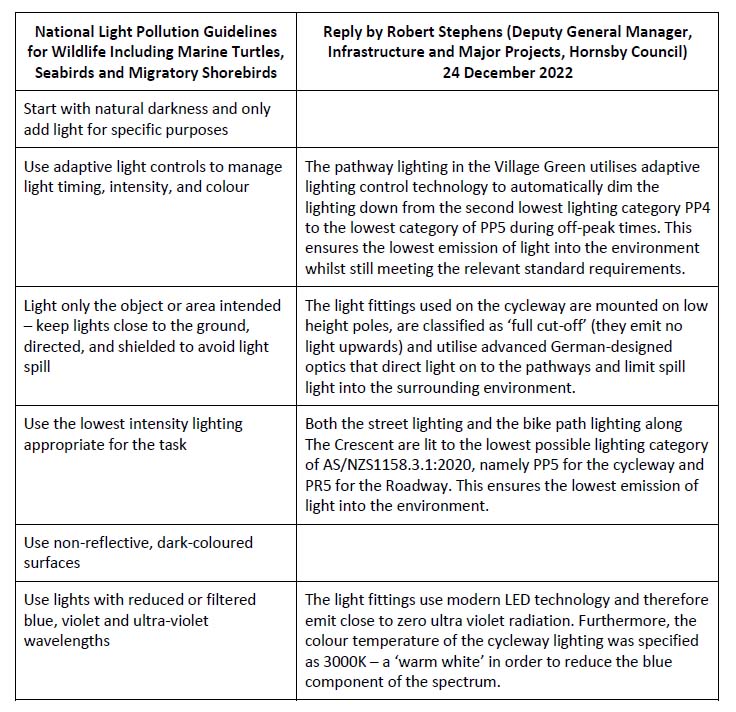
Development plans for the Lourdes Retirement Village should be refused
The owner of Lourdes Retirement Village at the end of Stanhope Road in Killara have been trying for several years to do a major redevelopment of the site. The Friends of Ku-ring-gai environment (FOKE) have been monitoring the process for some time and, as reported on their Facebook page, the local state MP, Jonathan O’Dea has spoken in parliament expressing many concerns.
Approval of a development like this would establish a very bad precedent of high rise buildings in a low density residential area on a ridge top intruding deep into a bushland setting.
Lourdes Village is on 5.25 ha on the edge of steep bushland in Garigal National Park. It currently has 108 independent units, an 83-bed aged care home and 49 serviced apartments. The owner, Stockland, is proposing to rebuild the entire complex and increase dwellings to 141 independent units, 110-bed aged care home. Sixty-three medium density townhouses would also be built on the southern and eastern part of the site. The nature of the village will be changed from a focus on senior’s accommodation to a more general residential complex. Other planned features include landscaping works, 1400 m2 of communal space, new internal roadways, a community centre, swimming pool, a pavilion for outdoor functions and 398 car parking spots.
This sounds all very good as a place to live but what about the bushfire risk of being on the edge of the bush and the impact buildings 22 m high with a high number of residents will have in this location surrounded by low density housing?
The proposal would result in the population of the site rising from about 275 to 546 people, but with only a small increase in the number of beds for the aged. There is only one residential road into the area that ends in a cul-de-sac.
The proposal could only proceed if Ku-ring-gai Council’s local environment plan is amended to accept the proponent’s intention to greatly increase the nature of the ‘village’, namely:
- change the zoning from low-density to medium‑density residential (R2 to R3)
- change the maximum height of the buildings from 9.5 m (the usual R3 limit) to 22 m to allow for up to six or seven-storey residential flat buildings
- double the floor space ratio controls from 0.3 to 1 to 0.75 to 1 so that 389 car parking spaces can be incorporated
An illustrative master plan is shown below (source: Plus Architecture)
In recent years the Village has been rundown with units whose residents have left or died remaining vacant. This has contributed to the destruction of a sense of community for the remaining residents. The maintenance of some buildings and services has also been eroded since an earlier Stockland development attempt in 2018 was comprehensively rejected, including by Ku-ring-gai Council and the NSW Rural Fire Service.
Since the plan was submitted Stockland has sold all its retirement village developments to a private equity company, Levande which has taken over the development at Lourdes.
Local residents are strongly opposed as it is out of character with the surrounding low density housing. It will generate additional traffic onto a dead end street. Evacuation of residents in the case of a bushfire would be difficult.
Ku-ring-gai Council is opposed to this proposal as it has been to previous plans for reasons of bushfire risk and the inappropriate location for this type of development.
Next stage of the planning process
The proposal has been submitted as a Gateway proposal to the Department of Planning. It was assessed by the Sydney North Planning Panel and was accepted in July 2022. A period has been set for further submissions from the public (now closed) and some additional reports were requested by the panel. It is now before the Minister for Planning for final Gateway approval that could allow it to go to the development application stage.
Bushfire risks
One concerning aspect relates to the confirmation in the documents provided by the proponent that the bushfire protection standards will be met even though the risks of the site are rated in the highest category. They commissioned from Blackash Bushfire Consulting, a report that misrepresented RFS' current position as ‘endorsement’ of the rezoning. In fact, the RFS did not give approval but said analysis of the risks could be deferred to the next stage when more detail would be available about the building designs.
The assessment has to take into account the difficulties of evacuating the large number of aged residents. Statements have been made to the effect that the townhouses on the southern side will act as a shield against fire. Great protection for those residents living in these dwellings! The plans refer to shelters being provided within the site.
Ku-ring-gai Council has written a scathing submission to the planning panel. They are concerned a development like this will create the wrong precedent for this type of development to be accepted in a location like this. They commissioned an independent assessment of the bushfire risks.
The main conclusions made by council in their submission are:
- The proposal fails to demonstrate protections to the proposed increased population on the site, including vulnerable elderly, in an environment of changing climate patterns and the expected increased incidence and severity of fire related events.
- The exhibited bush fire report attached to the planning proposal contains no detail to substantiate the claims of safety to citizens.
- The planning proposal fails to provide transparent exhibited bushfire related evidence to warrant the departure from key strategic considerations that are applied to all other sites across the LGA and NSW and that, if approved, would set precedents detrimental to key work related to bushfire safety.
- Detailed design evidence pertaining to bushfire aspects cannot be deferred to the development application stage, it is required at this planning proposal master plan stage to determine if the increased dwellings and population on the site is warranted or not.
As Jonathan O’Dea said in the speech to state parliament:
I am seriously concerned that the proper planning and assessment process is at risk of being subverted for this site. Approval is not in the public interest, and I urge the new owners to rethink their plans. In any event, I believe the Minister for Planning should stop the planning proposal at Gateway.
Some good news for the EDO
The Environmental Defenders Office (EDO) has been struggling to cover demand for its services since 2013 when the Federal Government ended its funding. The states have also cut funding so they have had to depend increasingly on donations and pro bono services.
There was good news in the October Budget where this funding has been restored with $9.8 million over four years going to the EDO and Environmental Justice Australia plus a commitment for continuing funding of $2.6 million pa after that.
Let’s end native forest logging
NSW has two million hectares of public native forests along the coast. They are home to diverse wildlife and myriad forest ecosystems. Currently the primary use of these forests is timber production. Native forest logging takes place under regional forest agreements that are supposed to provide for ‘sustainable forest management’. Yet there are numerous examples of scarce hollow bearing trees and trees that provide koala habitat being felled. Forestry Corporation has been fined by the EPA multiple times for breaching forestry rules.
The loss of large areas of forest during the Black Summer bushfires has made the habitat provided by these forests all the more critical. Several species have been added to the threatened list since the fires, such as the koala, gang-gang cockatoo and greater glider.
These forests are also important for filtering water, slowing floodwater flows and storage of carbon. Forests can also provide opportunities for tourism and recreation both active and passive, such as bike riding, sightseeing and bushwalking.
Petition signed by over 21,000
In an attempt to end native forest logging a petition was launched by NSW Young Greens Indigenous Officer Takesa Frank and the Nature Conservation Council. It received more than 21,000 signatures which has forced parliament to respond.
The petition called for the NSW government to:
- develop a plan to transition native forest logging to 100% sustainable plantation forestry by 2024
- in the interim place a moratorium on logging until the regulatory framework is applied in line with the Natural Resources Commission recommendations
- immediately place high conservation value forests into the National Park estate
- immediately ban the use of native forest materials as biomass
The responsible Minister for Agriculture, the Hon Dugald Saunders, was dismissive. He claimed that the views of the 21,000 people who signed the petition are insignificant.
Some of the government’s arguments made in their response can be refuted, for example:
- Cutting down native forests is environmentally sustainable
Response: Current practices are destroying biodiversity such as loss of koala habitat and increasing the number of threatened species.
- Only a minority of people care about the issue
Response: A huge survey commissioned by the forestry industry in 2016 found that 70% of people in cities and 65% in regional areas are against native forest logging.
- Native forest logging is financially viable
Response: This industry is barely making a profit.
- Logging native forests will help overcome the shortage of construction timber
Response: The timber used by the construction industry is almost exclusively plantation pine. Meanwhile our native forests are chipped and shipped overseas for paper products.
- It is better to use local timbers than those from overseas
Response: Illegally logged timber is already banned from being imported to Australia, and many imported products meet the Forestry Stewardship Council (FSC) certification, a standard that NSW Forestry Corporation does not meet, because of its unacceptable impacts on biodiversity.
- Logging native forests employs 20,000 people
Response: The number of jobs is a twentieth of the total the minister claims, at 1,000 jobs across the whole of NSW. There are 20,000 jobs in the sustainable plantation industry
Cost-benefit analysis of the industry In the South Coast
A study by Frontier Economics found that there is economic benefit from ceasing native forest harvesting in the Southern and Eden forest regions of NSW. The economic analysis measures the stream of costs and benefits over a 30 year period to 2051. The net result was a gain of $62 million if the state-owned native forests are no longer harvested.
The report took a simplified approach by restricting the analysis to compare the existing operations with the creation of a mountain bike park. This covered:
- costs: loss of value of harvested wood and construction and maintenance of mountain bike recreation area
- benefits: avoided costs of harvesting wood and processing, value of carbon credits, economic value of recreation
More complex factors were not included such as the value of wildlife saved and visitor tourism apart from mountain biking.
In conclusion, Frontier Economics found that Forestry Corporation NSW’s hardwood business made a normalised profit of $0.4 million in the financial year 2020, and an average normalised profit of $2.3 million over the five years to 2020. This is a very small profit and significantly smaller than the $64 million five year average over the same period earned by their softwood plantation business.
This poor return should be taken in context with the economic benefit from ceasing native forest harvesting and obtaining environmental and recreational services from the forest. This, along with the environmental concerns, has led Victoria and WA to decide to cease logging their native forests and to provide significant financial support to the industry to transition to a greater focus on plantation operations and other sectors of the economy. Now it’s time for NSW to also make the commitment.
Private land forestry
Currently, logging operations on private property in many areas have dual oversight from both the state government and local councils. Local councils have the ability to limit and control logging operations within their region. Just this month the National Party tried to revive the ‘koala wars’ by introducing a bill before the NSW parliament to remove this control. Fortunately several Liberal MPs threatened to vote against the bill and it has been withdrawn.
30 x 30 Biodiversity Agreement
There is a plethora of international agreements that relate to the protection of the Earth’s biodiversity. The overarching convention is the Convention on Biological Diversity (CBD) that was signed by 150 government leaders at the 1992 Rio Earth Summit. Examples of other agreements are the Ramsar Convention that aims to protect internationally significant wetlands and the Convention on International Trade in Endangered Species of Wild Fauna and Flora (CITES). They don’t all work in isolation thank goodness! There is a Liaison Group of the Biodiversity-related Conventions.
The most recent major strategic plan to address the sad state of global biodiversity was the agreement to adopt the 20 Aichi Biodiversity Targets for 2010–20 period. The meeting was held in Aichi Prefecture in Japan; hence the name.
However, according to an assessment by the United Nations, none of the 2020 Aichi targets were met. At the moment, committing to the Aichi targets is voluntary and results from each party are self-reported to the CBD. Because these agreements are non-binding, the path to translating and implementing targets into national legislation is unclear.
One major reason for the lack of progress has been the continuation of subsidies and other incentives potentially harmful to biodiversity. An estimated $500 billion in government subsidies potentially cause environmental harm, according to the UN report.
Progress in establishing protected areas
One area of progress is the target relating to the establishment of protected areas. The objective was that by 2020, at least 17% of terrestrial and inland water, and 10% of coastal and marine areas, especially areas of particular importance for biodiversity and ecosystem services, are conserved. This target has been nearly met with 15% of land and 7% of oceans being protected by 2020.
What happens post 2020?
The countries that signed the CBD have their own COPs (Conference of the Parties) just like the UN Framework Convention on Climate Change. The 15th meeting is a whole series of meetings with the first held in 2021 to develop a strategic plan post 2020. This meeting was hosted by China from the city of Kunming. Parties to the CBD adopted the Kunming Declaration to keep the political momentum of the negotiations delayed by the COVID-19 pandemic.
The Kunming Declaration recognised that progress has been made in the last decade, under the 2011–20 Strategic Plan for Biodiversity but expressed grave concern that such progress has been insufficient to achieve the Aichi Biodiversity Targets. It acknowledges that:
the unprecedented and interrelated crises of biodiversity loss, climate change, land degradation and desertification, ocean degradation, and pollution, and increasing risks to human health and food security, pose an existential threat to our society, our culture, our prosperity and our planet.
The declaration includes a long list of principles that are being developed into a Post 2020 Global Biodiversity Framework for actions. The framework is built around the recognition that urgent policy action is required to turn around the trend of biodiversity loss. The objective is that the trend should stabilise in the next 10 years (by 2030) and allow for the recovery of natural ecosystems in the following 20 years. The ultimate goal is to achieve the Convention’s vision of ‘living in harmony with nature by 2050’.
The 30 × 30 pledge
The Declaration notes a first step, the pledge by many countries to protect and conserve 30% of land and sea areas through well-connected systems of protected areas and other effective area-based conservation measures by 2030. This known as the 30 × 30 pledge.
More than 100 countries have pledged to adopt this goal including the USA. Joe Biden announced his commitment a week after he became president.
There are lots of other goals in the Kunming Declaration. The details of measures to achieve these goals will be hammered out at COP15 of the UN Convention on Biological Diversity in Montréal, Canada, from 5–17 December 2022.
Australia’s response
The Minister for the Environment, Tanya Plibersek, in releasing the 2021 State of the Environment Report, announced that Australia will aim to exceed the 30 × 30 agreement. This will require additional 50 million hectares of landscape to be protected. This does not need all to be in national parks.
Under the government’s plan 20 places and 110 species will become the focus of conservation efforts selected based on several factors including their uniqueness and risk of extinction. The areas include the forests of Far North Queensland, Kakadu National Park in the Northern Territory and Kangaroo Island in South Australia.
This announcement raises many questions. As the Chief Conservation Officer of the World Wildlife Fund points out, Australia has more than 1,900 listed threatened species. This plan picks 110 winners. It’s unclear how it will help our other ‘non priority’ threatened species such as our endangered greater glider.
Given the powers that the states have over management of protected areas and land clearing, how will the selection of the additional protected areas be determined? Can it be on a bioregional basis that ignores state boundaries. How will the ocean areas be defined – as sanctuary zones?
An article on the NPA NSW website explains the task at hand. The WWF commissioned protected areas spatial analyst Dr Martin Taylor to estimate what it would take to create a truly ecologically representative network of protected and conserved areas as part of the 30% target.
Protected land objectives required for NSW
In NSW, 7.6 million hectares of land occurs in the National Reserve System, equivalent to just 9.6% of the total land area. Moreover, more than 60% of ecosystems have less than 15% of their area protected.
Achieving significant progress towards protecting 30% of NSW would require not just a significant expansion of legal protection, but also revegetation and rewilding of millions of hectares of long-cleared lands in the sheep and wheat belt. This would require significant investment from state and federal governments as well as corporate and philanthropic support through natural capital markets. In some cases creation of new protected areas may be contested by some locals. It is also becoming less realistic as global heating and extreme weather events worsen.
Completing the transition out of native forest logging could secure an additional two million hectares of public native forests. Transfer of Crown lands, including large areas of travelling stock routes with high conservation values, to NPWS or Indigenous communities for conservation management, would need to be a major contributor to the 30% target. Supporting First Nations to voluntarily declare additional Indigenous Protected Areas could play a key role. Purchases of large pastoral stations in the Western Division could provide land justice for Indigenous communities through handback or co-management, and diversify rural economies as global heating increasingly makes some grazing and farming enterprises sub-economic.
The Biodiversity Conservation Trust’s capacity to support private landholders to establish conservation agreements would need to be greatly expanded – without relying upon perverse offsets – including through innovative partnerships that also deliver carbon outcomes with social, cultural and economic co-benefits.
The case for degrowth: Stop the endless expansion and work with what our cities already have
Australian cities are good at growing – for decades their states have relied on it. The need to house more people is used to justify expansion out and up, but it is the rates, taxes and duties that flow from land transfers and construction that drive the endless development of Melbourne and Sydney in particular. Property development is the single largest contributor to Victorian and New South Wales government revenues.
For example, the City of Melbourne’s draft spatial plan proposes new suburbs to the west and north. It’s continuing on a course mapped out in the post-recession 1990s, when Australian governments focused on building on or digging up our great expanses. The plan neither questions the rationale for growth nor, apparently, the deeper effects of the pandemic.
The city council is understandably anxious to attract people back to the centre. The city plan presumes a return to Australia’s high population growth of the 2000s. Expectations of a renewed influx of students, workers and tourists from overseas are based more on hope, however, than reason.
The drivers of population growth are more uncertain and we can no longer depend on global mobility at pre-pandemic levels. Birth rates are falling across the developed world, online international education is improving, and research suggests pandemics will persist while cities encroach on the habitats of so many other species.
Meanwhile, the towers thrown up in the heady years of growth are half-empty and cracking, poorly ventilated, reliant on central air conditioning and not built for more extreme weather or low energy consumption. Melbourne and Sydney’s showcase regeneration projects at Docklands and Barangaroo are more dismal and deserted than ever.
Better needn’t mean bigger
Now is not the time for anyone to announce that their city will become “bigger and better”. Cities don’t have to get bigger to evolve, and sooner or later all will have to reckon with the concept of degrowth.
Australia must become less reliant on imports of skilled workers, students, tourists and materials. We can make better use of local resources and produce much more of what we need here.
Australian cities have very good bones. They have amazing cultural scenes. Their biomedical capabilities are among the world’s best. Our education sector remains eminently exportable online and via existing overseas campuses. The manufacturing sector still has a base to build on and provide many more of the products Australians need. And our renewable energy capacity is unlimited.
We can support our local hospitality and cultural venues better, and increase intercity and interstate patronage. We can invest in research and development and maintain wealth through innovation and production, rather than the eternal consumption of land.
Rethink what we build and why
Adapting to global environmental conditions means rethinking not just what and how we build, but why. Before designating land for yet more housing estates, for example, let’s consider that a million homes – 10% of Australia’s housing stock – were empty on census night last year. Nearly 600,000 were in Victoria and New South Wales.
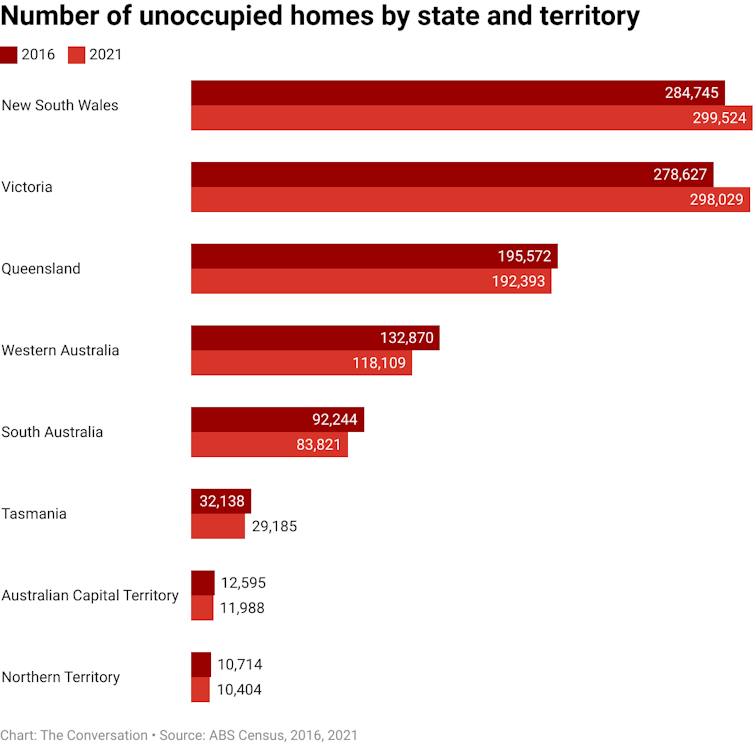
Think tank Prosper Australia has for years demonstrated shocking numbers of vacant dwellings unavailable for rent. A hefty vacancy tax – much greater than the Victorian rate of 1% of property value, while NSW still has none for Australian owners – would lead to many more homes being released onto the market.
The property developers’ argument that we have to build more because that’s the only way to make housing more affordable has been repeatedly refuted by years of careful research.
Tens of thousands of upmarket dwellings have been added to the inner cities of Melbourne and Sydney over the past 20 years, with no reduction in prices across the board. While upmarket unit prices might drop a little when vacancy rates in that submarket increase, their developers are keenly alert to any dip in profits. At the slightest hint of surplus they just stop building.
If housing affordability is the object of urban expansion, let’s grasp that nettle: the only way to achieve it is to build affordable housing, it’s that simple. More than enough land is available within the urban growth boundaries for residential development.
Recent research from Prosper shows there are 84,000 undeveloped housing lots on nine Australian master-planned estates alone. This does not include the many inner-city regeneration projects already under way. Social housing in these areas should be the focus of urban planning before any more land is released.
What about ‘under-developed’ urban lands?
Further expansion of the inner cities of Melbourne and Sydney can only encroach onto low-lying, flood-prone industrial lands that were long ago deemed unsuitable for residential development. It would be folly, or very expensive, to build housing there.
These areas are and still can be used for manufacturing, however, and not just the new niche urban manufacturers that gentrifying councils so love to love. Older industries that are even now being displaced from Fishermans Bend in Melbourne and Blackwattle Bay in Sydney can easily coexist with artisanal bakeries and coffee roasters.
The imperative to promote sustainable local production is stronger than ever now that the pandemic and war have exposed the vulnerabilities of global supply lines. Our diminishing industrial lands really should be kept for industry, until such time as sea-level rise claims them as wetlands.
This is not an argument for decreasing construction activity: there is much work to be done retrofitting existing buildings. These need to be re-clad, better ventilated, opened to passive cooling and adapted to a warming climate.
The ongoing regeneration projects in Melbourne and Sydney need a lot more attention. Docklands, Darling Harbour and Barangaroo could become useful with some serious interventions. The emerging Fishermans Bend and Blackwattle Bay developments have already released more land than their planners know what to do with.
A forward-looking city plan would consolidate and advance what that city already has. That’s the way to build revenue streams that are environmentally, socially and politically sustainable.![]()
Kate Shaw, Honorary Senior Fellow in Urban Geography and Planning, The University of Melbourne
This article is republished from The Conversation under a Creative Commons license. Read the original article.
Book review: Finding the mother tree: Uncovering the wisdom and intelligence of the forest
It's difficult to write a simple review of this book because it works at several different levels. But first of all, it's superb. It possibly has had more personal effect than any other I've read in the past few years.
Initially a British Columbia (BC) forest service employee, Suzanne Simard's observations didn’t tally with current forestry practises and this triggered her curiosity that led to her innovative research on forests and their trees
Ultimately its publication led to the coining of the term ‘wood wide web’ as she explored the way trees exchange nutrients and information via extensive fungal threads linking root systems, between mature parent ‘mother trees’ and their saplings but also linking totally unrelated species like birch and pines.
In this she soon came up against the entrenched government ‘free to grow’ policy which invoked the clearing of land of everything that might compete with commercial timber species. However her work, including measuring the movement of carbon and nitrogen isotopes, clearly showed this is not only unnecessary and costly but often strongly deleterious. It strongly supported the conclusion that healthier more productive forests resulted from keeping natural plant and animal communities as intact as possible.
On another level this book is autobiographical, and written by someone who was raised as the child of a forestry family in the Monashee Mountains of BC (between Kamloops and Banff) who grew up close to wild, forested country and absorbed much in the ways of people and animals in her home territory. One can very much read and enjoy this well written book at that level, and feel for all her conflicts, overcoming fear of public speaking, clashes with institutional practise and established scientific beliefs, family tragedies, and her own battle with cancer.
But there's yet another level too: much of the outcome of her research accords with long held beliefs by First Nations people that forests are a living, interactive, whole systems that communicate beneath the soil in mutually supportive ways. Such beliefs submitted for publication of course would not be accepted by any scientific journal, however her meticulous and patient supportive work most definitely has been, many, many times – she's now Professor of Forest Ecology at the University of BC.
And how does all this translate to our local forests? Do blue gums liaise with and feed and support their babies? Angophoras and turpentines often grow side by side, even touching one another, so do they also fungi-talk to each other through their roots? And what is the story now with ‘free to grow’ style clear felling? When we first set up home in Perth in the 1970s, WA's karri forests were managed on a ‘mother tree’ style basis (though I don’t remember if they used that term) leaving the biggest, healthiest trees intact to propagate for the future.
Author: Suzanne Simard
Allen Lane (Penguin) paperback, 348pp
Reviewed by John Martyn
President’s annual report for the year to October 2022
Welcome to the annual report on the 44th year of operation of STEP Inc. Our lives have, in theory, returned to normal during 2022 apart from the lingering effects of the COVID virus. One disruptor has been the persistent rain with 2022 achieving the record of being the wettest year in Sydney since records began. The effects on our bushland will be apparent in years to come.
The political landscape has brightened considerably at the federal level. We await the implementation of new environment policies in relation to biodiversity that the 2021 State of the Environment Report revealed to be very poor. We hope for changes at the state level following the election due in March 2023.
Looking back over 2022 I am surprised by how busy this year has been with the resumption of most activities for members and plenty of demand for submissions and meetings.
Activities
Talks: After several attempts were stymied by COVID we finally managed to arrange a talk by Shane Fitzsimmons, Commissioner of Resilience. Ironically this took place in February just before the severe flooding events on the north coast. He gave a vivid description of the behind the scenes management of the Black Summer fires, particularly the stress placed on the emergency personnel.
Four other talks were held on the role of fungi in ecosystem health and the need to include fungi in bushland restoration programs, banksia regrowth after fire, threatened plant translocation and taxonomy.
Walks: We scheduled eight walks that featured local plants and indigenous knowledge. Unfortunately, two had to be cancelled because of bad weather. We thank our volunteer leaders, David Roberts, John Martyn, Greg Taylor, Helen Logie and Fran Rein who shared their local knowledge and Beverley Gwatkin who has organised these walks.
Publications: We are still offering a year’s free membership to anyone who buys a book or map. Sales of our maps is still strong and there is a steady demand for our books.
The supply of Middle Harbour North maps has now run out. We plan to complete a reprint early in 2023.
Committee
The STEP committee has, as always, been a great group of people to work with. We owe a huge thank you for all their efforts.
We thank Jim Wells for keeping track of our finances and compiling monthly finance reports. John Burke and Trish Lynch continue to keep Twitter and Facebook up to date and find lots of interesting items to add on a regular basis.
There have been several issues to review this year, often this is in association with other groups. The contribution of all committee members has been valuable. As always life would be easier if we could get more members on the committee!
Accounts
The net cash balance at the end of the financial year has increased compared to last year because last year’s fee holiday reduced our revenue.
The Environment Protection Fund (EPF) balance is on hold in case a major issue arises. We need to maintain this separate fund that is part of our deductible donation status. The Fund’s purpose is to support our environmental objectives. We received a total of $530 in donations in the past financial year.
Our general fund can be used to support educational projects as well as the EPF. We are keen to support more environmental projects so please contact us if you have any ideas.
Again we thank Allan Donald, Chartered Accountant for his completion of the audit on a pro bono basis.
Newsletter
We are continuing to publish five issues of the newsletter, STEP Matters, each year with most members receiving a pdf version via email. Links to individual topics are also included in the email and are on our website so anyone can pick out particular articles of interest. These articles also have links to previous articles on related topics.
While the newsletter concentrates on local issues and events we also cover broader national environmental issues that affect us all. We aim to be educational but not too technical. I hope they are of interest, but feedback is welcome. Also, contributions from members about local events and developments can be published in the newsletter or on Facebook.
Education grants
We did not receive any applications for the John Martyn Research Grant for 2022 and hope there will be more to consider in the future. This grant supports student research in an area relating to the conservation of bushland. In the end we awarded a grant to one of the applicants from a previous year to continue her work at the University of NSW on threatened species conservation through the use of translocation focussing on Hibbertia spanantha.
For many years STEP has been donating a prize in the Young Scientist Awards run by the NSW Science Teachers Association. The selection of a winning project out of a wide range of ecological issues is an interesting exercise. This year’s award went to a project on the use of organic methods to reduce heavy metals in waterways.
Advocacy
The major issues we have been working on are synthetic turf as part of the Natural Turf Alliance and mountain bike track plans and illegal activity. We are still waiting for the environmental review for the synthetic turf development at Norman Griffiths Oval. Major submissions were made on the Hornsby Quarry and Westleigh Park developments, Ku-ring-gai Urban Forest Strategy and NPWS cycling strategy. The Mirvac development at West Pennant Hills continues to need scrutiny and submissions.
Conclusion
A community group like STEP works best with many lines of communication. We enjoy a good relationship with other community groups and local council staff. Information sharing is an important part of our work. To that end we appreciate feedback from our members and reports on local issues that we may not be aware of. It is becoming harder to keep track of local developments as the local newspapers have shrunk considerably.
Young Scientist Awards 2022
STEP has given a prize for environmental projects in the Science Teachers Association of NSW Young Scientists Awards now for 21 years, in the form of money plus our book publications. This year’s award ceremony was in the Great Hall of UTS on Broadway. The ceremonies involve prize awards punctuated by light and humorous keynote addresses on aspects of science, its philosophy and education.
This year there were 127 prizes awarded in diverse aspects of STEM subjects, sponsored by the Science Teachers Association plus many donors including AARNET, Rowe, Australian Water and several scientific organisations. Many students, including STEP’s choice, received several awards. Ages ranged from K2 to year 12; and it’s heartening to see ‘tiny tots’ bouncing up onto the stage for their prizes and knowing that interest, enthusiasm and education start very young if properly stimulated and managed.
STEP chooses from a suite of environmental projects, usually five to eight in number, pre-selected by STANSW chief co-ordinator Anjali Rao. Past topics have ranged from those directly related to bushland to broad based studies on topics such as microplastics. A major STEP winner from four years ago lived on a cattle farm and studied the control of noxious pasture weeds.
This year’s winner Lily Rafail in Year 8 from Presbyterian Ladies College investigated the use of the semiaquatic plant Bacopa monnieri, plus avocado skins, in removing heavy metal pollutants from natural waterways. Her submission won four prizes from other donors including an award for science communication.
Concerned about a tree being chopped down … now you can find out more
Ku-ring-gai Council has a new way for you to check whether a permit has been granted for trees being removed in your neighbourhood. If you go to www.krg.nsw.gov.au/webmap you can look up this information using the address of the property. If you have any concerns that a tree is being illegally removed, please call 9424 0000.
Artificial light at night can change the behaviour of all animals, not just humans
In our submissions STEP has often highlighted the issue of the disruption to animal behaviour from artificial light spill. Examples are the Canoon Road netball complex and the proposed skyscraper at Eden Gardens (still to be approved). This article explaining the issue was published in The Conversation on 28 July 2022.
As the Moon rises on a warm evening in early summer, thousands of baby turtles emerge and begin their precarious journey towards the ocean, while millions of moths and fireflies take to the air to begin the complex process of finding a mate.
These nocturnal behaviours, and many others like it, evolved to take advantage of the darkness of night. Yet today, they are under a increasing threat from the presence of artificial lighting.
At its core, artificial light at night (such as from street lights) masks natural light cycles. Its presence blurs the transition from day to night and can dampen the natural cycle of the Moon. Increasingly, we are realising this has dramatic physiological and behavioural consequences, including altering hormones associated with day-night cycles of some species and their seasonal reproduction, and changing the timing of daily activities such as sleeping, foraging or mating.
The increasing intensity and spread of artificial light at night (estimates suggest 2-6% per year) makes it one of the fastest-growing global pollutants. Its presence has been linked to changes in the structure of animal communities and declines in biodiversity.
How animals are affected by artificial lighting
Light at night can both attract and repel. Animals living alongside urban environments are often attracted to artificial lights. Turtles can turn away from the safety of the oceans and head inland, where they may be run over by a vehicle or drown in a swimming pool. Thousands of moths and other invertebrates become trapped and disoriented around urban lights until they drop to the ground or die without ever finding a mate. Female fireflies produce bioluminescent signals to attract a mate, but this light can’t compete with street lighting, so they too may fail to reproduce.
Each year it is estimated millions of birds are harmed or killed because they are trapped in the beams of bright urban lights. They are disoriented and slam into brightly lit structures, or are drawn away from their natural migration pathways into urban environments with limited resources and food, and more predators.
Other animals, such as bats and small mammals, shy away from lights or may avoid them altogether. This effectively reduces the habitats and resources available for them to live and reproduce. For these species, street lighting is a form of habitat destruction, where a light rather than a road (or perhaps both) cuts through the darkness required for their natural habitat. Unlike humans, who can return to their home and block out the lights, wildlife may have no option but to leave.
For some species, light at night does provide some benefits. Species that are typically only active during the day can extend their foraging time. Nocturnal spiders and geckos frequent areas around lights because they can feast on the multitude of insects they attract. However, while these species may gain on the surface, this doesn’t mean there are no hidden costs. Research with insects and spiders suggests exposure to light at night can affect immune function and health and alter their growth, development and number of offspring.
How can we fix this?
There are some real-world examples of effective mitigation strategies. In Florida, many urban beaches use amber-coloured lights (which are less attractive to turtles) and turn off street lights during the turtle nesting season. On Philip Island, Victoria, home to more than a million short-tailed shearwaters, many new street lights are also amber and are turned off along known migration pathways during the fledging period to reduce deaths.
In New York, the Tribute in Light (which consists of 88 vertical searchlights that can be seen nearly 100km away) is turned off for 20-minute periods to allow disoriented birds (and bats) to escape and to reduce the attraction of the structure to migrating animals.
In all cases, these strategies have reduced the ecological impact of night lighting and saved the lives of countless animals.
However, while these targeted measures are effective, they do not solve what might be yet another global biodiversity crisis. Many countries have outdoor lighting standards, and several independent guidelines have been written but these are not always enforceable and often open to interpretation.
As an individual there are things you can do to help, such as:
default to darkness: only light areas for a specific purpose
embrace technology: use sensors and dimmers to manage lighting frequency and intensity
location, location, location: keep lights close to the ground, shield at the rear, and direct light below the horizontal
respect the spectrum: choose low-intensity lights that limit the blue, violet and ultraviolet wavelengths. Wildlife is less sensitive to red, orange and amber light
all that glitters: choose non-reflective finishes for your home. This reduces the scattered light that contributes to sky glow
In one sense, light pollution is relatively easy to fix – we can simply not turn on the lights and allow the night to be illuminated naturally by moonlight.
Logistically, this is mostly not feasible as lights are deployed for the benefit of humans who are often reluctant to give them up. However, while artificial light allows humans to exploit the night for work, leisure and play, in doing so we catastrophically change the environment for many other species.
In the absence of turning off the lights, there are other management approaches we can take to mitigate their impact. We can limit their number; reduce their intensity and the time they are on; and, potentially change their colour. Animal species differ in their sensitivity to different colours of light and research suggests some colours (ambers and reds) may be less harmful than the blue-rich white lights becoming commonplace around the world.![]()
Therésa Jones, Associate Professor in Evolution and Behaviour, The University of Melbourne and Kathryn McNamara, Post-doctoral research associate, The University of Melbourne
This article is republished from The Conversation under a Creative Commons license. Read the original article.
Urgent action required on illegal Westleigh mountain bike trails
Near the end of Quarter Sessions Road in Westleigh there is a large area of land (34 ha) that was owned by Sydney Water until it was bought by Hornsby Council in 2016. This site has had various uses over the years; a training site for the RFS and a dumping ground for asbestos. There is a large area of bushland near the Sydney Water reservoir. Most of the land not been managed for many years.
As there was no management of the bushland, local mountain bike riders have built a huge network of trails and claimed the area as their own, calling it the H2O facility. Many of these trails go through a large area of high quality critically endangered Sydney Turpentine Ironbark Forest (STIF) and endangered Duffys Forest. The future survival of these forest areas is at risk from the bikes riding over tree roots, soil compaction and weed invasion. The activity also disturbs the wildlife especially as night riding is occurring. The other areas of bush are also valuable and contain threatened plants and orchids.
Hornsby Council drew up a master plan for the site. Submissions were made in June 2021. The plan proposed that most of the network of bike trails in the endangered forest areas be closed and rehabilitated. The trails would be relocated to the edges and away from high value biodiversity. The trails in the other bush areas would remain and be upgraded.
So what has happened since? There have been various forms of consultation with local residents, bikers and conservation groups. Basically the mountain bikers are very unhappy about losing the trails in the forest and have been actively lobbying the council. STEP and all the local conservation groups want the trails removed from the endangered forests.
In fact, council’s development of the Westleigh Park site has to heed the conservation advice for STIF issued by the Australian Government in response to its listing as critically endangered under the EPBC Act. This states that the priority recovery and threat abatement actions required for this ecological community are:
- to prevent further clearing or fragmentation of the ecological community
- to manage weeds within existing remnants
- to identify and fence important remnants to minimise impacts from grazing and recreational activities
- to rehabilitate degraded but recoverable remnants so that they meet the condition criteria for the ecological community
A series of workshops was held in June with representatives of the mountain bikers, environment groups and local residents. The plan was to resolve the impasse and come to a consensus on where the trails should go. Council could then proceed with the next stage of the development process in getting detailed environmental information and approvals. This was a very time consuming process (13 hours in total) that basically came to no decision. Naturally the conservation groups and the local residents wanted the illegal trails removed. The bikers argued that the trails were of great benefit for teaching young riders new skills and a love of the bush in the lovely shady trails. The forest in the STIF area in particular is mostly level and ideal for learner riders.
So the ball is back in the court of Hornsby Council where it should be. No news has been heard from council. H2O is still in operation so the damage continues and no action is being taken to close the endangered forest areas and start their rehabilitation. This laissez faire attitude is reprehensible.
Measures to (hopefully) prevent illegal tree removal
We are all aware of trees being chopped down and poisoned in order to facilitate development (subdivision) or views. The grind of chain saws and mulching machines can be heard every week. How do we know if the tree removal is legal? Ku-ring-gai Council has a tree preservation order but only occasionally is there publicity about this regulation being breached and a paltry fine being issued.
As reported in the Sydney Morning Herald on 19 April, Ku-ring-gai’s tree canopy cover declined by 2.4% over the 7 years 2013 to 2020. By contrast the draft Urban Forest Strategy aims to increase cover in residential areas from 35.6 to 40% over the next 10 years. Much of the reduction has come from building new houses that occupy most of the block and leave no room for trees. The complying development code that is controlled by the state government overrides many of the council provisions aimed at keeping tree canopy. This should be an issue at the state election next March.
At the last meeting council passed a resolution that we hope will help make a difference. The aim is:
…to enhance current measures for pursuing investigations and preventing illegal tree/vegetation removal through community education.
The decisions made are:
- to write to the Minister for Planning and Environment to lobby for an increase in penalties
- to mandate the display of tree application permits at the front of the subject property whilst works are being undertaken
- to increase community education regarding illegal tree work, council’s online approval portal and the significance of the visibility of tree application permits
- to increase contractor education regarding council’s Tree and Vegetation Preservation Development Control Plan
- to continue to seek legal advice to issue penalty infringement notices for multiple tree breaches on one site
Fungi of the Lane Cove Valley: diversity, distribution and DNA
Fungi are poorly known. Of the estimated 3 to 8 million species in existence, only about 120,000 species ever have been named and described. This accounts for only 2 to 5% of the estimated total.
The Australian biota is unique, with many of our plants and animals being found nowhere else. It is very likely that Australian fungi are also unique. However, Australian fungi are often assigned names of Northern Hemisphere species that look similar. This means that Australian fungi may be even more poorly known.
There are a number of reasons that fungi are under-described. First, fungi spend most of their lives existing as mycelial networks, hidden underground. Second, when we do see fungi, they are the reproductive fruiting bodies (mushrooms, toadstools etc). These are mostly small and ephemeral. And, these fruiting bodies often do not have many consistent, distinguishing characteristics.
Despite our lack of knowledge of fungal diversity, we do know that they perform essential roles in ecosystems. They have diverse roles, including as pathogens (causing disease to plants or animals), saprotrophs (breaking down dead animal and plant material) and mutualists (supporting the growth of plants). Almost all land plants form beneficial associations with fungi, as mycorrhizae (fungus root), so conservation of plant communities must also include conservation of their fungal partners.
There are two ways to approach fungal identification. Traditionally, people have used culturing of fungi and surveys of above-ground fruiting bodies. More recently, DNA-based methods have been used to directly survey fungal species in soil. However, a compromise approach combines field surveys with DNA-barcoding. This allows us to identify fungal fruiting bodies, initially to the genus level, and potentially the species level if the species has previously been formally described and then characterised using DNA. We have used this combination approach to identify club and coral fungi in the Lane Cove Valley.
We chose to investigate the club and coral fungi because they exhibit all the characteristics that contribute to fungi being poorly described. The fruiting bodies are small and have few distinguishing characteristics. They are often cryptic, and from our initial observations, seemed to include a range of undescribed species.
To plan our field work, we used John Martyn’s STEP maps to identify track segments of 1 to 2 km which we could survey in a single trip (fungal surveys move very slowly!). Over 2020–22, we have walked every track on the STEP maps multiple times during our fungal explorations of the Lane Cove Valley. We collected some thousands of specimens under our scientific permit issued by the Department of Planning, Industries and Environment. We are now in the process of extracting DNA to sequence and characterise local species.
Our study is far from complete, but we can already report some general observations. Many species in the Lane Cove Valley are undescribed, with up to 30 to 40% of specimens being new species. Club and coral fungi are not distributed evenly through the valley. These types of fungi are mainly found along creek lines, particularly those dominated by coachwood. Our observations suggest that the sides of creeks where sewer lines have been laid host lower fungal diversity and abundance than their corresponding sewer-free creek-sides. Creeks with no sewer lines are often rich in fungal species.
We have also noticed that areas dominated by weedy vegetation have different fungal communities. These areas have generally depauperate communities, with fewer fungal species and fewer fruiting bodies. When areas of weedy bushland are regenerated, this does not appear to be accompanied by recovery of the fungal diversity that is found in more pristine areas. We can often identify regenerated areas through their altered fungal species types and abundance, and refer to the fungi in these areas as fungal ‘weeds’.
In less disturbed areas of bushland, we have documented significant fungal hotspots. In these areas, there is elevated fungal diversity and abundance. There are three outstanding locations for fungal diversity in the Upper Lane Cove Valley. These are Rofe Park/Sheldon Forest, Browns Field, and Coups Creek. All these areas are sheltered valleys that face southwest, and all are likely to be nutrient rich. We think that these locations contain important remnant populations of native fungi that are worthy of conservation, similar to Lane Cove Bushland Park, a reserve dedicated to the conservation of endangered waxcap fungi. Notably, these areas are not within the boundaries of the national park.
Although our results are still preliminary, we can already see some potential implications for conservation and environmental protection. If bush regeneration schemes are not accompanied by natural fungal regeneration, we might need to use inoculum from known fungal hotspots to reintroduce the fungi that are missing from regenerated areas. Reintroduction of native fungi into these plant communities should improve their stability and resilience. Understanding the role of soil fungal diversity in regeneration and restoration of natural bushland areas could be key to the long-term success of conservation and preservation efforts.
Finally, there are clearly many new species of fungi in our region. The formal process of naming these will take many years, but is important for understanding and monitoring fungal ecology. During our surveys, there are some fungi that we have only ever seen once or twice. Since we have also seen multiple examples of extremely rare species of plants and animals during these trips, we think that these fungi are also rare and possibly endangered. There is certainly much more to be done to understand the fungi and their roles in ecosystems.
References and further reading
D.L. Hawksworth and R. Lücking (2017) Fungal diversity revisited: 2.2 to 3.8 million species. Microbiology Spectrum 5(4)
R. Kearney and E. Kearney (2015) Conservation of fungi in Lane Cove Bushland Park. Australian Network for Plant Conservation 24
On 28 June 2022 Vanessa McPherson and Prof Michael Gillings gave STEP a fascinating talk about fungi and their important contribution to ecosystem. They have kindy provided a summary of the talk. They work with the School of Natural Sciences, Macquarie University. (This email address is being protected from spambots. You need JavaScript enabled to view it.; This email address is being protected from spambots. You need JavaScript enabled to view it.)
State of the Environment 2021 – a shocking report
The first State of the Environment (SoE) report for Australia was produced in 1996 by a team led by Prof Ian Lowe. The latest report was released on 19 July after being sat on by the Morrison government since last December. The lead author this time is Prof Emma Johnson. Both these leading ecologists have presented a lecture to STEP members, Ian Lowe in 2012 and Emma in 2014.
These are important documents. Each state may produce a similar environment report but state boundaries tend to hide data of cumulative effects.
The 2021 report highlights the most important areas where action is urgent. As the new Minister for the Environment and Water, Tania Plibersek stated this ‘shocking report’ told ‘a story of crisis and decline in Australia’s environment, and of a decade of government inaction and wilful ignorance.’ She promised: ‘I won’t be putting my head in the sand … the environment is back on the priority list’.
Some major points to note
More threatened species have been listed and existing populations are becoming more threatened. The number of plant and animal species listed as threatened in June 2021 was 1,918, up from 1,774 in 2016. The previous issue of STEP Matters has a detailed summary of the state of Australia’s biodiversity.
Land clearing – the EPBC Act is totally ineffective. 7.7 million hectares of potential habitat for terrestrial threatened species was cleared between 2000 and 2017 (for context, Tasmania is 6.8 million hectares). Much of the clearing occurred in small increments. Over 93% of land clearing was not referred to the Australian government for assessment, meaning the loss was not scrutinised under the EPBC Act. This highlights cumulative impacts, one of the factors that the Samuel Review called for inclusion in development assessments.
Climate change is exacerbating pressures on every Australian ecosystem. Many Australian ecosystems have evolved to rebound from extreme ‘natural’ events such as bushfires. But the frequency, intensity, and compounding nature of recent events are greater than they’ve experienced throughout their recent evolutionary history. Climate change is compounding ongoing and past stresses from human impact so we have to expect more species extinctions over the next decades.
Inland water and marine environments – our nearshore reefs are in overall poor condition due to poor water quality, invasive species and marine heatwaves. We are all aware of the harm being done to the Great Barrier Reef by bleaching events. Inland water systems, including in the Murray Darling Basin, are under increasing pressure. By the time the Morrison Government left office, they had only delivered two of the promised 450 GL of environmental water and they had no plan to find the extra 448 GL by 2024, when it’s due.
Urban expansion – we’re reducing the quantity and quality of native habitat outside protected areas through, for instance, urban expansion on land and over-harvesting in the sea. However there is no acknowledgement of the need to limit population growth.
Some reasons for optimism
Indigenous knowledge – traditional fire management is being recognised as vital knowledge by land management organisations and government but progress and funding are slow. Work must still be done to empower Indigenous communities and enable Indigenous knowledge systems to improve environmental and social outcomes.
Biodiversity restoration –there are many programs for improving our biodiversity but Australia is increasingly relying on costly ways to conserve biodiversity. This includes restoration of habitat, reintroducing threatened species, translocation (moving a species from a threatened habitat to a safer one), and ex situ conservation (protecting species in a zoo, botanical garden or by preserving genetic material). On the positive side individuals, non-government organisations and businesses are increasingly 7 purchasing and managing significant tracts of land for conservation.
What the new government is doing – in the speech to the National Press Club when she released the SoE report, Environment and Water Minister, Tania Plibersek stated that the update of the EPBC Act is a priority. The response to the Samuel Review will be completed by the end of this year and the government will aim to develop new legislation for 2023. They have promised a new Environmental Protection Agency with power to enforce the legislation.
The Government will set a national goal of protecting 30% of our land and 30% of our oceans by 2030. Only 16% (13 of 84) of Australia’s nationally listed threatened ecological communities meet a 30% minimum protection standard in the national reserve system.
The goal for reduction in greenhouse gas emissions has already been approved. There will also be a review of the carbon offset market that has been roundly criticised – see STEP Matters Issue 215. Conversely coal and gas projects are still being approved.
Decisions need to be built on good data. The government has promised to restore funding for the Environment Department that was cut by 40% by the Morrison government.
$9m funding to revive Sydney Harbour biodiversity
In August the NSW Environment Minister, James Griffin, announced a project, dubbed the Seabirds to Seascapes project that aims to restore Sydney Harbour by bringing back lost biodiversity, improving water quality and increasing carbon storage. The project will restore habitats for some of our iconic species such as penguins, seals, seahorses and turtles
This project includes three elements:
- restoring Sydney Harbour's marine ecosystems by installing living seawalls, and replanting seagrass meadows and kelp forests
- supporting the future of little penguins by conducting the first ever state-wide little penguin census to better understand their population size and how they're responding to threats such as climate change, along with the restoration of seagrass meadows and kelp where they thrive
- helping fur seals thrive as a species by conducting a seal survey to identify their preferred habitat, breeding grounds, diet and key threats – seal numbers are growing, as evidenced by more sightings around the harbour and along the coast
The NSW Environmental Trust is granting $6.6m to the project, with partners contributing a further $2.5m in kind. The project is being led by the NSW Department of Planning and Environment, in partnership with the Sydney Institute of Marine Science (SIMS – see note below), Taronga Conservation Society Australia and NSW National Parks and Wildlife Service.
Note: SIMS is a collaborative marine science hub between UNSW Sydney, UTS, University of Sydney and Macquarie University. SIMS has more than 100 scientists and graduate students associated with the Institute, representing a broad diversity of skills in marine science.
Living Seawalls, an award-winning innovation
The world has been experiencing a construction boom in our seas. Globally, the area of the seafloor impacted by built infrastructure is greater than the area of the world’s mangrove and seagrass forests. Structures such as seawalls, pilings, pontoons and marinas are built for diverse purposes such as shoreline protection, recreational activities and energy generation, but lack the complexity required for a biodiverse marine environment. In particular, the flat and featureless surfaces of marine constructions provide little space for marine plants and animals to live, and few protective refuges from predators and environmental stressors, driving this reduced diversity and favouring the presence of pest species.
By blending ecological concepts and engineering in creative design, a team from SIMS is reviving our increasingly urbanised oceans through the development of affordable, adaptable and scalable methods of ecologically enhancing structures. Living Seawalls has shown that, despite marine construction being a large part of the problem, it can also be part of the solution.
The addition of living seawalls creates surface texture and microhabitats for organisms like shellfish, mussels and algae, which can regrow significantly in a year.
Living seawalls will be installed across nine locations in the harbour, where hundreds of kilometres of smooth harbour walls have made it difficult for organisms to take hold.
The Living Seawalls project (www.livingseawalls.com.au) has won the 2022 Banksia Foundation Award for Biodiversity. They have been installed in Singapore, Europe and two other locations in Australia. See.
Seagrass meadows, a vital habitat
Seagrasses (Posidonia australis) provide critical habitat for conservation icons like seahorses, as well as acting as nursery grounds for many fish species. They are very effective at capturing carbon as they can store carbon at up to 40 times faster than terrestrial forests.
These marine plants grow in shallow estuary waters. They have become severely threatened by human activities like coastal development, boat anchorages, pollution and sedimentation. The decline in these meadows has been so severe that six meadows have been formally listed as endangered under the Commonwealth Government (EPBC Act) and the NSW government.
Part of the replanting program involves asking local communities to collect shoots that naturally become detached after large storms.
Kelp forests
Crayweed (Phyllospora comosa) is a golden seaweed that forms extensive underwater forests and promotes biodiversity by providing habitat, food and shelter for hundreds of species, including crayfish and abalone. They also act as underwater forests, capturing carbon and creating oxygen.
However, crayweed completely disappeared from the Sydney metropolitan region from Palm Beach to Cronulla in the 1980s due to pollution and has never returned.
Frustration over lack of information about the Norman Griffiths Oval synthetic turf project
While Ku-ring-gai Council was in caretaker mode in December 2021, Mayor Cedric Spencer signed the documents giving the go-ahead for the project to install synthetic turf at Norman Griffiths Oval in West Pymble. This was despite the considerable community opposition and the fact that a Review of Environmental Factors (REF) had not been completed. The opponents were assured that the project would not go ahead if the REF proved that the impacts could not be satisfactorily managed. We have already written about our concerns with this project.
The main concerns relate to chemical pollution and cork infill run-off from the field into Quarry Creek that runs into Lane Cove National Park and changes in hydrology that could danger the surrounding Sydney Turpentine Ironbark Forest vegetation.
There is considerable frustration about the lack of information about progress over the past 9 months in the design of the project and the analysis of environmental impacts. It appears that members of the West Pymble Soccer Association have been privy to information provided in meetings with council staff. STEP and the local bushcare volunteers were promised that a community reference group would be set up to inform them about the project as well as the soccer club.
This situation has led to one of the volunteer bushcarers, Bronwen Hanna, resigning as convenor of the Quarry Creek group. Here is her letter.
Re: Resignation as KMC Coordinator: Quarry Creek and Little Yanko Bushcare Sites
It is with great regret that I inform you of my decision to resign as Ku-ring-gai Council’s Bushcare Co-ordinator for Quarry Creek and Little Yanko sites. Given the hours of effort that myself and other volunteers have put into the site, I am disappointed in the way that council staff have treated our attempts to ensure the site continues to flourish.
Firstly, KMC staff have declined all requests to meet and discuss questions around mitigation strategies which would allay concerns about impacts of a synthetic field upstream which have recently raised by the NSW Chief Scientist. What has made this more difficult for me is it appears that West Pymble soccer club and the NSSA – who potentially stand to gain financially from this development through reduced soccer fees – have been furnished with information that should also be made available to our group as affected stakeholders.
It may be that council’s plans will mitigate any impacts that have occurred in other projects. If this is the case, I find it hard to comprehend why staff would not be happy to meet with volunteers with valid concerns. Unfortunately, volunteers have been forced to seek information through GIPA requests – requests that have taken up a great deal of time. We have had to pay for information which I believe should be freely available to residents who are working for the public interest.
Secondly, council appears to have rejected our requests for independent expert monitoring of Quarry Creek before and after the field’s construction (which we asked for in our original submission on the project). This is hard to understand given previous substantial investment through grants funding and rehabilitating the creek through rain gardens, vegetated swales and Lofberg Oval stormwater harvesting, as is the rationale that council cannot afford to undertake water/microplastic monitoring given council is spending $3.6m on the project.
I note also that council have not responded to NSW National Parks concerns about the project, nor abided by its own resolution to keep National Parks informed about the project as it progressed.
WildThings Welded Art Exhibition
WildThings NSW is a local not-for-profit organisation with a goal to promote, protect and enhance urban wildlife and their habitats in Ku-ring-gai and NSW. Their projects have included research into the Eastern Pigmy possum habitats and measures to improve feed sources and install nest hollows. They have obtained grants for funding installation of native animal nest boxes, planting native bird habitat, native bee hives and insect hotels. They work with Ku-ring-gai Council in developing these projects to improve biodiversity.
WildThings NSW initiated the 2022 WildThings NSW Virtual Welded Art Biodiversity Photographic Exhibition and Digital Collection of biodiversity-related photographic exhibits from around the world.
A key objective was to raise awareness worldwide of the need to protect the world’s life supporting biodiversity. They requested organisations and individuals around the world to promote the concept of welded art to encourage the strengthening of biodiversity.
The project has been highly successful with more than 30 exhibits from eight countries, Australia, Canada, New Zealand, Serbia, South Africa, Spain, UK and USA.
New hope for the environment following the election
At last we have some good news to report. The country is breathing a sigh of relief following the defeat of the Morrison government, even expressing whoops of joy.
The major areas relating to the environment where we are hoping for big new effective policy change are outline below.
Energy
The new Albanese government has been thrown in the deep end with a crisis in energy supply. Gas and petrol prices have soared because of the war in Ukraine. Electricity has been in short supply because of the failure of several coal-fired power stations, the need to use expensive gas and the rise in demand in response to the cold snap. All these factors highlight the abysmal management and policies of the Morrison government.
At last we will see some real action with rapid expansion of the transmission grid to facilitate the use of renewable energy and more support for these projects. There is more positive action proposed to support the transition to use of electric vehicles. These actions will take time to be effective but 2030 is not far away!
The emissions reduction target will be improved to a 43% reduction below 2005 levels by 2030. This is still viewed as inadequate by the Climate Council and the ‘teal’ candidates. Labor is still not strong enough on closing down coal mines and stopping new projects.
A review will be held of Australia’s controversial carbon offset programs, to be conducted independently of government departments and agencies. This is vital for the effectiveness of plans to reach net zero emissions – see the previous STEP Matters.
Land clearing
Labor has promised to set a domestic target to protect 30% of land and 30% of sea areas by 2030.
Great Barrier Reef
Labor has promised to increase funding to tackle agricultural pollution, more sustainable fishing practices and research into thermal tolerant corals. But the really meaningful solution is rapid reduction in carbon emissions
Murray–Darling Basin
After years of the Nationals favouring big irrigators and undermining the Murray– Darling Basin Plan, the new government has a chance to restore more natural flows to the rivers of the Murray–Darling Basin, establish integrity and transparency for water management, and get the plan to revive our rivers back on track.
The review of the Murray–Darling Basin Plan will occur during this term of parliament, so there is the possibility of increasing water recovery targets towards what the science says is necessary for healthy rivers, wetlands and floodplains.
Biodiversity
The previous environment minister, Sussan Ley, refused to release the State of the Environment Report that was finalised last December. The new Minister for Environment and Water, Tanya Plibersek has indicated that it tells an ‘alarming story’ of decline, native species extinction and cultural heritage loss. She will release the report in a speech to the National Press Club on 19 July.
Labor has promised to create a federal Environmental Protection Agency to improve environmental compliance, information and analysis. We hope this agency will be genuinely independent and have real teeth.
Furthermore, there’s been a failure to address one of the most egregious failings of our system which is to evaluate cumulative impacts of projects on the environment as opposed to a license by license approach.
Report card on our biodiversity
Australia is losing more biodiversity than any other developed nation. Already this year the charismatic and once abundant gang gang cockatoo has been added to our national threatened species list, the koala has been listed as endangered and the Great Barrier Reef suffered another mass bleaching event.
The Australian public consistently rates the loss of our unique plants and animals as a key concern. Indeed, in a recent poll of 10,000 readers of The Conversation, 'the environment' was identified as the second-biggest issue affecting their lives, behind climate change at number one.
The Coalition has been in government since 2013. So what has it done about the biodiversity crisis? Unfortunately, the state of Australia’s plants, animals and ecological communities suggests the answer is - not nearly enough.
In fact, as the extinction crisis has escalated, protection and recovery for threatened species has declined. Poor decisions are contributing to the problem, rather than solving it.
The sorry state of Australia’s biodiversity
Australia has formally acknowledged the extinction of 104 native species since European colonisation, but the true number is likely much higher.
Threatened bird, mammal and plant populations have, on average, halved or worse since 1985. Species recently thought to be safe – such as the bogong moth, gang gang cockatoos, and even the iconic koala – are being added to the global and national threatened species lists following drought, catastrophic fires and habitat destruction.

Today, 19 ecosystems show clear signs of collapse. This includes the Great Barrier Reef, savannas, mangroves, tropical rainforests, and tall mountain ash forests. These losses have profound ramifications for clean air and water, productive agriculture, pollination, and well-being.
Biodiversity is a crucial part of Australia’s national identity and Aboriginal culture. It delivers billions of dollars in tourism revenue and underpins most sectors of our economy.
It’s important for our health, too. COVID lockdowns recently brought the critical role of nature to our well-being into sharp focus, with thriving biodiversity shown to deliver avoided costs to the healthcare system.
Ignoring key recommendations
A 2018 Senate inquiry into the extinction crisis of Australian animals (fauna) concluded that native fauna was declining. It found biodiversity protection was under-resourced and failing, and Australia urgently needs an independent environmental regulator.
In 2022, the federal Auditor-General reviewed the government’s implementation of Australia’s threatened species legislation, finding:
limited evidence that desired outcomes are being achieved, due to the department’s lack of monitoring, reporting and support for the implementation of conservation advice, recovery plans.
The national Threatened Species Strategy focuses on 100 species and a few iconic places. But more than 1,800 species and ecosystems are threatened with extinction.
And economic analyses indicate we currently spend about around 7% of the targeted A$1.6 billion per year required to halt species loss and recover nationally listed threatened species.
These findings were reinforced in 2020 by a major independent review of Australia’s environment law – Environment Protection and Biodiversity Conservation (EPBC) Act.
The review by Professor Graeme Samuel made 38 recommendations, but almost none have been implemented. They include establishing an Environment Assurance Commissioner, rigorous national environmental standards and resourcing compliance and enforcement of environmental regulations.
Failure to protect what we have
Land clearing is a key threat to Australian wildlife, yet the government has not made meaningful progress to halt it.
The hectares cleared in New South Wales over the last decade have tripled, and a staggering 2.5 million hectares have been cleared in Queensland between 2000 and 2018.
Worryingly, more than 7.7 million hectares of threatened species habitat have been cleared since the EPBC Act came into force (between 2000 and 2017), including 1 million hectares of koala habitat.
Invasive species – such as cats, foxes, rabbits, deer and buffel grass – continue to wreak havoc on many of our most endangered species.
Cats alone kill 1.7 billion native animals each year and threaten at least 120 species with extinction. While feral predator control has received some focus, the effort still falls well short of what’s required.

Lack of transparency and accountability
Official reviews have consistently found the federal government’s approach to protecting biodiversity lacks transparency and accountability.
Questions have also been raised about the federal government’s delay in releasing its five-yearly State of the Environment Report ahead of the election.
And investigations have raised serious concerns about how the government handled decisions regarding grasslands illegally destroyed by a company part-owned by a government minister.
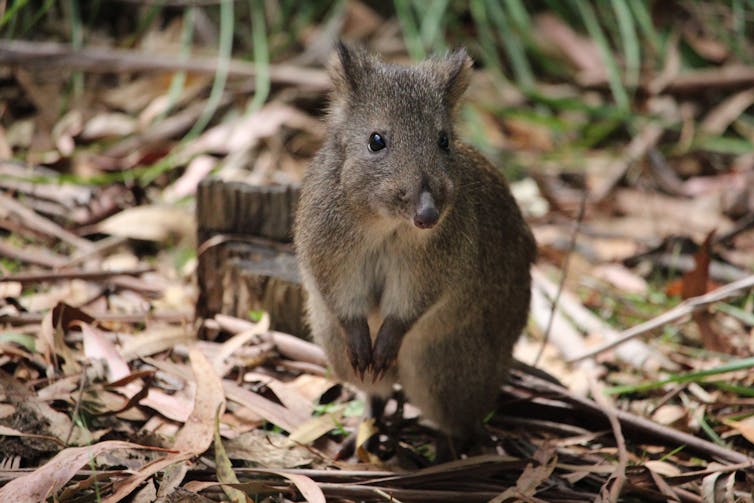
A key advisor to the government recently labelled a major scheme to promote forest restoration as carbon credits as environmental and taxpayer 'fraud'.
A federal integrity commission, if it existed, could have explored these cases.
The government also continues to back activities that cause damage to biodiversity, including the fossil fuel and forestry industries.
On agriculture, the government is pursuing a 'biodiversity stewardship' policy, to financially reward farmers for protecting wildlife.
But ongoing approval of unsustainable land management practices, particularly land clearing (of which agriculture is responsible for the lion’s share) will likely overshadow any stewardship gains.
So what’s needed to prevent future extinctions?
Labor has not yet revealed its full suite of environment policies. This week it told Guardian Australia it will release more details before the election, and has called on the government to release the State of the Environment report.
So what policies are needed to reverse the biodiversity crisis? The answer is: spend more and destroy less.
Just two days of Coalition election promises (estimated at $833 million per day) would fund recovery for Australia’s entire list of threatened species for a year.
Systems for protecting biodiversity need stronger legal mandates and less discretion for ministers to override decisions about project approvals, species listing and other matters.
Biodiversity should be integrated into key aspects of government practice. For example, it makes no sense to invest in protecting koalas while simultaneously approving koala habitat clearing.
And we need investment in every threatened species, not just a hand-picked few.
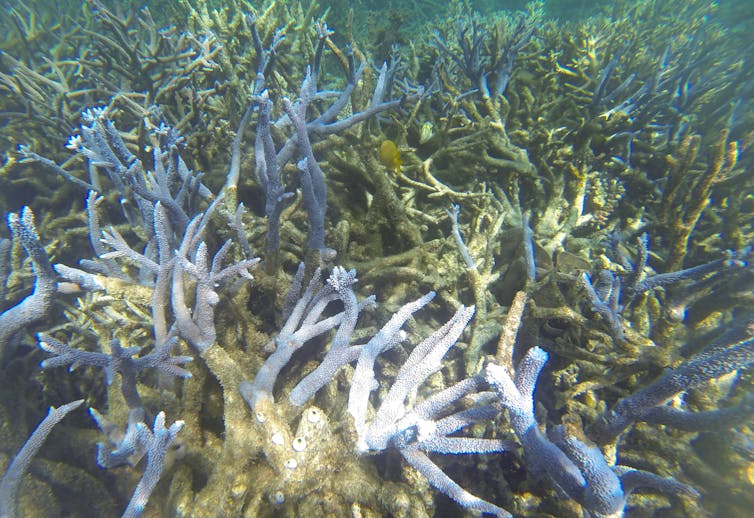
Finally, transformative policies are needed to support the substantial opportunities to enhance and restore biodiversity. This includes:
- using nature to help mitigate climate change
- green recovery of the economy post-COVID
- finding ways to farm profitably while enhancing biodiversity
- designing cities where people and nature can both flourish.
The fate of nature underpins our economy and health. Yet in the election campaign to date, there’s been a deafening silence about it. ![]()
Sarah Bekessy, Professor in Sustainability and Urban Planning, Leader, Interdisciplinary Conservation Science Research Group (ICON Science), RMIT University and Brendan Wintle, Professor in Conservation Ecology, School of Ecosystem and Forest Science, The University of Melbourne
This article is republished from The Conversation under a Creative Commons license. Read the original article.
Hibbertia spanantha, the subject of a study of plant translocation
On 10 May 2022 Chantelle Doyle gave our members a presentation on her extensive PhD work on conserving Hibbertia spanantha. Her work is also investigating threatened species conservation through the practice of translocation. Unfortunately it is inevitable that rare plants are destroyed when a development site is cleared unless they can be moved to a suitable site elsewhere.
H. spanantha was originally known from only four populations in the Sydney Basin Bioregion and is on the Threatened Species Recovery Hub Hottest 100 list of plants most at risk of extinction.
Chantelle’s talk described her analysis of:
- What are the best methods for vegetative and seed propagation of H. spanantha?
- What are the best soil and pre planting treatments?
- What post planting maintenance is required?
This information together can inform the key factors to consider when implementing conservation actions and identify challenges to following best practice translocation guidelines.
The recent issue of the Friends of Lane Cove National Park newsletter, Regenavitis reports on the work of park staff and volunteers in helping with the Ryde planting near the crematorium. They will help care for the plants in the long term through weed suppression and, potentially, ecological burns to facilitate a self-sustaining population through natural recruitment.
Annual research grant
STEP has awarded our annual research grant to Chantelle to assist her with her work. Funds from STEP will enable ongoing monitoring of the three translocated populations (ex situ population at Hornsby and augmentations at Ryde and Cheltenham).
Ku-ring-gai – Urban Forest Strategy
Trees play an important role in defining the character of Ku-ring-gai. Council has been going through a process to develop a new strategy for managing forest over two years. The starting point was an Urban Forest Policy that is a short statement of principles and objectives.
During 2021 feedback was collected from the community and advice sought from expert consultants that have informed a draft Urban Forest Strategy which will define how council manages and improves our urban forest for current and future generations.
Council is now publicly exhibiting the draft document and gathering ideas about how the strategy can be successfully implemented. Have your say now. The closing date is 5 pm on Friday 8 July.
The strategy will cover trees and vegetation in:
- public parks, streets and commercial areas
- private gardens, schools and other developments
- council managed bushland and reserves
The management of the urban forest needs to take into account the whole ecosystem that supports the trees and plants, including the soil and fauna that are essential for the health of the vegetation plus the availability of a water supply.
Ku-ring-gai Council has described the municipality as the ‘green heart’ of Sydney. This creates an attractive environment for residents. Trees also provide many other environmental benefits that are described in the strategy.
The draft Strategy includes ambitious goals to increase the tree canopy coverage. However the urban forest needs to be looked after by all residents. There are pressures that will work against the goals for improving the health and extent of the urban forest such as climate change, development and preferences changing towards very tidy easy-care gardens.
Trad fungus – a promising solution to rampant weed infestations
Tradescantia fluminensis, commonly known as wandering trad is one of the worst weeds in Sydney’s bushland and home gardens. This highly invasive weed rapidly takes over the ground layer in gullies and temporary watercourses, forming a thick blanket of leaves that excludes light and warmth. Trad aggressively smothers low plants and seedlings and cools the soil, preventing native plant germination and regeneration.
This plant spreads vegetatively, no seed is produced. Garden refuse dumped in bushland is a common form of spread. Stem fragments and roots readily wash down waterways or spread in mud from vehicles. Trying to remove trad is a very time-consuming process. Repeated follow up is required because a tiny stem or leaf left behind can regrow.
But now there is hope of a solution, a leaf-smut fungus called Kordyana brasiliensis. This agent was discovered on wandering trad during surveys in Brazil performed by researchers at the Universidade Federal de Viçosa. This exploratory research was part of the biocontrol program for this weed in New Zealand, led by Landcare Research.
After years of testing in Brazil, in New Zealand and in the CSIRO containment facility in Australia, researchers applied for approval to release the leaf smut fungus. They were granted approval by the Department of Agriculture and Water Resources in December 2018.
Researchers first released the leaf smut fungus at ‘nursery sites’ in the Dandenong Ranges during the cooler months of 2019. Nursery sites are areas where our staff will monitor the progress of the biocontrol agent to ensure it can survive and spread in the local area and is having a damaging effect on the wandering trad.
A new project from July 2020 to June 2023, co-funded by CSIRO and the NSW government through its Environmental Trust, is facilitating stakeholders’ releases of the fungus across the range of wandering trad in NSW. The project will also monitor the impact of the fungus on the weed and flow-on indirect impact on other vegetation at several sites during that period.
Ku-ring-gai Council is participating in the project and has released infected trad plants in several sites. It has been spreading rapidly in some sites such as the Gordon Flying Fox Reserve. The very damp conditions experienced over the past few months may be a factor. In other sites the spread has been fairly slow.
How it works
The leaf smut fungus (K. brasiliensis) spreads through spores, and it needs wandering trad leaves to survive. This pathogen enters wandering trad through the leave’s air holes (stomata), and slowly uses the weed’s energy for its own fungal growth. After two to three weeks, the leaves begin to develop yellow spots, caused by a lack of chlorophyll. Eventually the fungal infection is so severe that the wandering trad leaves die. The sick plant becomes less competitive against neighbouring native plants, giving them an advantage, and the opportunity to grow.
Don't worry, it's not another cane toad. It has been carefully tested by the CSIRO and only infects trad and not its close native relative Commelina which has blue flowers. The fungus needs the leaves of the wandering trad to survive – if there is no wandering trad to infect, the fungus dies.
Benefits of biocontrol agents
Biological control is the practice of managing a weed by deliberately using one or more of its natural enemies (biocontrol agents) to suppress it.
Specialised fungi, like the leaf smut, have specific genes that enable them to successfully infect and cause disease only on single or a narrow range of plant species. Testing involved looking at plants that are related to wandering trad including native plants to make sure the fungus will only infect the weed.
CSIRO field biologist Dr Ben Gooden, who is coordinating the rollout of the biocontrol program across Australia, said highly targeted and tested biocontrol agents like the fungus were a more environmentally sustainable option than other available tools. Scientifically tested biocontrol agents like this fungus provide a longer term, environmentally sustainable way of controlling weeds like wandering trad, without harming Australian plants or animals.
Thanks to the Facebook page of the Pittwater Natural Heritage Association and CSIROscope for some of this information.
Consultation on Gardens of Stone draft plans – should the area be a theme park or world class reserve?
In November 2021 the NSW government announced the creation of the Gardens of Stone State Conservation Area. This means this iconic area will be protected to some extent. The risk of further damage from coal mining has been averted but there is the prospect of over-reach with tourist development that could spoil the unique pagoda landscape. See our article on the history of the long campaign to protect this area.
A draft master plan and plan of management have now been released for submission.
The organisation that has been leading the campaign for the protection of this area is the Colong Foundation for Wilderness, now called Wilderness Australia. Click here for details of their many concerns about the proposals and a submission guide.
The closing date is 5 July. Send submissions to This email address is being protected from spambots. You need JavaScript enabled to view it. or Manager, NPWS Planning and Assessment, Locked Bag 5022, Parramatta, NSW 2124.
Potential features of the reserve
The Gardens of Stone State Conservation Area should become one of the best reserves in NSW. The diversity and rarity of its scenery and native flora, and its Aboriginal cultural heritage should be enjoyed by thousands. Lithgow could benefit from the increase in demand for accommodation and visitor facilities.
Wilderness Australia needs your help to ensure that happens, and that its values are not desecrated. Tourism needn’t cut the eyes out of the scenery with a muddle of disconnected and counterproductive proposals.
There are two separate documents under the consultation. A plan of management is statutory and cannot be changed without public consultation. The accompanying draft master plan for visitor management creates a parallel process that has no legal force and can be changed at the will of government. The two drafts do not work cohesively together.
The master plan’s list of intentions is more ambitious than the reserve’s visitor management budget can fund, so it provides no clarity on which park facilities will be built.
Major issues
The major concerns are:
- The main focus should be on nature-focused basic facilities like campgrounds, walking tracks, carparks and lookouts built on already disturbed land and serviced by good 2WD roads that everyone can use. The area is ideal for multi-day walking tracks with basic overnight campsites.
- There should be an emphasis on a 2WD park, with minor provision of 4WD trails where they can be managed sustainably. Instead, there is proposed exclusive 4WD vehicle access to iconic sites, such as Wolgan Falls and the Temple of Doom.
- It is proposed to locate the adventure tourism facilities, the zipline, via ferrata and 4WD access road, in the middle of the Lost City. This will cause a visual blight at Lithgow’s best scenic asset. It should be relocated to State Mine gully and encourage visitation to the State Mine and Railway Museum.
- The draft plan of management for the reserve is vague. Except for pest management strategies, it has few details on nature conservation action. There are no restoration management actions, apart from studies, to spend the very large biodiversity offset fund available for this work.
- Little is said about aboriginal community involvement in reserve management, including through economic opportunities and employment.
- There is too much emphasis on opportunities for private interests, such as private consultation with interest groups on facilities such as additional approved access routes for vehicles, horse and bike riders and up to four glamping accommodation hubs that are subject to secret lease negotiations. It seems the Wollemi Great Walk is being determined in secret by confidential contracts and leases negotiated for private ventures.
A revised, re-published and re-exhibited draft plan of management is required that defines the location and extent of proposed visitor facilities and access on a map, with criteria set out that ensure this work is done in a sustainable manner.
The role of the draft master plan must be to identify, through the public consultation, a set of visitor management actions to be published in a completely revised draft plan of management.
In May 2021 the NSW government announced that the Gardens of Stone will be declared a State Conservation Area. This means this iconic area will be protected to some extent. The risk of further damage from coal mining has been averted but there is the prospect of overreach with tourist development that could spoil the unique pagoda landscape. See STEP Matters, Issue 213 for the history of the long campaign to protect this area.
A draft Master Plan and Plan of Management have been released for submissions. The organisation that has been leading the campaign for the establishment of this national park is the Colong Foundation for Wilderness, now called Wilderness Australia. Click here for details of their many concerns about the proposals and a submission guide.
The closing date is 5 July. Send submissions to This email address is being protected from spambots. You need JavaScript enabled to view it. or Manager, NPWS Planning and Assessment, Locked Bag 5022, Parramatta, NSW 2124.
Potential features of the reserve
The Gardens of Stone State Conservation Area should become one of the best reserves in NSW. The diversity and rarity of its scenery and native flora, and its Aboriginal cultural heritage should be enjoyed by thousands. Lithgow could benefit from the increase in demand for accommodation and visitor facilities.
Wilderness Australia needs your help to ensure that happens, and that its values are not desecrated. Tourism needn’t cut the eyes out of the scenery with a muddle of disconnected and counterproductive proposals.
There are two separate documents under the consultation. A Plan of Management is statutory and cannot be changed without public consultation. The accompanying draft Master Plan for visitor management creates a parallel process that has no legal force and can be changed at the will of government. The two drafts do not work cohesively together.
The Master Plan’s list of intentions is more ambitious than the reserve’s visitor management budget can fund, so it provides no clarity on which park facilities will be built.
Major issues
The major concerns are:
- The main focus should be on nature-focused basic facilities like campgrounds, walking tracks, carparks and lookouts built on already disturbed land and serviced by good 2WD roads that everyone can use. The area is ideal for multi-day walking tracks with basic overnight campsites.
- There should be an emphasis on a 2WD park, with minor provision of 4WD trails where they can be managed sustainably. Instead, there is proposed exclusive 4WD vehicle access to iconic sites, such as Wolgan Falls and the Temple of Doom.
- It is proposed to locate the adventure tourism facilities, the zipline, via ferrata and 4WD access road, in the middle of the Lost City. This will cause a visual blight at Lithgow’s best scenic asset. It should be relocated to State Mine gully and encourage visitation to the State Mine and Railway Museum.
- The draft plan of management for the reserve is vague. Except for pest management strategies, it has few details on nature conservation action. There are no restoration management actions, apart from studies, to spend the very large biodiversity offset fund available for this work.
- Little is said about aboriginal community involvement in reserve management, including through economic opportunities and employment.
- There is too much emphasis on opportunities for private interests, such as private consultation with interest groups on facilities such as additional approved access routes for vehicles, horse and bike riders and up to four glamping accommodation hubs that are subject to secret lease negotiations. It seems the Wollemi Great Walk is being determined in secret by confidential contracts and leases negotiated for private ventures.
A revised, re-published and re-exhibited draft Plan of Management is required that defines the location and extent of proposed visitor facilities and access on a map, with criteria set out that ensure this work is done in a sustainable manner.
The role of the draft Master Plan must be to identify, through the public consultation, a set of visitor management actions to be published in a completely revised draft Plan of Management.
Good news for Byles Creek
In Issue 211 of STEP Matters we wrote about the review being undertaken by Hornsby Council of the planning controls in the Byles Creek area. Local residents have been fighting for years to have the zoning of some large undeveloped lots changed so they cannot be sub-divided into smaller lots leading to clearing of high quality bush that is a wildlife corridor and essential habitat for several threatened species.
The good news is that at the May 2022 meeting Hornsby councillors voted unanimously in favour of implementation of all of the Byles Creek Planning Study recommendations without any changes as below:
- rezone the R2 land within the study area to E4 Environmental Living
- increase the minimum lot size for land to be zoned E4 Environmental Living to 40 hectares
- strengthen the wording of the objectives for minimum lot size, clause 4.1 of the Hornsby Local Environment Plan to protect and enhance existing bushland and significant vegetation
- insert a new Local Provision Clause for Riparian Land into the Hornsby LEP 2013 and provide supporting riparian corridor mapping
- increase community engagement programs targeting the study area
Although there will be more steps along the way with the formal planning proposal etc requiring public comments before it becomes legislation, this has ensured the process will begin.
There are still large lots that will only be protected if they are acquired and conserved. The Byles Creek Valley Union is continuing to meet with our state member, Premier Perrottet to make this happen as promised. However, implementing the study recommendations will improve the level of protection for the rest of the Byles Creek catchment.
Powerful Owl feather identification guide
Dr Holly Parsons and the Powerful Owl team from Birdlife Australia, with financial assistance from a Ku-ring-gai environmental levy grant, have written a fascinating Powerful Owl feather identification guide.
Here is a taste of the information in the guide.
Identifying a species by a single feather can be very challenging. This guide has been designed by the Powerful Owl Project to help you determine if you have found a Powerful Owl feather. We have also included images of other species whose feathers look similar. The guide focuses mostly on wing and tail feathers as they are most often found but we have provided examples of other feathers where available
A feather found on the ground can tell us a lot of useful information. It can pinpoint locations that are important to birds, inform us of movement patterns and can even be used for genetic testing. A simple feather can help direct important conservation efforts!
Feather anatomy
Feathers are remarkably light and strong. They are composed of keratin, which is the same protein that makes up our hair and nails, as well as the scales of reptiles. A feather consists of a central hollow shaft, called a rachis, rather like a tree trunk. The feather shaft has two vanes, flattened parts of the feather attached on either side of the rachis. The vanes are formed by barbs that branch from the rachis like the branches of a tree. These barbs bear barbules that radiate, like the smaller branches of a tree. Tiny hooks on the barbules connect the barbs together to form the flat plane of the feather vane.
When birds preen, they run the length of the feather through their bills, which engages the barbules and shapes the barbs into a vane, making the feather work as one continuous unit. This helps birds to fly, stay warm and repel water.
Collecting feathers (or rather, not)
While it is very tempting to collect feathers that you find, every state and territory in Australia actually has rules and regulations around the collection of bird feathers. In NSW it is illegal to retain a bird specimen or parts of it (including feathers) without the appropriate permission from the NSW National Parks and Wildlife Service.
There is also a very small, but real risk of infection from a number of diseases when coming into contact with wild birds, their secretions, droppings and feathers. So rather than collecting feathers (or other bird parts), simply admire it, take a photo, and leave it in place (unless you are part of a project with the appropriate scientific licence). If you do touch feathers, be sure to wash and sanitise your hands afterwards.
If you find a Powerful Owl feather, please email This email address is being protected from spambots. You need JavaScript enabled to view it. and include a photo and other relevant information such as the date and location.
Some progress on legislation to reduce plastic waste
In June 2021 NSW introduced a Plastics Action Plan. The most visible action is the plan to reduce harmful plastic in the environment. Bans on single use plastics are being introduced but phased in over a longer period compared to many other states.
From 1 June single use lightweight plastic bags are banned. Then from November other single use items are banned such as straws, stirrers, cutlery, plates and bowls, cotton bud sticks and polystyrene trays.
So-called compostable plastic will also be banned. They don't biodegrade unless they're treated in an industrial composting facility. Often, they break down into useless little pieces.
South Australia has led the way in most categories of single-use plastic bans, followed closely by Queensland and the ACT, and now other states are making ground – especially Western Australia, where regulations ban the heavyweight (commonly 15 cent) plastic supermarket bags and helium balloon releases are banned. Queensland was the first to ban polystyrene food ware and plates, cups and bowls (if not enclosed with a lid) and ACT will be the first to ban plastic-stemmed cotton buds (from July 2022).
At this stage it looks like the only thing where NSW may blaze a trail is banning those annoying plastic fruit stickers – if South Australia doesn’t get there first. They are thinking about it!
Another major item is takeaway coffee cups. Only WA is considering a ban at this stage.
NSW is also providing funding for research into improving the recyclability or re-usability of plastic products.
The biggest source of litter – cigarette butts
Despite the significant progress made in reducing smoking in Australia, nearly 18 billion cigarettes are smoked per year and up to half end up as litter. Cigarette butts can end up in our waterways and oceans and leach toxic materials. Butts have been found in the stomachs of birds, turtles, whales and fish, affecting their digestion and potentially leading to poisoning or starvation.
Current efforts to minimise cigarette pollution in Australia have largely focused on solutions directed at the individual smoker, such as disposal infrastructure and education. Continuing this approach would see little or no reduction in butt litter, according to a report commissioned by WWF.
The report says a levy of $0.004 (less than half a cent) per cigarette could raise $71 million per year to fund the product stewardship scheme. Alternatively, tobacco companies could be required to directly fund the scheme. It could boost collection, recovery and reprocessing of cigarette butts, support research and development to potentially ‘design out’ plastic filters, and improve public awareness of the impacts of cigarette pollution. Most people are unaware that butts contain plastic.
The NSW government will investigate a new extended producer responsibility scheme that will make tobacco companies take responsibility for the litter impacts of their products. For example, they may set mandatory litter reduction targets that those companies must meet through a range of approved activities. This work will align with the Australian government’s recently announced taskforce on cigarette butt litter.
Hard plastics can now be taken to the Thornleigh Community Recycling Centre
In great news for the circular economy, the Thornleigh Community Recycling Centre is now able to accept hard plastics! This centre is available for Ku-ring-gai residents as well as Hornsby. Unwanted plastic buckets, crates, washing baskets, bottle caps and lids, toys, DVD and CD cases, plastic plant pots and plastic storage containers are among the plastic items that are presently not accepted in your home yellow-lid recycling bin but can now be taken to the centre where they will find a new life as a bollard, post or pallet.
The plastic items have to meet certain conditions:
- completely made from plastic and contain no metal parts, batteries or electronic components
- less than 20 kg in weight
- less than 1.5 m in length
The centre is at 29 Sefton Road, Thornleigh, is open Tuesday to Friday from 8.30 am to 4 pm and Saturday from 8.30 am to 12 pm.
Turkey rhubarb – another botanical name change
As reported in Regenavitus (newsletter of the Friends of Lane Cove NP), the botanical name of the pesky weed known as Turkey rhubarb has changed from Acetosa sagititta to Rumex sagitittus based on DNA research. Not another name change! Actually it has returned to its original name.
It has always been a mystery as to why this weed has been called Turkey rhubarb. Has it been mixed up with Rheum species that include the edible rhubarb?
According to Wikipedia the first known species is Rheum palmatum. It originated from western China, Tibet and Mongolia. During Islamic times, it was imported along the Silk Road, reaching Europe in the 14th century through the ports of Aleppo and Smyrna, where it became known as ‘Turkish rhubarb’ and also ‘Russian rhubarb’ and ‘Indian rhubarb’.
Its leaves are large, jagged and hand-shaped, growing in width to two feet. It can grow up to 2.5 m tall. So it is nothing like our ‘Turkey rhubarb’ except the flowers a vaguely similar. They didn’t have DNA analysis back in the 14th century. The flowers may be the answer?
It is primarily used in traditional medicine, and as an ornamental subject in the garden. The root of R. palmatum is known for its purported purging effects and suppressing fever. In ancient China, rhubarb root was taken to try to cure stomach ailments and as a ‘cathartic’ (an agent used to relieve constipation) and used as a poultice for ‘fevers and edema’ (swelling caused by fluid retention in the body tissues.
Do those large rhizomes that have to be dug up in order to remove our version of Turkey rhubarb also have medicinal qualities?
NSW Planning Minister trashes plans to improve liveability
The NSW and Australian governments still want a rapid increase in population This will place great pressure on new outer suburbs and areas near public transport that have been earmarked to accommodate the demand for new housing.
There was optimism that a directive issued by former Planning Minister, Rob Stokes of planning principles would have made new suburbs more pleasant places to live. They might have had more parks and street trees that would reduce the ambient heat and buildings designed with sustainability principles. They would help NSW meet the ambition of net zero by 2050 considering that buildings account for 25% of emissions.
The principles also provided that resilience and risk management from climate change be key considerations so that development in floodplains or close to bushland would be controlled. These principles would be applied throughout all NSW cities and towns. Recent events have demonstrated their importance.
The details for the implementation of the principles are set out in a draft Design and Place State Environment Planning Policy (SEPP). It has been developed by the Department of Planning in collaboration with architects, planning experts and researchers.
In a shock announcement, the new NSW Planning Minister, Anthony Roberts, has decided to bow to the developer lobby and revoke the principles and the Design and Place SEPP. What happens now is unclear.
Increase in density
The draft policy was not all good. It included an Urban Design Guide that established objectives for quality urban spaces. It was intended to advise applicants and their design teams, who prepare development proposals, on expectations and to assist in assessment of proposals (by local or state government).
There is a sting in the tail of the list of objectives. They include a blanket increase in density to 30 dwellings per hectare in areas within 5 min walk to local shops or near to public transport and 15 dwellings per hectare everywhere else. The latter equates to 666 m2 average area per dwelling including space for roads, parking, parks etc. Implementation can occur by mixing apartment buildings into low density areas.
The reasoning stated in the guide is the creation of more vibrant urban areas. That seems highly unlikely. Current LEPs would be ignored. Character and heritage would be lost in the process if the developments that have sprung up all over Sydney are anything to go by.
Push for spot rezonings
In another backward move the government has issued a discussion paper about a proposal to allow developers to request spot rezonings. Councils would have a limited time to assess these applications.
The authority of councils and community wishes determined by strategic plans would be overtaken by developers making these requests. This goes against the objective that ensures strategic planning is the foundation for all decisions about potential land-use changes. The pressure to assess applications within a fixed time frame will compromise the ability of councils to assess how a proposal fits into the area’s strategic framework and take into account other developments in the process of construction or under assessment.
The planning system is more flawed than ever. More details of these changes are described in FOKE’s March 2022 newsletter.
Population and climate change
This important discussion paper on population and climate change by Ian Lowe, Jane O’Sullivan and Peter Cook was published in February 2022 by Sustainable Population Australia. Here is their summary.
The relationship between population and climate change is complex. At a basic level, for a given lifestyle (consumption pattern), emissions of the greenhouse gases that cause climate change are directly proportional to the size of the population. For example, if Australia’s recent population growth rate of about 1.5% per year were to continue, in less than 50 years we would double our demands for energy, food, water and all natural resources. All else being equal, we would double our carbon footprint also. On the other hand, in a hypothetical world where we achieve lifestyles entirely free from greenhouse gas generation, how many of us there were would make no difference to the climate. But even if this were achievable, which is questionable, we could decarbonise our lifestyles more rapidly if population growth was not constantly adding to the demand for energy and resources. Hence, the rate of population growth will make a considerable difference to the cumulative emissions generated during the transition. Furthermore, population growth greatly increases our vulnerability to the impacts of climate change.
The population issue has had a controversial history which has led to the development of a ‘taboo’ against talking about population as a policy-relevant factor. This paper calls for a new level of maturity in discussing the population issue. It should no longer be acceptable for unfounded accusations of racism to be used to silence respectful and thoughtful discussions about population growth. It should no longer be acceptable – at an epochal moment of existential risk for human civilisation – for climate policy prescriptions to conspicuously exclude population-related actions in the face of abundant evidence (as reported in this paper) that such measures are feasible, effective and consistent with human rights and democratic values. Ending global population growth more swiftly and at a lower peak is a necessary but not sufficient condition for overcoming the climate crisis.
Population and consumption work together
The Intergovernmental Panel on Climate Change (IPCC) says:
Globally, economic and population growth continue to be the most important drivers of increases in CO2 emissions from fossil fuel combustion.
But these are not independent contributors to emissions; they multiply each other. Most emissions are attributable to the richest billion people, but their economic growth since 1970 has not increased their average emissions per person. The growth in emissions has come from lifting multitudes of poor people to a modest middle-class lifestyle in places like China and India.
It is futile to ‘blame’ past emissions on either population or consumption patterns when they are the product of both. What should be of more interest to us is the extent to which the future challenges of climate change, including emissions reduction and adaptation, can be lessened by giving due attention to population growth. This paper argues that our climate change response can’t afford to ignore the potential to minimise further population growth.
Slow-response actions are no less urgent
Nobody expects addressing population growth alone to solve climate change. There is no intention to deflect attention from high- emissions consumption patterns, nor to blame the poor for the excesses of the rich. Demographic inertia means that even concerted efforts to slow population growth are unlikely to have significant impact on the timescale demanded by the climate crisis. Measures to decarbonise our energy system and reverse the loss of vegetation and biodiversity are needed urgently in this decade, if we are to avoid catastrophic impacts of climate change. Measures to reduce childbirth will take decades to make an appreciable difference to greenhouse gas emissions and human demands on nature.
Nevertheless, how well we do in the second half of this century will depend more on what we do about population growth this decade than on any actions that will remain available to us in 2050. If the successful efforts to promote voluntary family planning adoption in the 1970s and ’80s had not been abandoned in the 1990s, the global population might now be on track to peak below 9 billion. Because of decisions made in the 1990s, we’re heading for 11 billion or more. But if we renew family planning efforts now, a peak below 10 billion is possible and we could end this century with fewer than 8 billion people. If we wait until 2050, 11+ billion would be locked in.
A slow fruition does not make population action any less urgent. As the proverb says, ‘The best time to plant a tree is 20 years ago. The second-best time is now.’ So it is with addressing global population. The climate crisis is largely a product of the short- sightedness of political responses decades ago. Those who say that reducing birth rates is too slow to be relevant to the climate change response are suffering the same short-sightedness that created the problem they seek to fix.
In rich countries, fewer people means lower emissions and fewer vulnerabilities
Any increase of population in the more affluent countries will add to those countries’ use of resources and their greenhouse gas emissions. In a rich country, having fewer children does more to slow climate change than any of the other actions often advocated, such as eating less meat, avoiding air travel or using only renewable energy. If immigration is high enough to cause population growth, it also increases a country’s emissions, but some people argue that it makes no difference globally. This is untrue: the average migrant to Australia increases their carbon footprint fourfold by adopting Australian lifestyles. While Australians have recently reduced their per capita emissions a little, Australia’s total emissions from energy have risen 49% since 1990 due entirely to population growth of 8.3 million people.
Australia is not only one of the world’s largest per capita emitters of greenhouse gases, it is also among the countries likely to be most affected, in terms of negative impacts on agriculture, water supply, bushfire threat and extreme weather events. All these threats are intensified by the threat-multiplier of population growth.
The current Australian government policy of encouraging high levels of migration could see the 2060 population approaching 40 million and continuing to grow rapidly. That scale of increase would significantly magnify the task of producing enough clean energy to meet our material needs within a responsible carbon budget. Australian agriculture is unlikely to feed that number during increasingly frequent and severe droughts, and water security will depend on costly and energy-intensive desalination or recycling. These serious vulnerabilities are entirely avoidable if we choose population stabilisation.
In poor countries, smaller families are essential for adaptation
Population growth heightens vulnerability to climate change to a much greater extent in poor, high-fertility countries. For most of these countries, population growth itself is a greater threat to security and wellbeing than climate change is. Saying this does not in any way diminish the serious impacts of climate change. However, if a projected 11–25% reduction in crop yields this century due to climate change is considered a crisis, it is absurd to claim, as many people do, that population growth in high-fertility countries is not important when it will diminish the available water and agricultural land per person by a factor of three or more, while ensuring high levels of unemployment and poor infrastructure provision. While family size should be considered part of emissions reduction efforts in rich countries, it should be integral to adaptation efforts in poor countries. Nevertheless, the emissions caused by growing numbers of the poor are not insignificant. Deforestation is particularly vulnerable to population pressure.
Currently, family planning services are badly underfunded, denying many women access to safe and reliable contraception. As a result, the fall in birth rates has been much slower than was anticipated a generation ago, unemployment is rampant and hunger is once more on the rise.
Many of the beneficial impacts of lower birth rates are enjoyed much more rapidly than their effect on carbon emissions. These benefits include greater autonomy of women, health of infants, food security of families, protection of biodiversity, employment prospects for youth and economic development of nations. If climate adaptation is dominating the agenda for international aid, it makes sense that family planning should be included as an adaptation measure.
Climate change will affect world population
The other side of the coin is the impact climate change is projected to have on population, through greater loss of life. The frequency of extreme heat events, floods and crop-destroying droughts is projected to increase substantially. Some Pacific islands and low-lying coastal areas will become uninhabitable, causing either loss of life or relocation of whole populations. Mass migrations could possibly in turn lead to conflict between the displaced people and those whose traditional lands they enter. However, responses to climate change can have some beneficial health impacts. Urban air pollution and indoor smoke exposure are both major causes of premature deaths, and might be substantially reduced by electrification of energy systems. It is difficult to anticipate the net effect on population trends.
Only low-population scenarios can keep warming below 2°C
The most compelling reason to include population in the climate change response is that climate mitigation models are only able to achieve sufficient emissions reduction if their scenarios assume a rapid peak and decline in global population. These assumptions are not readily visible: they are hidden under the labelling of scenarios such as ‘SSP1’ or ‘SSP2’. Without making these assumptions explicit, and discussing the actions that could help achieve the required birth reductions in a way that elevates people’s rights and freedoms, these scenarios can’t become reality.
Addressing population growth alone can’t solve climate change, but not addressing it will ensure we fail.
NSW State of the Environment report – a mixed result
The EPA released the three-yearly State of the Environment Report (SoE) in February. There are some pluses but mostly it paints a sorry picture. It boils down to the human impact from climate change and population growth.
The Australian SoE was sent to the Minister for the Environment, Susan Ley, in December. But it is has not been made public yet. The minister is required to table the report in parliament within 15 sitting days of receiving it. Parliament has sat only briefly this year so the government is not legally required to release it until the next parliament forms. What is she trying to hide?
For a change the NSW report does acknowledge the significance of population growth ‘population growth is the main driver of environmental issues’.
Yet, the NSW government’s top bureaucrats have urged the premier, Dominic Perrottet, to take a national leadership position and advocate a temporary five-year doubling of the pre-pandemic migration rate, which would increase the NSW population by about 2 million in 5 years. The argument is that this would rebuild the economy and address labour shortages.
The economy seems to be doing all right, thank you! Labour shortages seem to be a perpetual issue despite high immigration for most of this century. Perhaps it is more to do with wages being too low in the affected sectors of the economy. In 2018, Gladys Berejiklian, called for a pause to enable the state’s infrastructure to catch up. This still hasn’t happened.
Some pluses in this SoE report include:
- Air and urban water quality are generally good but the state’s major inland river systems continue to be affected by water extraction, altered river flows, loss of connectivity and catchment changes such as altered land use and vegetation clearing.
- Greenhouse gases are declining having fallen by 17% since 2005. Renewable energy sources have grown but they are still only 19% of electricity power in 2020. But, unlike the federal government, there is actually a plan to get to net zero by 2050.
- About 9.6% of NSW is conserved in the public reserve system. The rate of new reservations has increased markedly, with around 305,000 ha being added to reserves since 2018.
What about biodiversity?
The story on biodiversity is very different. Much loss can be attributed to the Black Summer bushfires but the downward trend has accelerated due to climate change and land clearing.
Improvements have been made through the Saving our Species program. $175 million has been allocated to the program for the 10 years to 2026, and $240 million has been allocated over five years to support a greater commitment to long-term conservation of biodiversity on private land.
Land clearing is the greatest threat to biodiversity. Land clearing and logging of native forests continue at record levels (54,500 hectares in 2019). Unrealistic logging contracts are driving the rates of tree felling which is crazy when several reports have shown that the government is losing money on logging operations. Land clearing is now so bad that in February the koala was declared an endangered species under the Commonwealth EPBC Act.
Money is going into saving species but the amount of land clearing is likely to be creating more threatened species. Invasive species are also a major threat. The regulatory framework under the Biodiversity Conservation Act is failing as was predicted by environment groups and the EDO.
Is the Emissions Reduction Fund meeting its objectives?
The Emissions Reduction Fund (ERF) is a voluntary scheme, administered by the Australian government’s Clean Energy Regulator. It aims to provide options or incentives for a range of organisations and individuals to adopt schemes to reduce their emissions. These schemes can earn Australian carbon credit units (ACCUs) for emissions reductions. One ACCU is earned for each tonne of carbon dioxide equivalent (tCO2-e) stored or avoided by a project. ACCUs can be sold to generate income to the government through a carbon abatement contract.
The market was extended recently when the government changed the rules so that holders of ACCUs may sell them in the secondary market. Strong demand has increased their value markedly. The government no longer needs to pay for these ACCUs. The 2022 budget reveals that the commitment has reduced by $2 billion.
There is a plethora of potential emission reduction projects (currently 38) supported by the scheme such as upgrading building lighting to LEDs, landfill gas capture, sequestration through growing trees or soil carbon improvement. The government’s website shows how very complicated the scheme is. Each type of project has supporting documents outlining the ACCU calculation methods and reporting requirements. ACCUs are not earned up front.
Successive government budgets since 2014 have included allocations to the ERF that now totals $4.4 billion. Payments are made as the emission reduction is deemed to have been achieved in accordance with the contract that has a fixed time frame of 5 to 10 years depending on the type of project. For a project based on growing trees the ACCUs accrue over 15 years but the forest has to be maintained for 25 or 100 years. The calculation of carbon stored includes a big range of adjustment factors that are too detailed to go into here.
Standards for effective offsets
STEP Matters 188 reported on the standards that the scheme needs to follow in order to actually achieve carbon emission reductions:
- additionality – the scheme should only identify new emission reduction projects, not ones that would have occurred anyway
- permanence – this is an issue with forestry projects where the carbon stored may be lost through fire or disease
- accountability – it is reasonably easy to measure the emission reductions and administer the project
Increasing reliance on offsets
The current government’s plan for net zero by 2050 claims that emissions can be reduced by 10 to 20% of 2005 levels using permanent offsets such as storing carbon in soils and vegetation and projects in Asian-Pacific neighbours. The overseas projects would come under the United Nations Clean Development Mechanism that is part of the Kyoto Protocol.
However there is already an increasing demand for offsets:
- Large emitters are required to keep their emissions below defined levels under the Safety Mechanism. They need to buy ACCUs if their emissions are too difficult or expensive to prevent by other means.
- Other companies have sustainability objectives to reduce emissions but some of these are being met by buying offsets.
- Banks are also requiring the big polluters to effectively have offsets as insurance against future carbon liabilities before operations can be refinanced.
Apart from the ERF there are many private carbon offset providers such as Greenfleet – they sell carbon credits to companies or individuals. They are matched with tree planting to offset a company’s emissions or from one-off events such as aeroplane flights.
Question marks about the integrity of some of the fund’s projects
There has been much media publicity recently questioning the integrity of some aspects of the ERF. It is contended that billions of taxpayer dollars are being wasted on projects that are not actually achieving meaningful emission reductions.
The details of the shortcomings of the scheme have been exposed by Professor Andrew Macintosh. From 2013 to 2020 he was chair of the Emissions Reduction Assurance Committee that was set up to advise on the integrity standards for the ERF. He was principal author of the review into the scheme in 2019. The review discovered loopholes in the standards. The government has resisted fixing the problems.
There are three main schemes where the accounting for emissions is of concern.
- Avoided deforestation
Landowners of large areas of western NSW were granted rights to clear their land prior to 2010 but many of the permits have not been acted upon. Now it is actually more lucrative for them to allow the trees to continue to grow instead of the implied intended use of growing crops or grazing because they will be entitled to receive payments for ‘avoided deforestation’. The argument about the legitimacy of this scheme is that the land was never going to be cleared based on historical data of actual clearing rates. This scheme makes up 20% of accrued liabilities. - ‘Human induced regeneration’ or planting of forests on land previously used for cropping or grazing
It is claimed that many of these projects are in areas like western NSW where a permanent forest will not be possible because of low rainfall. The ultimate forest growth level achieved has to be 20% canopy cover and a height of at least 2 m. The Emissions Reduction Assurance Committee considered that much of the land to which the scheme was being applied was not suitable for this expected growth to occur. - Operating electricity generators that harvest methane from landfill sites
These projects would have been implemented anyway because they are financially profitable. Some were operating before the ERF was established.
Advice to the government from the integrity committee was that these projects should not receive any more carbon credits. The response from Minister Angus Taylor was to allow them to get another five years’ worth of credits.
2022 Budget
The Coalition government’s mantra for addressing climate change is with technology not taxes but it is failing to support technology in a meaningful way. It is still fixated with the use of fossil fuels. The effective solution to climate change is to invest in roll out of renewable energy sources and storage. Instead, the Coalition government is increasing funding towards gas production with the idea that unproven carbon capture and storage (CCS) will help reduce emissions. Much of this gas is intended to support the production of hydrogen for export to our Asian neighbours.
There have been more announcements of funding ($1.3 billion) for CCS technology that, in theory, will be used to produce low-emissions steel and hydrogen fuel. Australia’s only operating CCS project at the Gorgon gas field of WA has been a failure so far. If successful, CCS may reduce emissions but it uses a lot of energy in the process and is expensive. Many other countries are advancing hydrogen production technologies. It may become a very competitive market.
The budget papers have revealed the impact of a decision by the Energy and Emissions Reduction Minister, Angus Taylor, to allow holder of ACCUs to sell their entitlements to payments from the ERF on to the more lucrative private voluntary market. This will contribute to a $2 billion improvement in the budget bottom line over the next four years.
The Budget estimates $5 billion will be needed over the next two years for support measures for flood affected communities, as well as clean up, mental health and temporary accommodation measures. This will be funded equally by the federal and state governments. The cost of extreme weather events over the past two years have demonstrated that we need to plan for adaptation and well as reducing emissions. There is still no concrete plan and funding from the government.
Offsets are not a panacea for reaching net zero by 2050
Carbon offsets can provide false assurance that we need not change the way we live but the demand will ultimately be impossible to meet.
A report by Oxfam, Tightening the Net, published in August 2021, provides a global perspective on the unrealistic expectations of companies and countries for carbon offsets to solve their net zero ambitions.
One-fifth of the world’s 2,000 largest publicly-listed corporations now have ‘net-zero’ goals that are dependent upon land-based carbon sinks.
There is simply not enough land on Earth to soak up corporate greenhouse gas emissions. Oxfam estimates that the land required to meet carbon removal plans by businesses could amount to five times the size of India – more than the entire area of farmland on the planet. And much of it rightfully belongs to indigenous and other local people, who in many cases have not given their consent. This process has a name: carbon colonialism.
Eucalypt of the year
Eucalypt Australia holds a competition every year asking people to vote for their favourite out of a short list of selected species. And this year the winner is … the Mountain Ash, E. regnans, the tallest flowering plant in the world.
It grows as tall open forests in high rainfall areas of southern Victoria and north-eastern and southern Tasmania. These Mountain Ash forests are important homes to threatened species like the Leadbeaters (Fairy) Possum and Greater Glider.
The tallest regnans lives in Tasmania’s Huon Valley. Named Centurion, it towers at 100.5 m high. Another notable tree, named Gandalf’s Staff, could be 500 years old and is found in the Styx Valley.
E. regnans is one of an estimated 80 species of eucalypt that are killed by fire, and can only regenerate from seed. They take at least 20 years to mature and produce seed. The increasing fire frequency and severity is threatening their survival.
Second place went to the splendid and widely beloved Red Flowering Gum, Corymbia ficifolia. Its restricted endemic range is in southwestern WA but it now commonplace along streets and in gardens across southern Australia in a hybridised form.
Rounding out the top three is the statuesque Sydney Red Gum, Angophora costata. Also known as the Smooth-barked Apple, this species has been in the top three eucs almost every year since the competition started in 2018!
Eucalypt Australia is the operating name of a Trust, established in 2007 following a bequest from Bjarne Klaus Dahl.
Norwegian-born Bjarne Klaus Dahl spent his working life among the eucalypt forests of Victoria. He developed an affinity with the Australian bush and a high regard for the silvertop ash, E. sieberi.
Bjarne Dahl linked his well-being and financial prosperity to eucalypts, so much so that he left his entire estate to the Forests Commission of Victoria. The Trust’s objectives are the establishment, promotion, cultivation and conservation of eucalypts, and education of the public about them.
Macquarie Uni initiative to reduce risk of invasive garden escapees
There are nearly 20,000 introduced plant species in Australia – roughly the same number as our native species – and while some were brought in for horticultural purposes, the vast majority were introduced as ornamental garden plants. Some of these have become problem invaders.
One such plant is lantana that was introduced as an ornamental species in the mid-1800s and has since spread across 4 million hectares. Birds spread its seeds, helping lantana invade native forests from their disturbed edges and forming dense thickets that dominate ecosystems. It costs graziers more than $100 million pa in lost production.
Another serious problem is privet, originally from Asia, which was enthusiastically adopted by the English as a hedging plant. It is too cold for them to fruit in the UK. They produce masses of fruit here that are widely dispersed into native bushland across the east coast by birds.
Thousands of seemingly harmless species we currently buy from nurseries, chain stores and markets, could also damage nearby ecosystems if they escape our gardens.
Garden Responsibly
Macquarie University’s School of Natural Sciences has recently launched another initiative in their program for Smart Green Cities. The program is called Garden Responsibly. The full website will be launched in September 2022.
The team that developed the website is led by Distinguished Professor, Michelle Leishman, a former president of STEP.
The data underlying the program comes from the Plant Sure scheme, a collaborative project between the Nursery and Gardening Industry Association of NSW and ACT, the Australian Institute of Horticulture and the NSW government. The scheme is designed primarily for use by industry specialists and checks international species databases to flag plants known to be invasive in other countries.
Plant Sure will help gardeners and plant sellers choose ornamental garden plants that will reduce the risk of future weed invasions. Gardening businesses that are certified under the Plant Sure scheme will receive stickers to identify and promote plants as 'gardening responsibly' participants.
Smart Green Cities
The Smart Green Cities program is a collaborative hub connecting industry, government, researchers and community to create liveable urban environments by inspiring change through evidence-based problem solving.
There are now many projects being undertaken investigating ways of making our cities more liveable in the face of climate change.
Altruism in birds? Magpies have outwitted scientists by helping each other remove tracking devices
When we attached tiny, backpack-like tracking devices to five Australian magpies for a pilot study, we didn’t expect to discover an entirely new social behaviour rarely seen in birds.
Our goal was to learn more about the movement and social dynamics of these highly intelligent birds, and to test these new, durable and reusable devices. Instead, the birds outsmarted us.
As our new research paper explains, the magpies began showing evidence of cooperative “rescue” behaviour to help each other remove the tracker.
While we’re familiar with magpies being intelligent and social creatures, this was the first instance we knew of that showed this type of seemingly altruistic behaviour: helping another member of the group without getting an immediate, tangible reward.
Testing exciting new devices
As academic scientists, we’re accustomed to experiments going awry in one way or another. Expired substances, failing equipment, contaminated samples, an unplanned power outage – these can all set back months (or even years) of carefully planned research.
For those of us who study animals, and especially behaviour, unpredictability is part of the job description. This is the reason we often require pilot studies.
Our pilot study was one of the first of its kind – most trackers are too big to fit on medium to small birds, and those that do tend to have very limited capacity for data storage or battery life. They also tend to be single-use only.
A novel aspect of our research was the design of the harness that held the tracker. We devised a method that didn’t require birds to be caught again to download precious data or reuse the small devices.
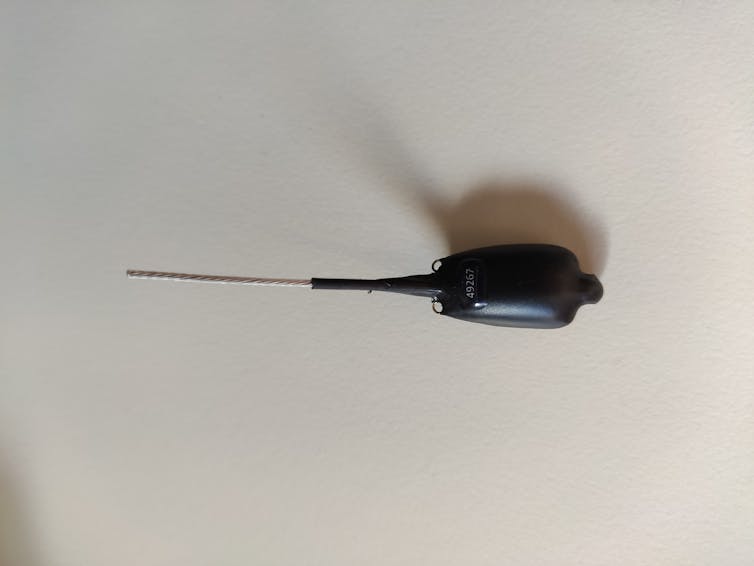
We trained a group of local magpies to come to an outdoor, ground feeding “station” that could either wirelessly charge the battery of the tracker, download data, or release the tracker and harness by using a magnet.
The harness was tough, with only one weak point where the magnet could function. To remove the harness, one needed that magnet, or some really good scissors. We were excited by the design, as it opened up many possibilities for efficiency and enabled a lot of data to be collected.
We wanted to see if the new design would work as planned, and discover what kind of data we could gather. How far did magpies go? Did they have patterns or schedules throughout the day in terms of movement, and socialising? How did age, sex or dominance rank affect their activities?
All this could be uncovered using the tiny trackers – weighing less than one gram – we successfully fitted five of the magpies with. All we had to do was wait, and watch, and then lure the birds back to the station to gather the valuable data.

It was not to be
Many animals that live in societies cooperate with one another to ensure the health, safety and survival of the group. In fact, cognitive ability and social cooperation has been found to correlate. Animals living in larger groups tend to have an increased capacity for problem solving, such as hyenas, spotted wrasse, and house sparrows.
Australian magpies are no exception. As a generalist species that excels in problem solving, it has adapted well to the extreme changes to their habitat from humans.
Australian magpies generally live in social groups of between two and 12 individuals, cooperatively occupying and defending their territory through song choruses and aggressive behaviours (such as swooping). These birds also breed cooperatively, with older siblings helping to raise young.
During our pilot study, we found out how quickly magpies team up to solve a group problem. Within ten minutes of fitting the final tracker, we witnessed an adult female without a tracker working with her bill to try and remove the harness off of a younger bird.
Within hours, most of the other trackers had been removed. By day 3, even the dominant male of the group had its tracker successfully dismantled.
We don’t know if it was the same individual helping each other or if they shared duties, but we had never read about any other bird cooperating in this way to remove tracking devices.
The birds needed to problem solve, possibly testing at pulling and snipping at different sections of the harness with their bill. They also needed to willingly help other individuals, and accept help.
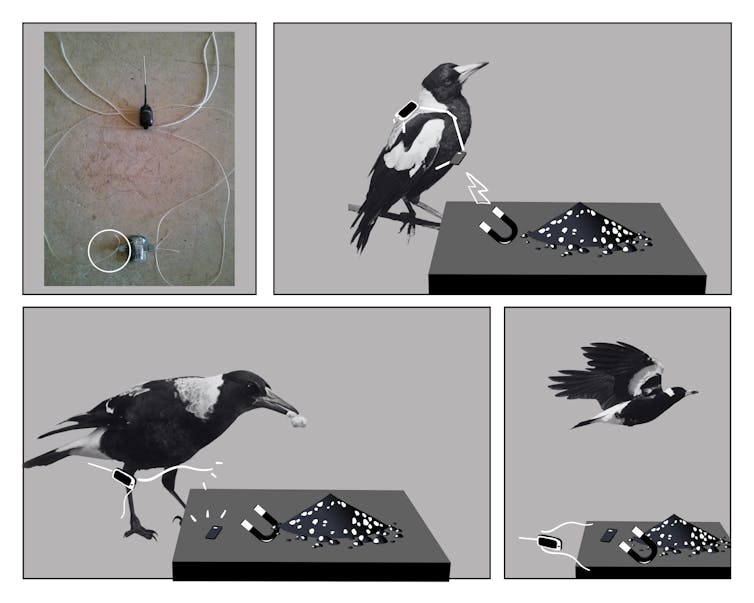
The only other similar example of this type of behaviour we could find in the literature was that of Seychelles warblers helping release others in their social group from sticky Pisonia seed clusters. This is a very rare behaviour termed 'rescuing'.
Saving magpies
So far, most bird species that have been tracked haven’t necessarily been very social or considered to be cognitive problem solvers, such as waterfowl and raptors. We never considered the magpies may perceive the tracker as some kind of parasite that requires removal.
Tracking magpies is crucial for conservation efforts, as these birds are vulnerable to the increasing frequency and intensity of heatwaves under climate change.
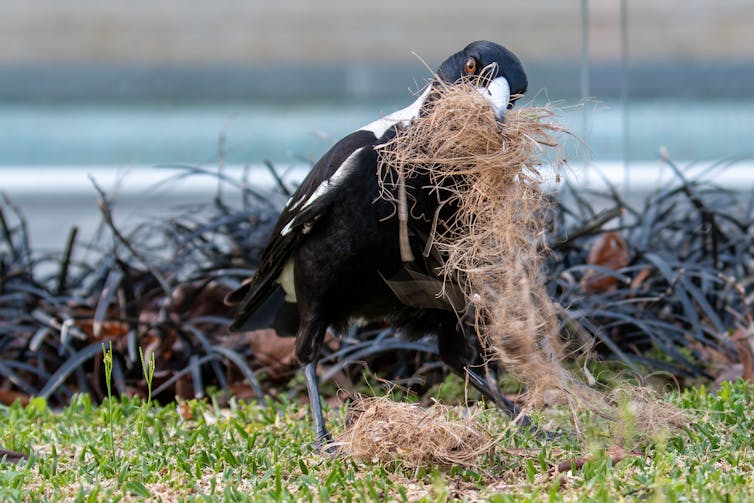
In a study published this week, Perth researchers showed the survival rate of magpie chicks in heatwaves can be as low as 10%.
Importantly, they also found that higher temperatures resulted in lower cognitive performance for tasks such as foraging. This might mean cooperative behaviours become even more important in a continuously warming climate.
Just like magpies, we scientists are always learning to problem solve. Now we need to go back to the drawing board to find ways of collecting more vital behavioural data to help magpies survive in a changing world. ![]()
Dominique Potvin, Senior Lecturer in Animal Ecology, University of the Sunshine Coast
This article is republished from The Conversation under a Creative Commons license. Read the original article.
Toxic: The rotting underbelly of the Tasmanian salmon industry
Richard Flanagan provides a depressing description of the Tasmanian salmon farming industry in 189 pages.
This review looks at environmental problems associated with salmon farming but the author delves into regulatory capture, unbelievable cooperation of the Tasmanian government with salmon farmers, bullying and intimidation, and the ineffectiveness of residents’ complaints. He has done a fine job of alerting us to the unseen, loosely regulated salmon ‘farming’ industry currently degrading Tasmanian waters.
Despite there being no index, table of contents, chapter headings nor map, there are 270 mercifully consecutive references.
Flanagan has publicised his findings on radio, TV and in print; maybe you have heard his arguments.
After you read Toxic I believe you will not purchase Tasmanian farmed Atlantic salmon.
The beginnings
In 1985 the Robin Gray government established Saltas (Salmon Enterprises of Tasmania) with the government as majority owner. Norwegian advisors noted that, apart from one or two experimental pens, the D’Entrecasteaux Channel was too shallow and its flow too weak to disperse the tonnes of sludge produced.
By 2005 Tassal had the ear of the minister and the regulators were captured. More and more salmon farming operations have been permitted with the latest in 2018.
In 2002 from his home on the west side of North Bruny Island, Flanagan detected a small salmon farm. He has seen the gradual degrading of the D’Entrecasteaux Channel. Impacts have been:
- a decline in fish, abalone and other species
- green algal blooms that threaten internationally significant seagrass beds
- TasWater has had to upgrade water filtration systems
- increased risk that algal blooms that cause hypoxia could draw toxic heavy metals into the marine ecosystem
Location of salmon farms

Environmental harm from feed production
Tassal has said that 1.73 kg of wild fish are needed to produce 1 kg of salmon; one-quarter of wild fish caught are estimated to feed farmed fish. Wild fish are reduced to fishmeal in order to feed farmed fish!
Most of the high-protein plant material in salmon feed is grown in Australia, but not soy. Soy cultivation is driving deforestation in the Amazon and in the Cerrado in Brazil.
Harm to humans
The argument that we must farm salmon in order to feed the hungry world falters if you remember that when whole grains fit for humans are fed to animals, and then animal parts fed to fish, less than 10% of the energy in the grains may be converted into edible protein. Never mind questionable health effects of consuming antibiotics fed to fish, nor synthetic astaxanthin, derived from petrochemicals, used to pinken salmon flesh.
Cruelty to animals
Fish farms are in reality gigantic floating feedlots. Chapter 4 details the cruelty involved – majestic creatures reduced to circling in crowded cages of poo and ammonia.
Tasmania’s fur seals like to eat salmon. The salmon industry seeks to get rid of this protected species, by trapping or firing ‘beanbags’ full of lead pellets at them or releasing loud noise bombs.
Pollution and jellyfish
Flanagan correlates the transformation from a diverse healthy ecosystem to the polluted, sick monoculture left by fish farms with a proliferation of jellyfish. Jellyfish kill native fish species and harm oysters, mussels, scallop, clam, sponges and polyps.
Plastic pollution
Salmon pens are made of rigid plastic pipe scaffolding, netting, pulleys, stanchions, handrails, walkways; and kilometres of nylon rope. This loose plastic is difficult to see, floating on the surface where it causes collisions with boats. Plastic pollution litters once-pristine beaches and coastlines.
Toxic: The rotting underbelly of the Tasmanian salmon industry by Richard Flanagan, Penguin books
Reviewed by Margery Street
Hibbert’s flowers and Hitler’s beetle – what do we do when species are named after history’s monsters?
'What’s in a name?', asked Juliet of Romeo. 'That which we call a rose by any other name would smell as sweet.'
But, as with the Montagues and Capulets, names mean a lot, and can cause a great deal of heartache.
My colleagues and I are taxonomists, which means we name living things. While we’ve never named a rose, we do discover and name new Australian species of plants and animals – and there are a lot of them!
For each new species we discover, we create and publish a Latin scientific name, following a set of international rules and conventions. The name has two parts: the first part is the genus name (such as Eucalyptus), which describes the group of species to which the new species belongs, and the second part is a species name (such as globulus, thereby making the name Eucalyptus globulus) particular to the new species itself. New species are either added to an existing genus, or occasionally, if they’re sufficiently novel, are given their own new genus.
Some scientific names are widely known – arguably none more so than our own, Homo sapiens. And gardeners or nature enthusiasts will be familiar with genus names such as Acacia, Callistemon or Banksia.
This all sounds pretty uncontroversial. But as with Shakespeare’s star-crossed lovers, history and tradition sometimes present problems.
What’s in a name?
Take the genus Hibbertia, the Australian guineaflowers. This is one of the largest genera of plants in Australia, and the one we study.
There are many new and yet-unnamed species of Hibbertia, which means new species names are regularly added to this genus.
Many scientific names are derived from a feature of the species or genus being named, such as Eucalyptus, from the Greek for 'well-covered' (a reference to the operculum or bud-cap that covers unopened eucalypt flowers).
Others honour significant people, either living or dead. Hibbertia is named after a wealthy 19th-century English patron of botany, George Hibbert.
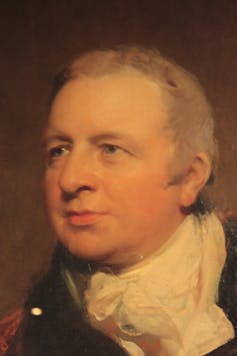
And here’s where things stop being straightforward, because Hibbert’s wealth came almost entirely from the transatlantic slave trade. He profited from taking slaves from Africa to the New World, selling some and using others on his family’s extensive plantations, then transporting slave-produced sugar and cotton back to England.
Hibbert was also a prominent member of the British parliament and a staunch opponent of abolition. He and his ilk argued that slavery was economically necessary for England, and even that slaves were better off on the plantations than in their homelands.
Even at the time, his views were considered abhorrent by many critics. But despite this, he was handsomely recompensed for his 'losses' when Britain finally abolished slavery in 1807.
So, should Hibbert be honoured with the name of a genus of plants, to which new species are still being added today – effectively meaning he is honoured afresh with each new publication?
We don’t believe so. Just like statues, buildings, and street or suburb names, we think a reckoning is due for scientific species names that honour people who held views or acted in ways that are deeply dishonourable, highly problematic or truly egregious by modern standards.
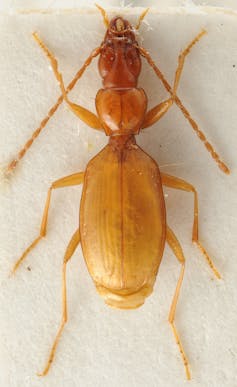
Just as Western Australia’s King Leopold Range was recently renamed to remove the link to the atrocious Leopold II of Belgium, we would like Hibbertia to bear a more appropriate and less troubling name.
The same goes for the Great Barrier Reef coral Catalaphyllia jardinei, named after Frank Jardine, a brutal dispossessor of Aboriginal people in North Queensland. And, perhaps most astoundingly, the rare Slovenian cave beetle Anophthalmus hitleri, which was named in 1933 in honour of Adolf Hitler.
This name is unfortunate for several reasons: despite being a small, somewhat nondescript, blind beetle, in recent years it has been reportedly pushed to the brink of extinction by Nazi memorabilia enthusiasts. Specimens are even being stolen from museum collections for sale into this lucrative market.
Aye, there’s the rub
Unfortunately, the official rules don’t allow us to rename Hibbertia or any other species that has a troubling or inappropriate name.
To solve this, we propose a change to the international rules for naming species. Our proposal, if adopted, would establish an international expert committee to decide what do about scientific names that honour inappropriate people or are based on culturally offensive words.
An example of the latter is the many names of plants based on the Latin caffra, the origin of which is a word so offensive to Black Africans that its use is banned in South Africa.
Some may argue the scholarly naming of species should remain aloof from social change, and that Hibbert’s views on slavery are irrelevant to the classification of Australian flowers. We counter that, just like toppling statues in Bristol Harbour or removing Cecil Rhodes’ name from public buildings, renaming things is important and necessary if we are to right history’s wrongs.
We believe that science, including taxonomy, must be socially responsible and responsive. Science is embedded in culture rather than housed in ivory towers, and scientists should work for the common good rather than blindly follow tradition. Deeply problematic names pervade science just as they pervade our streets, cities and landscapes.
Hibbertia may be just a name, but we believe a different name for this lovely genus of Australian flowers would smell much sweeter.
This article was co-authored by Tim Hammer, a postdoctoral research fellow at the State Herbarium of South Australia.![]()
Kevin Thiele, Adjunct Assoc. Professor, The University of Western Australia
This article is republished from The Conversation under a Creative Commons license. Read the original article.
Nothing but bad news for Warragamba Dam’s wall raising project
There have been several items of news that are making the Warragamba Dam project look increasingly less likely to proceed. Nevertheless, Stuart Ayres, the Minister for Western Sydney, is still determined to go ahead. He has dismissed the objections about the impacts on biodiversity and cultural heritage as unimportant. He argues that the flood mitigation that the wall raising is meant to achieve is vital.
The project is not the panacea that he promotes. The dam does not hold back flood waters from the several rivers below the dam that can flood the Hawkesbury Nepean Valley.
The insurance industry has suggested that houses on land that ‘should have never been developed’ below the 1 in 100 year flood level could be resumed. The cheaper mitigation option is to improve the roads and other infrastructure so it will be easier to escape a flood.
Several NSW government agencies have attacked the Environmental Impact Assessment (EIS) prepared by WaterNSW that was released in September, for example:
- the Environment, Energy and Science division of the Department of Planning noted that WaterNSW’s evaluation of the project’s impact on World Heritage values is based on ‘incorrect assumptions’
- the assessment of aquatic ecology had failed to identify that raising the dam wall would result in inundation of about 284 km of rivers and streams during floods
- the EIS' conclusion that the project would have minimal impact on threatened species was ‘not supported by the data or evidence’
- Heritage NSW's response to the EIS indicates that the assessment underestimated the area’s cultural significance, saying the impact to Aboriginal cultural heritage values would be ‘significant’
The International Union for the Conservation of Nature reported this month that the Greater Blue Mountains would be likely to lose their World Heritage status if it went ahead. They wrote to the federal government last month expressing their concerns about the EIS.
The assessment process is in the hands of the NSW government under the bilateral agreement with the Commonwealth, an arrangement that has been a cause for concern. Over 2000 submissions were received during the consultation period of which only 45 were in favour of the project.
Now the NSW government will have to do more work on the EIS, a process that will cost a lot more taxpayers’ money.
Peat Island development proposal at odds with Hawkesbury landscape
As one drives north along the M1 towards Gosford and cross the Hawkesbury River Bridge one has magnificent views of the river and the dense bushland on the surrounding hillsides.
Heading south there is a spectacular view of the sandstone cliffs created by the river and the cuttings that were made to build the freeway that now allows easy access from the Central Coast to the metropolis of Sydney.
To the east there are two islands, Long and Spectacle. The natural values of the whole area are preserved as all these lands are national parks or nature reserves. The only development is low key with some houses clinging to the water’s edge or on available flat land such as in Brooklyn, Mooney Mooney and Dangar Island.
There is one area of development that has stood untouched for many years on Peat Island. This island originally housed a centre for treatment of alcoholics that was opened in 1910. It was later a general psychiatric hospital and a residential care centre for people with intellectual disabilities. It was closed in 2010 in line with the government policy to close down large institutional care centres. There are many historic buildings on Peat Island plus a chapel on the east side of the M1.
The nearby lands are the only flat areas available on the Lower Hawkesbury for community use. They provide access and views for the Lower Hawkesbury. In addition, the area contains many sites of cultural, heritage and spiritual significance to Indigenous and non-indigenous Australians.
The NSW government has been trying to sell off the land on Peat Island and on the narrow peninsula adjoining it near the M1 and Pacific Highway. In 2014 they proposed the development of 450 houses, mostly medium density building plus retail, tourism and community facilities. Fortunately it was knocked it back. It was totally inappropriate to have so much development in an area with no public transport or employment opportunities. The dwellings could end up being mostly holiday houses and make no contribution to housing needs.
The Central Coast Council is currently considering a new concept plan proposal from the Department of Planning. This still has a significant amount of residential development on the land alongside the M1 with 105 houses and townhouses and medium density buildings with up to three stories with 162 apartments.
Peat Island would be transformed into a tourism and accommodation precinct, with supporting cafes, restaurants and the like to be accommodated in retained historic buildings and the addition of new buildings.
The chapel on the eastern side of the M1 has pedestrian access to Peat Island via an underpass. The precinct includes several historic cottages. The plan is to adaptively repurpose these buildings for community use plus the possibility of a community centre. However the whole area would be surrounded by some of the new housing.
There is also a possibility of a marina that Hornsby Council’s submission explains would cause several environmental issues such a damaging the estuarine mangrove environment and disturbing sediment contamination including asbestos.
These issues are apart from the fact that it would be totally out of keeping with the scenic landscape of the Lower Hawkesbury.
Hornsby Council’s submission also points out this level of development in an isolated area will exacerbate existing inadequate water and sewage management and parking facilities and cause traffic congestion.
The local groups opposing the plans are the Central Environment Network and Dyrarubbin Peat Island Association. Their view is that the concept plan lacks the vision and depth expected for an iconic site of regional, state and national significance. Dyarubbin is the First Nations Darug people’s name for the Hawkesbury River.
STEP believes the land should be developed for a world class park as the natural, cultural, heritage, aesthetic, social and recreational values of the site far outweigh the value as a residential area. This park should link the historic buildings and landscape of Peat Island to the broad sweeping landscape west of the M1 and to the intimate space of the chapel precinct. The historic buildings of Peat Island can be sensitively repurposed for cafes, cultural centres, museums, and a marine/ estuarine research centre. The proposed housing in the chapel precinct should be deleted as it severely impacts the curtilage of this building.
Submissions closed just prior to Christmas. We hope that common sense prevails. The NSW government has created some outstanding public parks such as Bicentennial Park at Homebush Bay. This Peat Island Park could be another example.
Final chapter of SAN development
The Wahroonga Estate was acquired by the Seventh-day Adventist Church in 1898 when the land was just an orchard. The land was then developed by the Seventh-day Adventist Church with the hospital, church and administration buildings.
A major redevelopment was planned in 2008. Plans have now been submitted to Ku-ring-gai Council for the final stage of this development on the San Hospital site. The concept plan for the developments was approved in 2010 by the Department of Planning under the controversial Part 3A process under the Environmental Planning and Assessment Act that took consultation out of the hands of councils and the community. Nevertheless, the plan ended up being significantly smaller than the original application submitted in early 2007.
STEP, the local community and local councils strongly opposed the plans. The department ruled that several reports submitted by the developer engaged by the SAN were inadequate.
The final stage covers the construction of four apartment buildings, one on Fox Valley Road and three behind the school with an access road from Fox Valley Road with traffic lights.
The design is for 178 apartments with 222 car parking spaces plus visitor parking. The approved plan was for 200 apartments in five buildings but, following Adventist school and local community consultation, more open space was allocated for use by the school.
A new set of traffic lights will be built near the entrance to the school and apartment complex. This is only a couple of hundred metres from the traffic lights at the entry to the hospital. Despite the claims that the new development will not worsen the current congestion this seems implausible.
Biodiversity management plan
During the prolonged approval process it was found that the ecological reports commissioned by the developer Johnston Property Group were seriously inadequate.
Ku-ring-gai Council vegetation mapping showed that proposed new housing on the eastern side of Fox Valley Road and creation of a new road would have destroyed one of the finest examples of vegetation transition from shale to sandstone soils. Also the vegetation mapping of the whole site confirmed that there were significant areas of critically endangered Sydney Turpentine Ironbark Forest and Blue Gum High Forest. The integrity of these areas would have been damaged by asset protection zone requirements.
When the mapping was corrected the areas of STIF and BGHF were sufficient to alert the federal Department of Environment (whatever it was called at the time – see note) of the potential damage to these critically endangered ecological communities under the Environment Protection and Biodiversity Conservation Act. The department ruled that the development was indeed a significant risk and made the development a ‘controlled action’. This means that the biodiversity management is subject to regular review and is detailed in a biodiversity management plan.
In the end the reduction in the residential development areas increased the bushland area from 18 ha to 34.1 ha, all zoned as E2, environmental conservation. The Adventist Church is responsible for implementation of the biodiversity management plan. A volunteer group called Wahroonga Waterways Landcare group managed by Adventist Aged Care also assists.
There is a huge amount of work to be done to restore the areas that were neglected for many years. However, the area along Coups Creek is magnificent bushland and is open to the public to enjoy. The area on the eastern side of Fox Valley Road is more problematic as a large part of it was reserved as a corridor for the freeway linking the F3 and M2 that was finally abandoned in 1995 (see Coalition Against the Lane Cove Valley Freeway 1988 to 1995: An Amazing Community Achievement. Some of this land is still owned by the NSW Department of Planning that doesn’t appear to be taking any action to control weeds like lantana and ochna.
Note on names of Australian government environment department
2010–16, Department of Environment, Water, Heritage and Arts
2016–20, Department of Environment and Energy
2020 to present, Department of Agriculture, Water and the Environment
Powerful Owl Project reaches a landmark
It is ten years since the Powerful Owl Project was initiated under the auspices of Birdlife Australia. This highly successful project aims to involve the general public in discovering information about the Powerful Owl population, their location and behaviour and carry out research into their health and habitat needs.
The intrepid citizen scientists have far exceeded the original expectation of finding 50 territories in Greater Sydney and surrounds; the total now is over 250. Their observations have contributed enormously to the understanding of the ecology of the Powerful Owl in the urban environment.
Here are some extracts from the newsletter that documents the experience of the last 10 years or so.
Breeding success
It’s been a good breeding season for our urban owls, with 95 successful breeding sites and 157 chicks fledged, up from 121 chicks fledged last year. It’s been a good year for double chick clutches, with 65.3% of clutches having two chicks, up from 39.5% last year. The table below gives an overview of the breeding season stats for the past few years.

Research into nesting hollows
We know Powerful Owls need large tree hollows to breed, but we don’t know much about the environmental conditions inside the hollows where successful breeding takes place.
In March 2021, data loggers were installed in 11 known Powerful Owl nesting hollows across the Sydney Basin, funded through Cumberland Bird Observers Club. The data loggers measured the temperature and humidity levels in the hollows during the breeding season and were retrieved again in November. A huge thank you to Kai Wild, arborist and environmental campaigner, who installed and retrieved the loggers.
Powerful Owls successfully use both dead trees and live trees for nesting. We had hoped to install the data loggers in a representative sample of each, but the dead trees proved too dangerous to climb.
We are rapidly losing our old, hollow-bearing trees through land clearing, bushfires, drought, safety concerns and natural attrition. A hollow suitable for a Powerful Owl to breed in takes 150 to 500 years to form. At current rates of loss, scientists have estimated that in 95 years there will be no suitable tree hollows left in the urban space that can accommodate the breeding of Powerful Owls.
The results of the analysis will be available in January 2022. They’ll help inform land management decisions around the retention of hollow bearing trees and help guide attempts to design artificial nesting structures for Powerful Owl. To date, all attempts have been met with owly disdain, other than on one occasion where the owls successfully fledged a chick from a nest box but have not returned to it in subsequent seasons.
Mortality
Sadly there were 82 death and injury events recorded in 2021. 85% of these birds were either killed outright or died in care due to their injuries. For all reports we received we collated all the information we could on where the bird was found, what the physical signs were and, where possible, bodies were collected and necropsied.
These numbers are, sadly, more than double that of 2020, largely due to a doubling in reported cases of motor vehicle accidents and an increase in death or injury from animal attack or from unknown cause. Of course, as people become aware of the ability to report incidents then of course reporting to us increases so it is difficult to determine just yet whether these events are increasing, or people are simply more aware of how to report them.
What we do know though is that motor vehicle accidents continue to be the largest single cause of death and injury in our urban owls with 39% of reported injuries/deaths in 2021 and 50.4% of injuries/deaths in our records since 2012.
What to do if you find an injured or dead owl
If you find an injured Powerful Owl do not attempt to rescue the owl yourself, for the safety of both yourself and the owl. The rescue of raptors requires specialist training and handling.
Assess the environment for any potential danger to yourself. Check if there are any immediate threats to the owl. Take note of your location (GPS coordinates or address). Then call a specialist wildlife rescue organisation and they will talk to you, assess the situation, and decide what action needs to be taken.
If you’re in the Sydney Metropolitan Area, please call either of the following (both available 24 h day, every day of the year):
- Sydney Wildlife Rescue on 9413 4300
- WIRES on 1300 094 737
If you find a dead Powerful Owl, please let someone know, as knowing how many Powerful Owls are dying, and where and why they are dying, is important for our understanding of how to support the survival of the species.
Rodenticides
The use of rodent poisons is a major concern for the survival of all raptor species. Of particular concern is what are called second-generation anticoagulant rodenticides (SGAR). These are rat poisons with the active constituents of brodifacoum. Studies of dead Powerful Owls has shown that we can add Powerful Owls to the more than 40 Australian animals and bird species that are poisoned by these products.
There is more work to come, but early results from our research are alarming and is why we will be pushing forward with this research and actively campaigning for the removal of these second-generation rat poisons from public sale. From our first batch of testing we have found:
- 37 of the 38 samples showed an anticoagulant rodenticide was present.
- The most common rodenticide present was brodifacoum. Brodifacoum is a SGAR, the most persistent anticoagulant rodenticide registered for use in Australia, and is the most common one used in rat poisons available on hardware and supermarket shelves.
- Nearly 60% of Powerful Owls tested had levels high enough to cause impairment. This likely puts these birds at greater risk of other threats such as being hit by vehicles – the leading cause of death we are seeing in these Sydney birds.
- An additional 10.5% had AR levels high enough to kill the bird outright.
How you can help
As the largest hardware retailer, Bunnings can be leaders in the market by removing a huge source of poison from their shelves and instead providing consumers with alternatives that are just as effective.
Sign our petition, but also use our Bunnings finder to (politely and respectfully) call your local Bunnings store and let them know you are concerned about this issue. We even have a script for you to use.
Powerful Owl Coalition
STEP is a member of the Powerful Owl Coalition, a group of northern Sydney environment groups that aims to promote improvement in habitat for Powerful Owls. We have been working with Dr Beth Mott the head of the project for the past five years. Sadly she has moved to another job. We greatly appreciated her extensive knowledge and assistance with our work.
News from another STEP
We have a rival? Well actually no! The Southern Tablelands Ecosystems Park has very similar interests to ours. The Park is a regional botanic garden, education and conservation centre demonstrating southern tablelands species within the National Arboretum Canberra (Forest 20).
The arboretum is a great scenic place to visit in Canberra. Its current layout was created after a radiata pine plantation was burnt out in the 2003 bushfires. There was already some forests on the site that had been established under Walter Burley Griffin’s plans for an arboretum. The plan is to create 100 forests and 100 gardens focussing on threatened, rare, and symbolic trees from around the world.
The site has been planted since 2005, and includes ceremonial trees planted by visiting heads of government and ambassadors.
Forest 20 differs from the other single species forests. STEP is growing 16 species of eucalypt trees, selected to represent the major vegetation types of the region; and it includes shrubs, herbs and grasses to demonstrate the understorey plants commonly found in the region’s forests and woodlands.
The STEP forest is an educational resource where visitors and school students can easily identify the trees and plants typical of the Southern Tablelands. Of particular significance are the trees and plants of the critically endangered Yellow Box/Red Gum Grassy Woodland ecosystem.
Forest 20 is managed by the STEP community group in partnership with the National Arboretum Canberra and welcomes individuals, community groups, schools and others to join this exciting project. STEP have regular working bees and other activities.
If you are ever in Canberra with some spare time, perhaps you should pay them a visit.
Book review: Tapestries of Life
There are many books dedicated to nature and the environment, most of them good, some very good, but this one is outstanding.
The author is a professor at the Norwegian University of Life Sciences and her previous book Extraordinary Insects made it to the Sunday Times best seller lists. Her special interests and research lie in forest ecology and in the role played by insects, fungi and other creatures in interacting with forest plants to create a natural living web. This is especially important in old growth forests whose biodiversity goes far beyond trees into the huge range of species that inhabit and live off not just the living trees but also dead, rotting wood or mouldy leaf litter. And here was a big surprise, her homeland of Norway, a timber producer, apparently has hardly any old growth forests left, most existing ones being sustained or created by managed regrowth and plantings. Lots of comments and thoughts to ponder in this topic on how we manage and respect our own old growth forests and natural world in general.
But this is far from the whole story in the book. It extends across an amazing array of animals and plants and their interactions, from Brazil nuts that require the unique orchid bee to pollinate, to fig wasps, to incredibly ‘intelligent’ slime moulds and to our own (probably extinct) gastric brooding frogs. And she goes quite a bit into the biopharmaceutical story too, from the blue blood of horseshoe crabs to a jellyfish called Turritopsis that can reverse its life cycle back to the polyp stage and can therefore technically live forever.
And a word about the style, which if it wasn't up to it could drag a book like this down into the dumps and make it heavy going however fascinating the content. Yes, she really does write well, and she acknowledges her English translator too who carries some share of the top marks for the final product.
Anne Sverdrup-Thygeson, Mudlark (Harper Collins), paperback 344 pp, $27.99
Reviewed by John Martyn
Book review: Mountains: Over Australia's Blue Horizon
I can't quote a price for this book because it was a gift or rather a swap. I met the author socially at a publishing friend's lunch – he received a copy of Rocks and Trees in return though I possibly got the better half of the deal!
The author Alasdair McGregor has multiple credits to his name, he is an architect, artist, writer, photographer, expeditioner and historian of Australian explorers and pioneers.
This book, Mountains, was created on request by the National Library following highly regarded previous works like Frank Hurley: A Photographer's Life and Mawson's Huts: An Antarctic Expedition Journal.
I warmed to this book because of a personal preference for ranges like the Snowies and Blue Mountains over ‘real mountains’ like the Swiss Alps. He quotes Sir Edmund Hillary's well known comment that Tasmania's Federation Peak is ‘Australia's only mountain.’ Jagged and formidable though it is only 1,224 m high, hardly on a world scale in elevation. But that isn't really the issue in our continent where ranges like the Blue Mountains and the high peaks of North Queensland were formidable barriers to early settlers and explorers whether in terms of terrain, vegetation or in getting on with the locals.
The style of description in the various chapters is broad and framed in a historical sense because to learn what it was like to traverse Australian mountain country in early settler days is a vivid introduction, and in the case of the Snowies, to follow through their history that included early cattle grazing, Von Mueller's botanical visits, gold mining, early skiing pioneers and the Snowy Mountains scheme paints a vivid picture. Though this is embellished with the sad accounts of threats to wildlife like the Bogong Moth and mountain pygmy possum, to wildfires and to the plague of wild horses. But the Snowies is a classic illustration that on our so-called flat continent we have alpine vegetation above the tree line in one corner and tropical rainforest in others. And our fractious summers bring both tropical mangos and cool climate cherries in abundance.
Some of Australia's mountain country he describes in the book I know well, like the Hamersley Ranges through years of geological fieldwork. But the chapter I probably enjoyed most was on country I don't know; the chapter on the high mountain peaks of far north-east Queensland where cloud forests with native rhododendrons are unique on our continent but threatened by climate change. And where it rains like you wouldn't believe. He also has vivid personal stories to tell from his experiences on Heard Island where he was in the first party to climb the awesome peak of Big Ben. He still regards that island as his most beautiful place.
Alasdair McGregor, NLA publishing (National Library of Australia); hardback, 268 pp
Reviewed by John Martyn
More...
Book review: A Wide and Open Land: Walking the Last of Western Sydney’s Woodlands
As one who enjoys long bushwalks and studying nature, having walked as a ‘swaggie’ from Yuleba to Surat along the Cobb and Co coach route in 2018 and having walked 48 km in one exhausting day and night from a bogged vehicle in isolated Chesterton National Park, south west Queensland, I was very keen to grab hold of a copy of this recent book. Not only to read about Peter’s incredible walking journey but to learn about the natural history and cultural history of the huge Cumberland Plain which comprises much of western Sydney.
Living and working in Ku-ring-gai means I have become accustomed to the Hawkesbury Sandstone environs, but the fauna, flora and history of the Cumberland Plain still remains a mystery to me.
In the winter of 2019 ecologist Peter Ridgeway set out to walk 179 km across the Cumberland Plain, the region of rural land west of Sydney. Carrying his food and water and camping under the stars, he crossed one of the least-known landscapes in Australia, all within view of our largest city. I think he was as ‘game as Ned Kelly’ to undertake this venture in an area that is much under-loved for its amazing nature and today more valued as a dormitory for greater Sydney.
This well-illustrated book recounts a unique journey across a landscape few Australians will ever see. In this open country the familiar forests of Sydney’s sandstone are replaced by a fertile world of open woodlands, native grasslands and wetlands – known as the Cumberland Plain, home to some of the nation’s most unique and endangered wildlife. The Cumberland Plain is the traditional land of the Darug, Gundungurra and Dharawal peoples, and the birthplace of the first Australian colony and it is a landscape which also holds the key to our entwined and conflicted origins.
What was once a limitless tract of woodland is now being engulfed by the city to the east, in the largest construction project ever undertaken in the Southern Hemisphere – the near elimination of an ecosystem and a past community.
This book provides a detailed immersion into the history, wildlife, and culture of one of Australia’s most rapidly vanishing landscapes, and reveals how the destruction of ‘the west’ is erasing not only itself, but we are losing something central to the identity of all Australians.
Peter Ridgeway is a highly experienced biodiversity scientist and land manager for this remarkable area and his knowledge of the Cumberland Plain is fully reflected in his writings – almost a lament for the times when he grew up in the area when times were better – at least through his childhood eyes.
Peter’s book is literally a landscape memoir, nature guide and a detailed history narrative – all rolled into one amazing book. It has similarities to the late Eric Rolls history of the Pilliga A Million Wild Acres.
In addition to a very informative text, the detailed trip maps and lovely photographs add so much to the volume.
As stated by N Scott Momaday:
Once in his life a man ought to concentrate his mind upon the remembered earth, I believe. He ought to give himself up to a particular landscape in his experience, to look at it from as many angles as he can, to wonder upon it, to dwell upon it. He ought to imagine that he touches it with hands at every season and listen to the sounds that are made upon it. He ought to imagine the creatures there and all the faintest motions of the wind. He ought to recollect the glare of the moon and the colours of the dawn and dusk.
Peter Ridgeway has admirably achieved all of this in his wonderful landscape memoir. Please purchase a copy, you will not be disappointed!
Peter A. Ridgeway ($50) from the author (This email address is being protected from spambots. You need JavaScript enabled to view it.) or Nokomis (03 5774 7083 or This email address is being protected from spambots. You need JavaScript enabled to view it.)
Reviewed by Mark Schuster, Bushfire Technical Officer/Fire Ranger, Ku-ring-gai Council and NCC bushfire representative for Hunters Hill, Lane Cove, Parramatta and Ryde Bush Fire Management Committee
Annual Report for the Year to October 2021
Welcome to the annual report on the 43rd year of operation of STEP Inc. Because of the COVID-19 pandemic, 2021 has turned out to be similar to 2020. Many more people have been getting out in the bush and discovering our maps and books, membership has again increased and our walks and talks program has been severely curtailed. We hope to be able to go back to normal in 2022.
On the environment front some bold decisions have been made by the NSW government but the federal government is as recalcitrant as ever. There has also been plenty of activity at the local level with councils putting out many plans and policies for consultation.
Talks
The restrictions on group activities imposed to control the spread of the COVID-19 virus have meant that we have held only one talk. In March Professor Culum Brown gave a fascinating talk about shark behaviour that highlighted the damage being caused to marine life by shark nets when there are more effective methods of shark control available.
We look forward to the Zoom talk after the 2021 AGM by Mark Schuster from Ku-ring-gai Council on balancing fire management and biodiversity protection.
Shane Fitzsimmons, Commissioner of Resilience, has agreed to give a talk but this has had to be postponed to a date to be decided early next year.
Walks
We were able to hold a few walks before the COVID lockdown in June. We hope to resume the program in February next year subject to the COVID guidelines.
We thank Peter Clarke for his enthusiastic leadership of the introductory walks program. He is not able to continue as he has moved up north. We have a new leader for the introductory walks, David Roberts, who had a great knowledge of the local area.
Membership
We are currently offering a year’s free membership to anyone who buys a book or map. There has been a good response to this offer so our membership is now over 550.
Publications
Sales of our maps have boomed. The South Turramurra Post Office that is close to Lane Cove National Park, has become a successful outlet for map sales.
The supply of Middle Harbour North maps has now run out. We plan to complete a reprint early in 2022. John Martyn is currently checking changes to the tracks shown on the map.
Committee
The STEP committee has, as always, been a great group of people to work with. We owe a huge thank you for all their efforts. Other individuals have been a great help in specialist areas of our operations.
We have had two resignations from the committee. Peter Clarke, as mentioned before, has moved away from the area. We appreciated his help with putting the newsletter onto our website and conducting walks. Anita Andrew has also decided not to nominate as she will be doing lots of travelling. She has done a great job as treasurer checking that our books and banking activities are in order.
We thank Jim Wells for doing the nitty gritty of keeping track of our finances and compiling monthly finance reports.
John Burke and Trish Lynch continue to keep Twitter and Facebook up-to-date and find lots if interesting items to add on a regular basis.
There has been a long list of documents put up by local councils for public consultation. The most significant of these were the Hornsby and Westleigh Park Master Plans and the St Ives Showground Draft Plan of Management. Robin Buchanan, Margery Street and I have put in many hours examining these documents and viewing the sites.
Since our last AGM we have made 17 submissions to local and NSW governments.
Accounts
The net cash balance at the end of the financial year has fallen by $540 despite the increase in publication sales. Revenue has fallen because we waived annual subscriptions in 2020–21 and increased donations to other environmental organisations.
The Environment Protection Fund balance has reduced as the funds are being applied to John Martyn Research Grant. We would like to be able to support more environmental projects so please contact us if you have any ideas. Our general fund can also be used to support educational projects.
Again we thank Allan Donald, Chartered Accountant, for his completion of the audit on a pro bono basis.
Newsletter
We are continuing to publish five issues of STEP Matters, each year with most members receiving a pdf version via email. Links to individual topics are also included in the email and are on our website so anyone can pick out particular articles of interest. These articles also have links to previous articles on related topics.
While the newsletter concentrates on local issues and events we also cover broader national environmental issues that affect us all. We aim to be educational but not too technical. I hope they are of interest, but feedback is welcome. Also, contributions from members about local events and developments can be published in the newsletter or on Facebook.
Environment Protection Fund
We continue to maintain the Environment Protection Fund which has deductible gift recipient status so that donations are tax deductible. The fund’s purpose is to support our environmental objectives. We received a total of $417 in donations in the past financial year.
We received a small number of applications for the John Martyn Research Grant for 2021 and hope there will be more to consider in the future. This grant supports student research in an area relating to the conservation of bushland. The award this year went to a student from the Hawkesbury Institute for the Environment at the University of Western Sydney to assist her study of phosphorus limitation on photosynthesis of a range of native plants.
Education
For many years STEP has been donating a prize in the Young Scientist Awards run by the NSW Science Teachers Association. The selection of a winning project out of a wide range of ecological issues is an interesting exercise. We have not done the judging for 2021 yet as the students have been given more time to complete their projects.
Advocacy
One of the major local issues has been the plans to install synthetic turf in many playing fields in Sydney including two sites in Ku-ring-gai and the Hornsby and Westleigh sites. We have formed a coalition, the Natural Turf Alliance, with groups in several locations in Sydney that are also fighting these projects. The group shares data about the social and environmental impacts of these fields and the low impact alternative of natural grass that can provide plenty of playing hours if planned and maintained properly.
There are many children and young adults at a loose end due to the COVID-19 lockdown. Some individuals with no appreciation of the unique and fragile bushland have been carving out tracks and building jumps. Local councils and national parks are struggling to control this destruction and educate the community about the illegal damage to habitat and wildlife.
It is great to see some positive initiatives being taken by the NSW Minister for Energy and the Environment in creating renewable energy zones and funding to help establish green hydrogen projects and incentives to change to electric vehicles. However the NSW government is still supporting new coal projects and the Pilliga gas project, a puzzling situation. How this can be consistent with their pledge of net-zero greenhouse gas emissions by 2050 is a puzzle.
Conclusion
A community group like STEP works best with many lines of communication. We enjoy a good relationship with other community groups and local council staff. Information sharing is an important part of our work. To that end we appreciate feedback from our members and reports on local issues that we may not be aware of. It is becoming harder to keep track of local developments as the local newspapers have shrunk considerably. Contributions on articles for our newsletter or help with our website are also welcome – please let us know about events and talks.
Jill Green (President)
19 October 2021
Local council elections
Much has been written in the press about the stalemate that developed within Ku-ring-gai Council following the ‘election’ of a new mayor Cedric Spencer in September. There was a 50/50 split in the vote between him and his predecessor Jennifer Anderson, so the standard process is to draw a name out of a hat.
Soon after his election Cedric Spencer’s faction attempted to hold an Extraordinary Council Meeting to review the appointment of the general manager, John McKee, only three months before the election. The opposing faction refused to attend so there was not a quorum present. This situation continued as several more attempts were made to hold this meeting including adding the item to the agenda of the October ordinary meeting. The Minister for Local Government asked for an explanation of the situation but took no further action. As a result of the boycott of the ordinary meeting several council plans will not be progressed until February 2022.
After being postponed from 2020 the local government elections were finally held on 4 December. The outcome in Ku-ring-gai looks promising with several new faces with independent views.
The final results will not be declared until 20 December but it looks likely that STEP‘s new committee member, Greg Taylor, has been successful in the Comenarra Ward. Greg has a keen interest in bushland restoration and conservation and conducts school environmental education programs. Unfortunately he has decided to resign from the STEP committee to avoid conflicts of interest with issues where STEP has made submissions.
Attempts to change National Parks and Wildlife Legislation
In the last parliamentary sitting week of the year the Coalition attempted to legislate some major changes to the National Parks and Wildlife Act without any prior consultation with stakeholders.
The environment NGOs’ opinion of the current Environment Minister, Matt Kean, has been dented. The creation of new national parks, increase in funding and climate change initiatives have been welcomed but these proposals were appalling. Fortunately the NPA, NCC and Colong Foundation were able to work with Labor, the Greens and independents in the Upper House to remove these elements from the Bill.
The good aspects of the Bill formalise prior announcements such as the Assets of Intergenerational Significance (see STEP Matters 212), the creation of the Gardens of Stone State Conservation Area and the use of digital recognition of number plates of vehicles entering national parks and requiring the NPWS to monitor the ecological health of parks.
The bad moves would have conflicted with the purposes and objectives of national parks. They would have created new methods of fund raising such as:
- providing for a trust to accept tax deductible donations to national parks
- creating and trading carbon sequestration rights in national parks
- creating and trading biodiversity credits for works carried out in national parks and reserves
These moves would allow environmental destruction outside parks to be compensated with payments being made to the NPWS. The use of biodiversity credits to offset bushland destruction outside national parks is bad policy. Extending this practice to national park land will only exacerbate the situation.
The other changes proposed would have allowed the minster to shorten the exhibition period for changes to plans of management from 90 to 28 days and approve actions that are inconsistent with an approved plan of management such as building new visitor infrastructure.
There was also a provision in the original bill that would have removed stakeholders such as the National Park Association and Local Government Association from having a role in nominating representatives to the National Parks Advisory Council and regional advisory committees. Fortunately this was removed before the Bill reached parliament.
There is about to be a reshuffle of ministerial positions in the current NSW government. The new environment minister will need to be educated about the importance our national parks and reserves in the conservation of nature and control the push for their commercialisation.
Source: National Parks Association blog post.

